What’s the Best Compact Sedan?
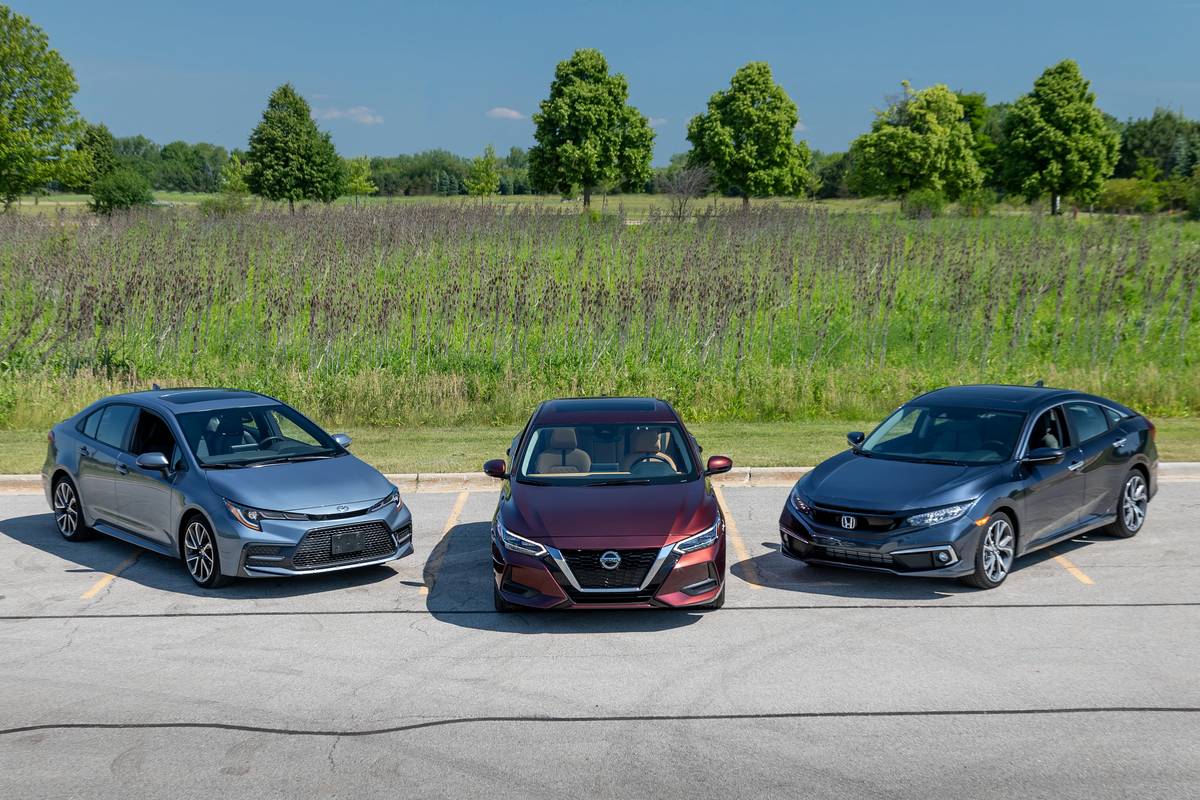
Though many Americans prefer SUVs, the obstinate coronavirus pandemic has put the squeeze on finances, and as we spelled out recently, simply opting for the sedan body style is a great way for shoppers to save a thousand dollars or more on a brand-new vehicle. So we gathered three of the most relevant compact sedans for an abbreviated Cars.com Challenge: the top-selling 2020 Honda Civic, which won a broader contest in 2017 and was refreshed for 2019, and two models redesigned for the 2020 model year, the Nissan Sentra and Toyota Corolla. Given the growing number of subcompacts that have been and will be discontinued in our market, like the Toyota Yaris and Honda Fit, our compact test subjects are more important than ever. In this socially distanced evaluation, the authors rated the contestants in 17 objective and subjective categories.
Here are the specific trim levels and the cars’ final overall rankings:
1. 2020 Honda Civic Touring
2. 2020 Nissan Sentra SV
3. 2020 Toyota Corolla XSE
If you’re the type of shopper who doesn’t sweat the details and wants to take the ranking above and act on it, we can’t really argue, but we’ll point out that our results apply specifically to the vehicles we tested as equipped and priced — not the entire model line. For example, our Civic and Corolla were top trim levels and both had the more powerful of two available engines, while the Sentra SV is the middle of three trims Nissan offers (albeit a well-optioned example of such). Careful shoppers will view our likes and dislikes below for each car and decide what matters most to them.
There were also many similarities. Each car had a four-cylinder engine, continuously variable automatic transmission and front-wheel drive. All three come standard with backup cameras, automatic high-beam headlights and forward collision warning with automatic emergency braking designed to operate at both high and low speeds and to detect pedestrians, as well as with basic driver-assistance tech, such as adaptive cruise control.
All judging categories could earn a maximum of 20 points except driver-assist technology, which is limited to 10 points, and value, which allows a maximum of 40 points. Scoring was pretty tight overall, and not all categories were conclusive. Most notably, Cars.com’s position is that the trunks of these three cars aren’t a determining factor, as reflected in the equal cargo scores. We’ve long reported that manufacturer-supplied cargo specifications are suspect, partly because of the standards and methods — heck, you can’t even compare a trunk directly to a hatchback — so we’ve developed our own means of measuring cargo spaces and determined that the three trunks, when used as normal owners use them, are within 0.6 cubic foot of each other, all close to 20 cubic feet despite wider differences in published manufacturer specs.
The key is to check out the strongest and weakest aspects of the models, laid out below in descending order of importance to their ranking, and find out what’s most important to you using the following graphic showing the various wins and losses at a glance.

3. 2020 Toyota Corolla XSE, 185 points (out of a possible 350)
The verdict: The redesigned 2020 Corolla improves markedly over the previous generation and is sure to satisfy the Toyota faithful, but the features and quality of our test vehicle didn’t justify its as-tested price.
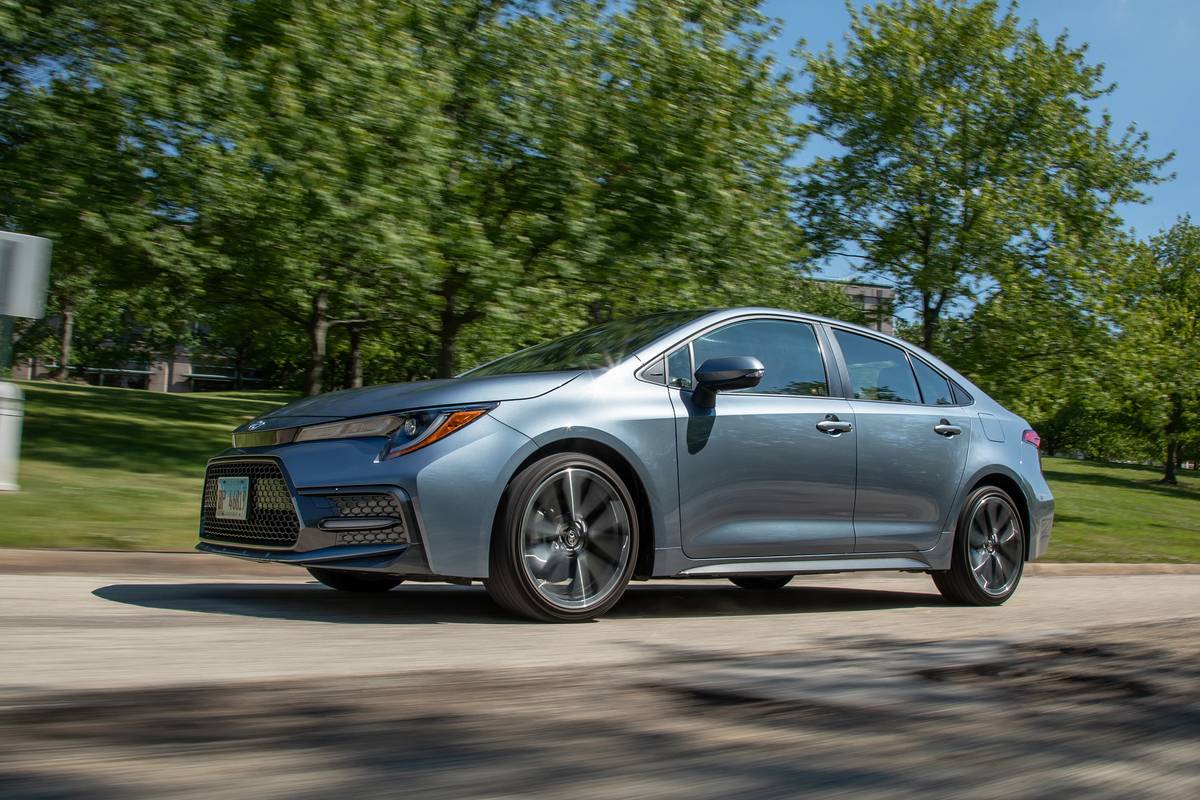
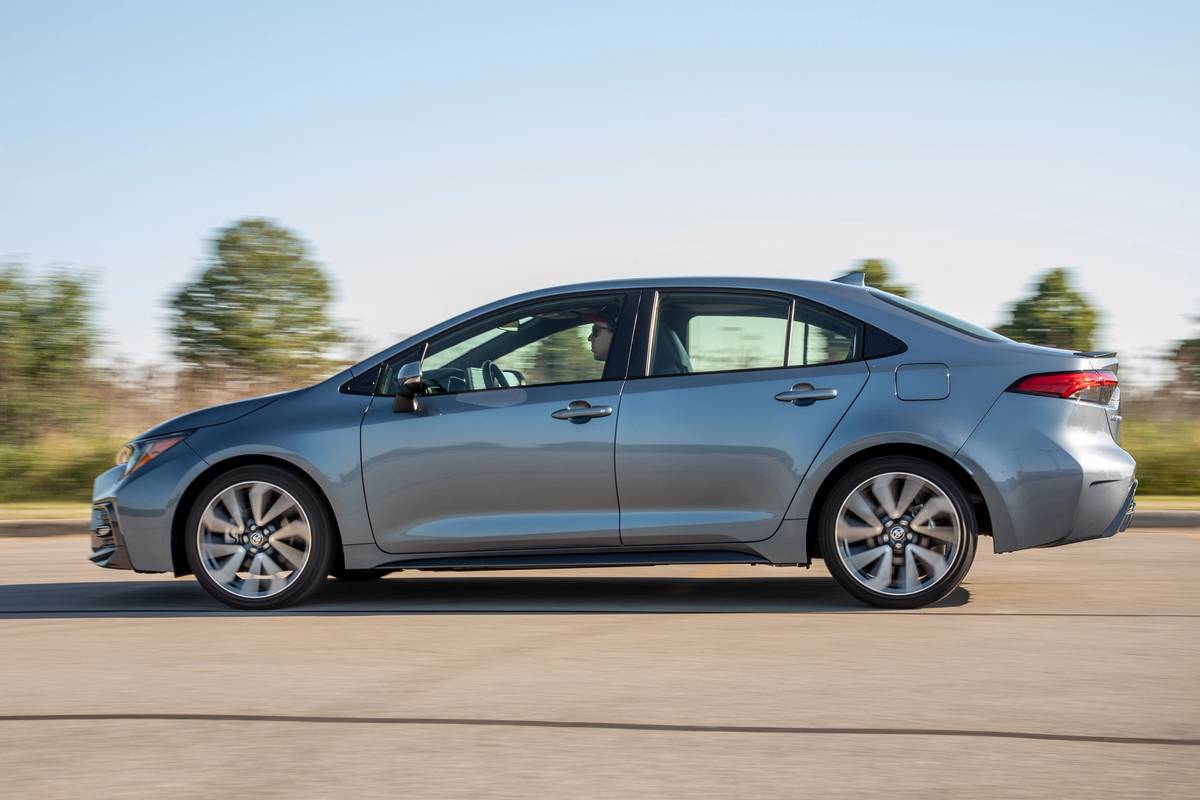
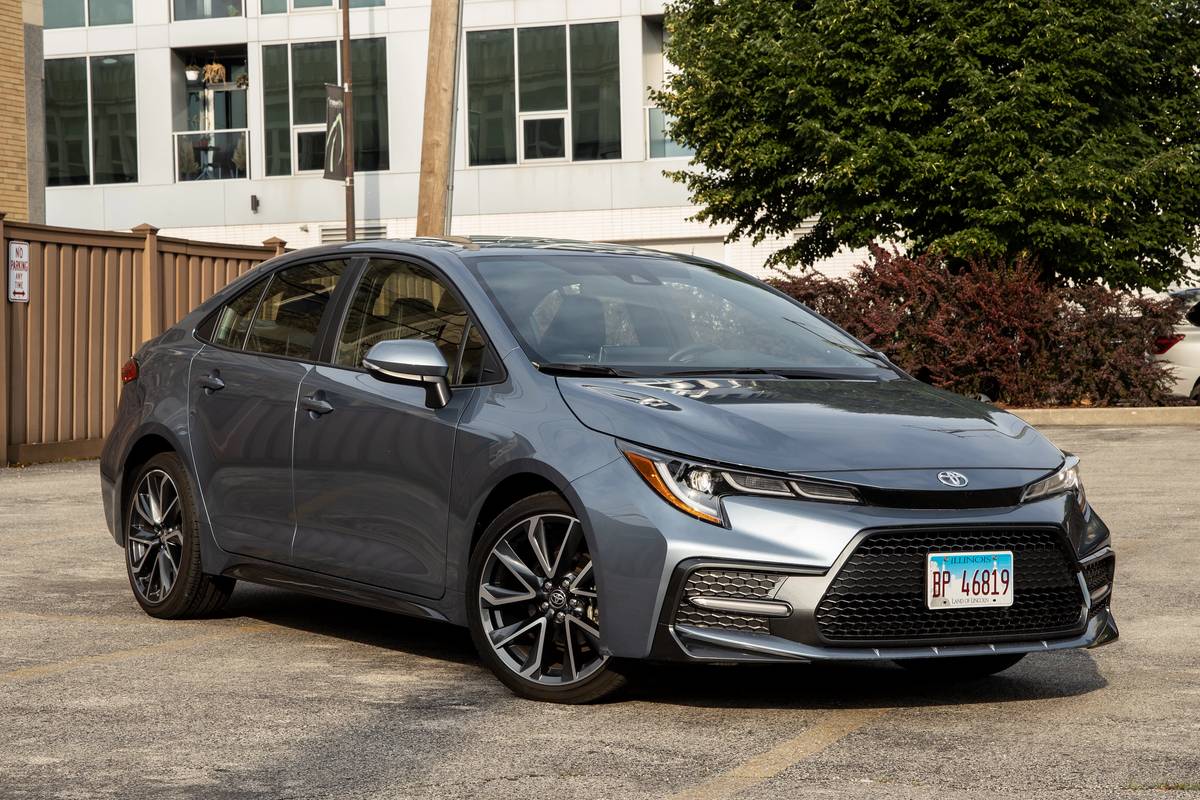
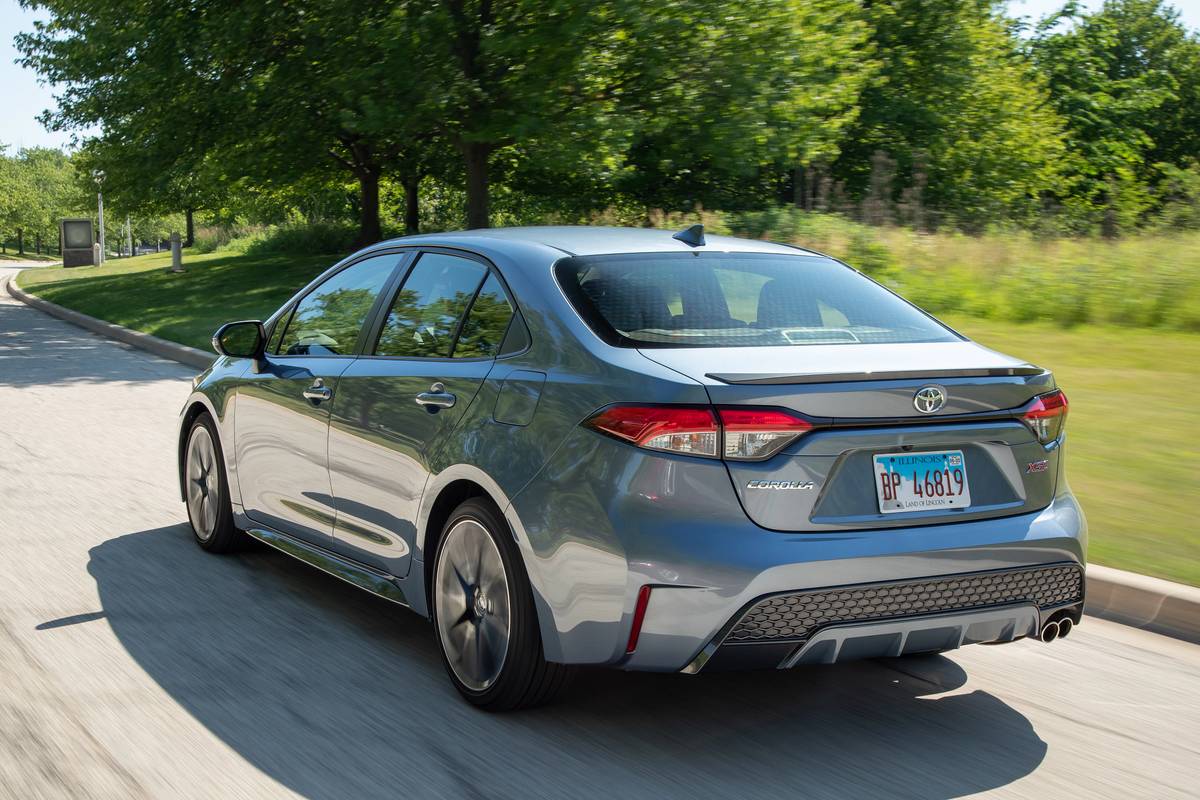
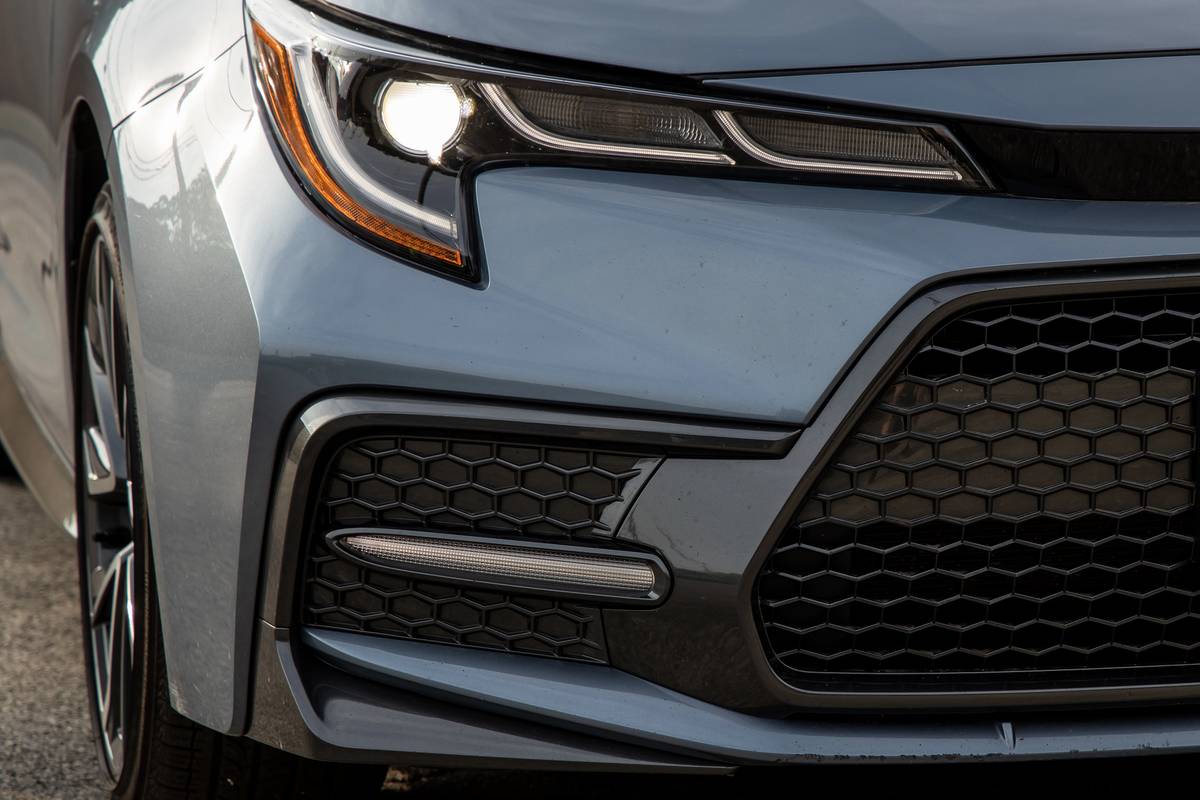
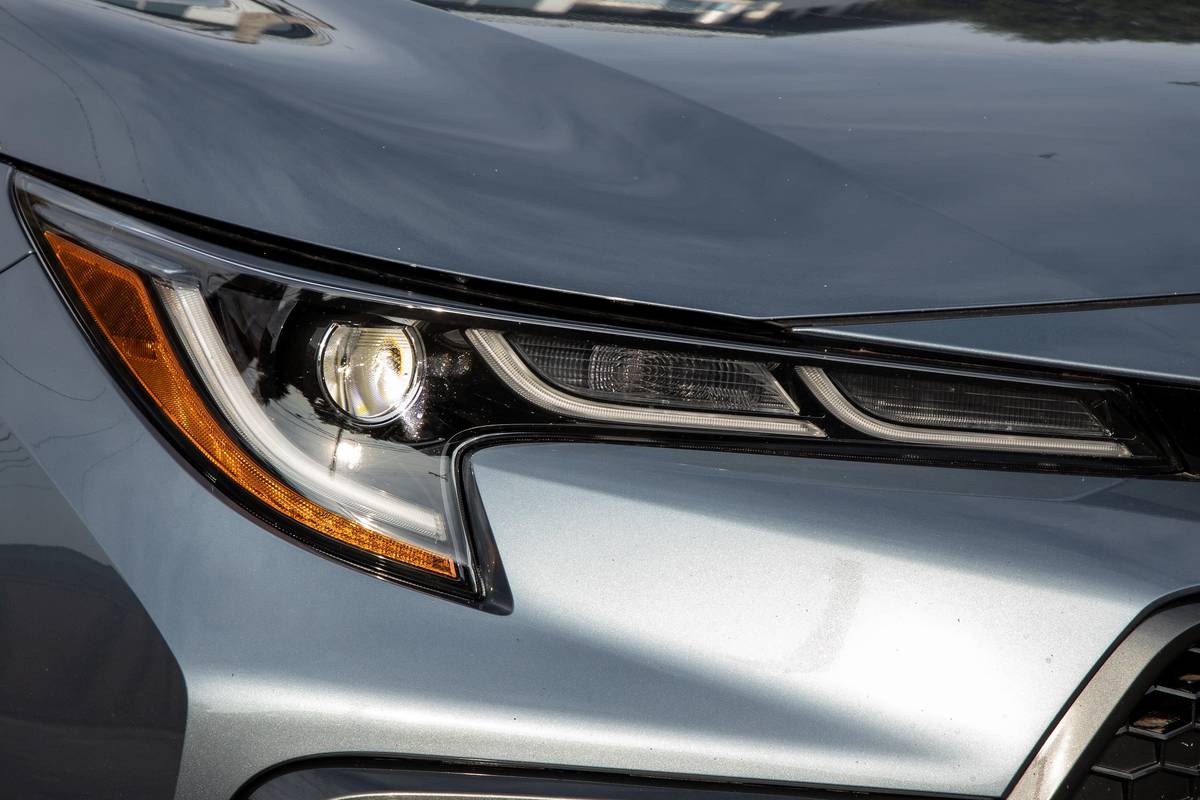
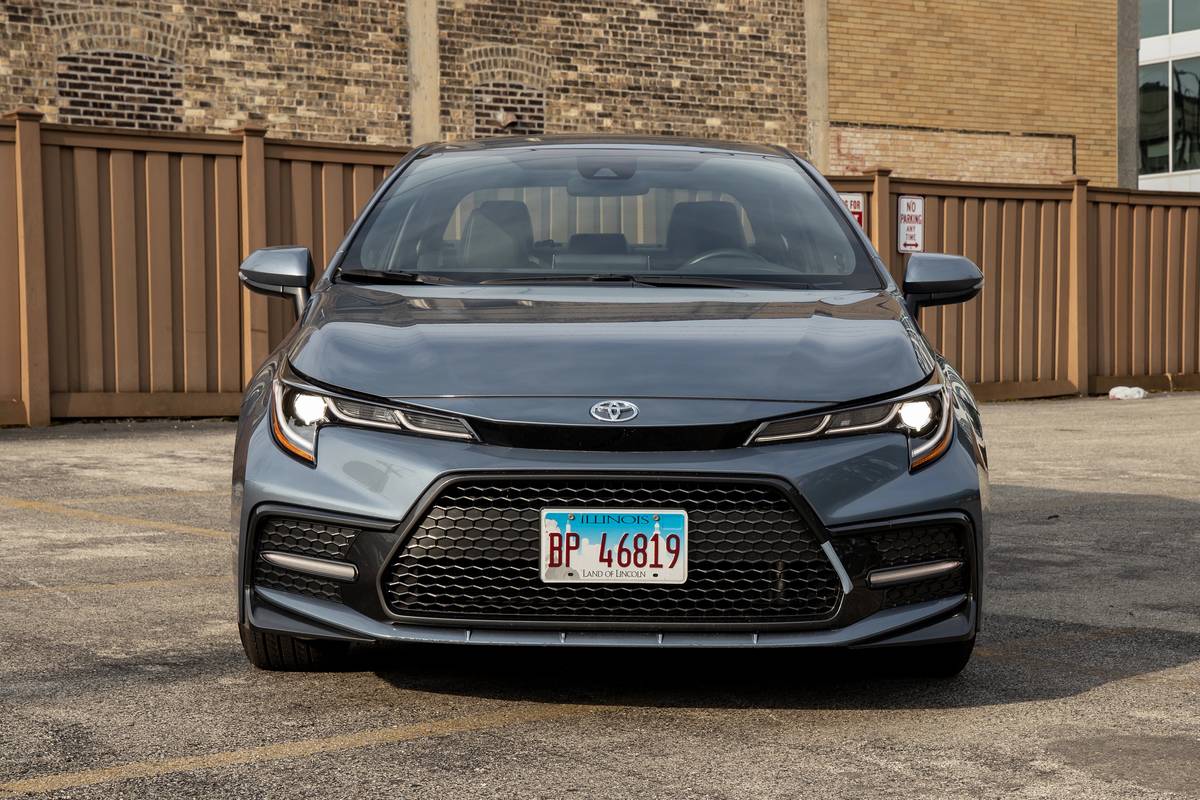
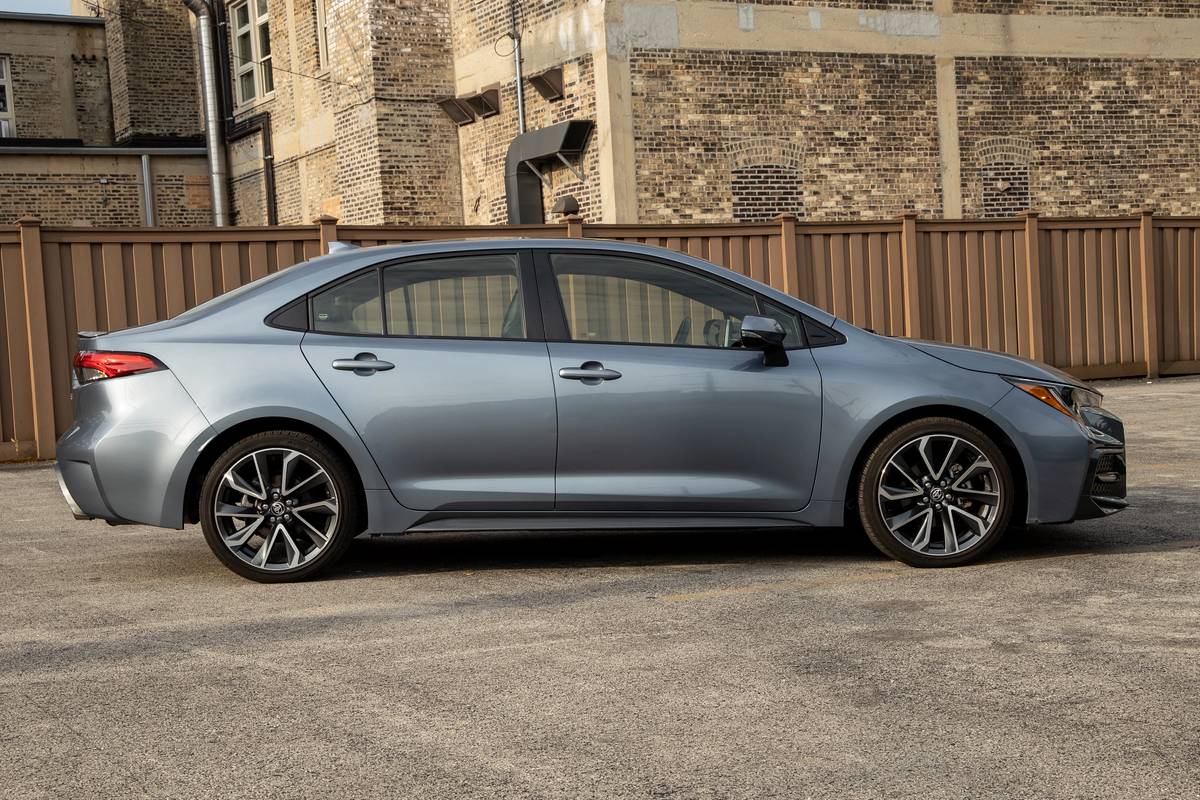
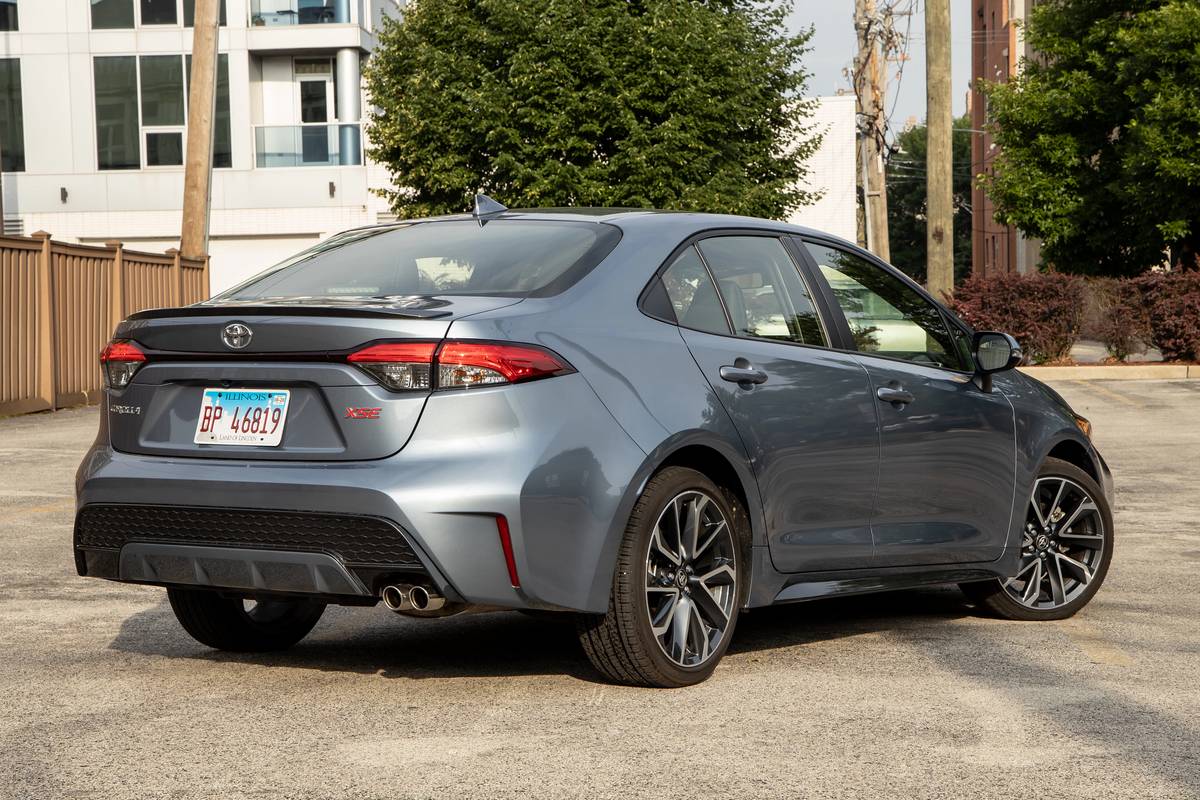

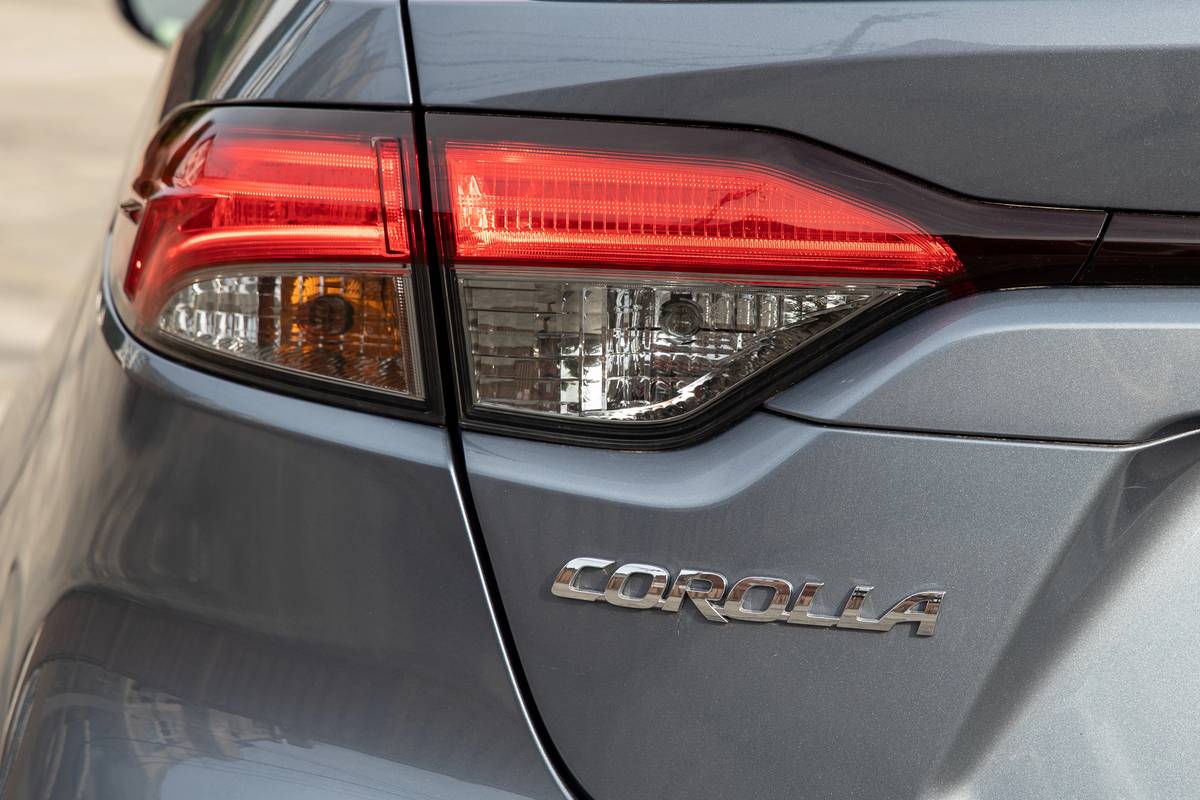
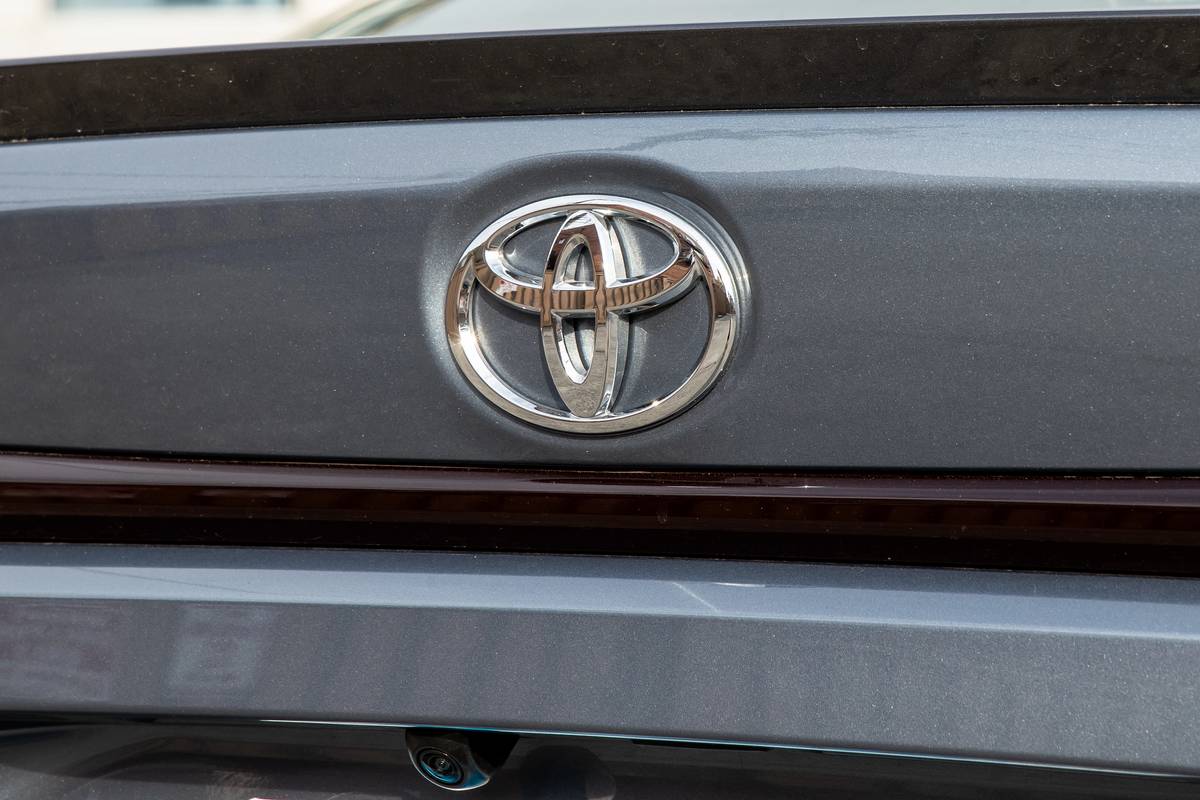
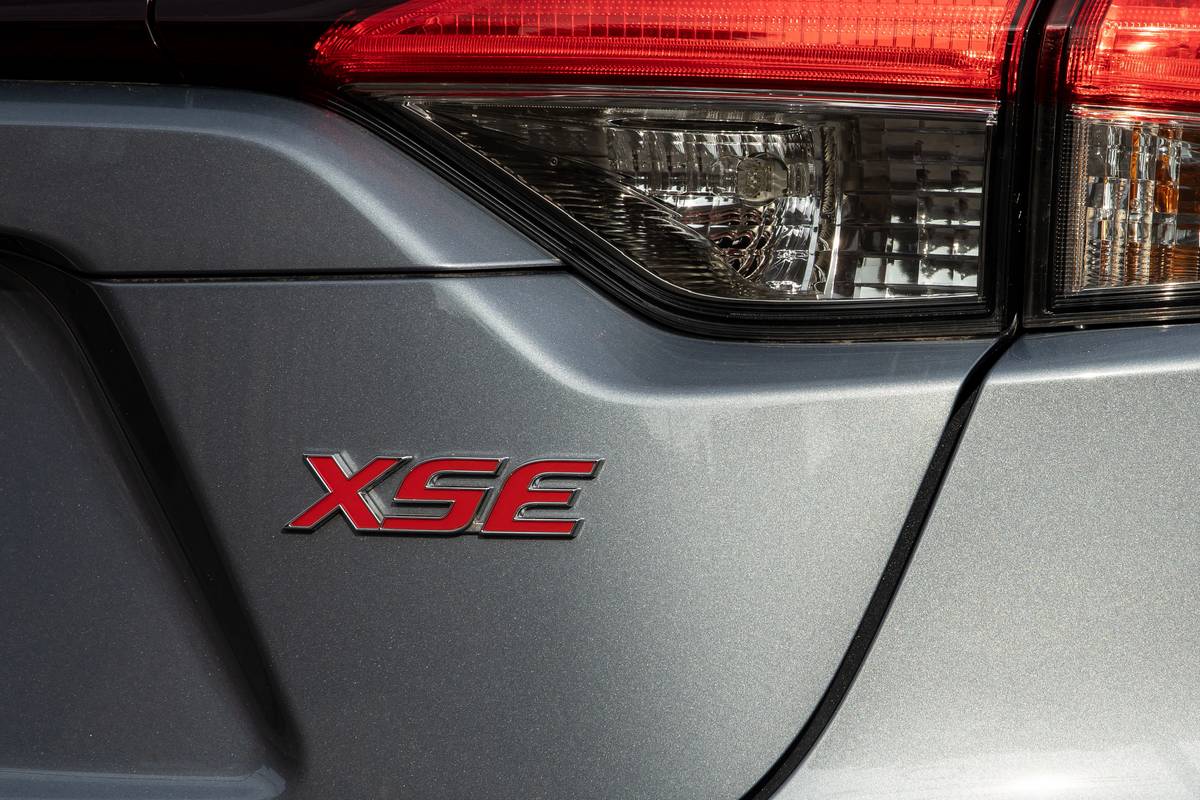
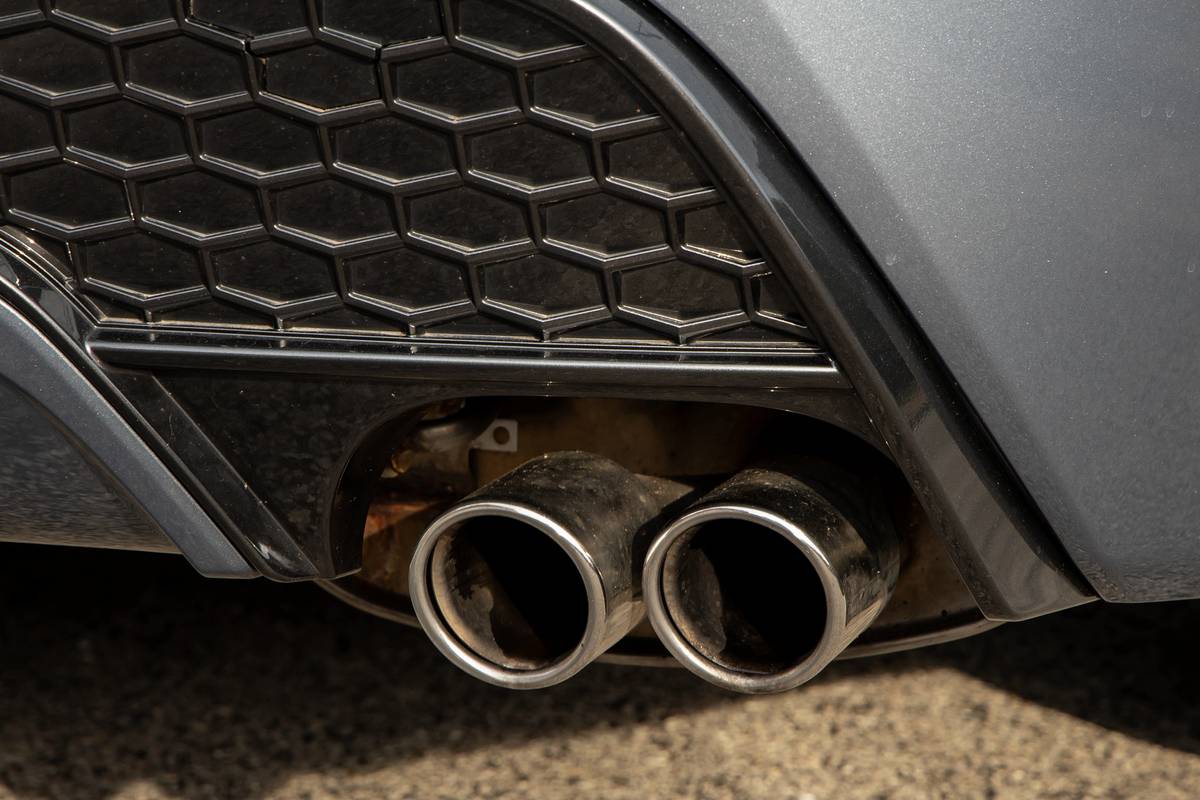
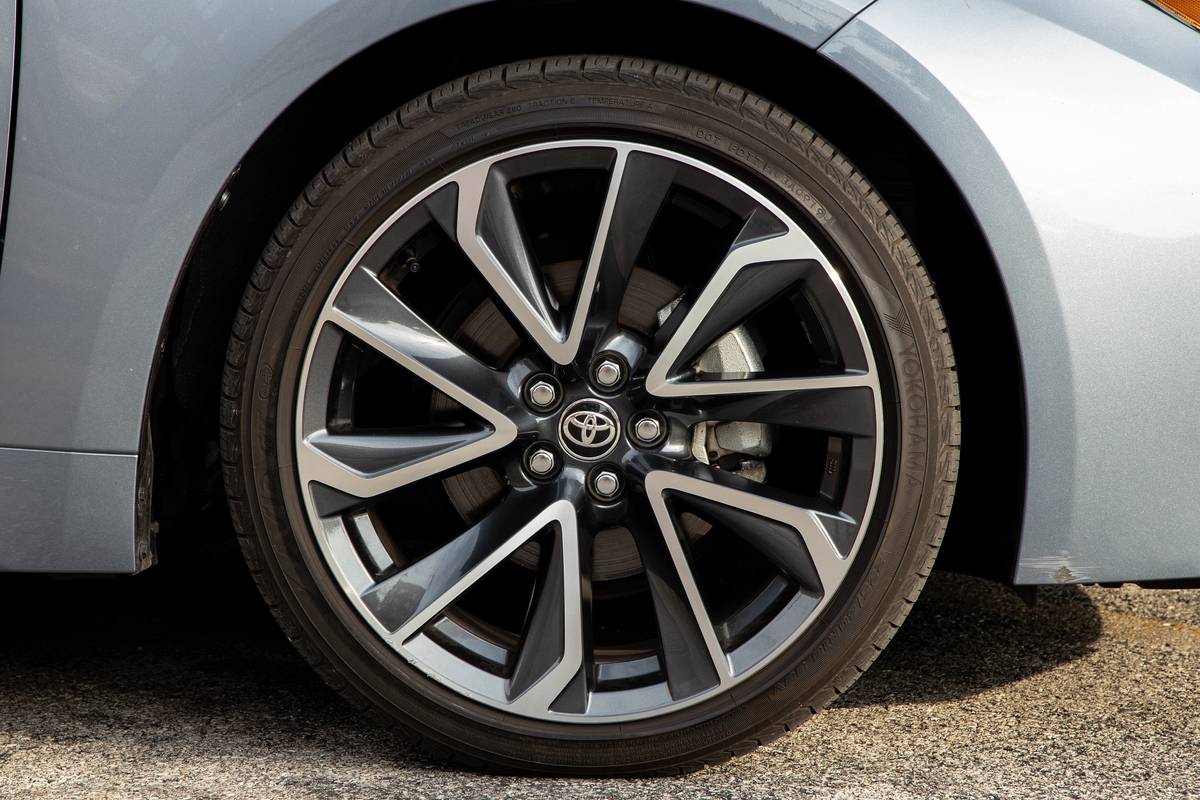
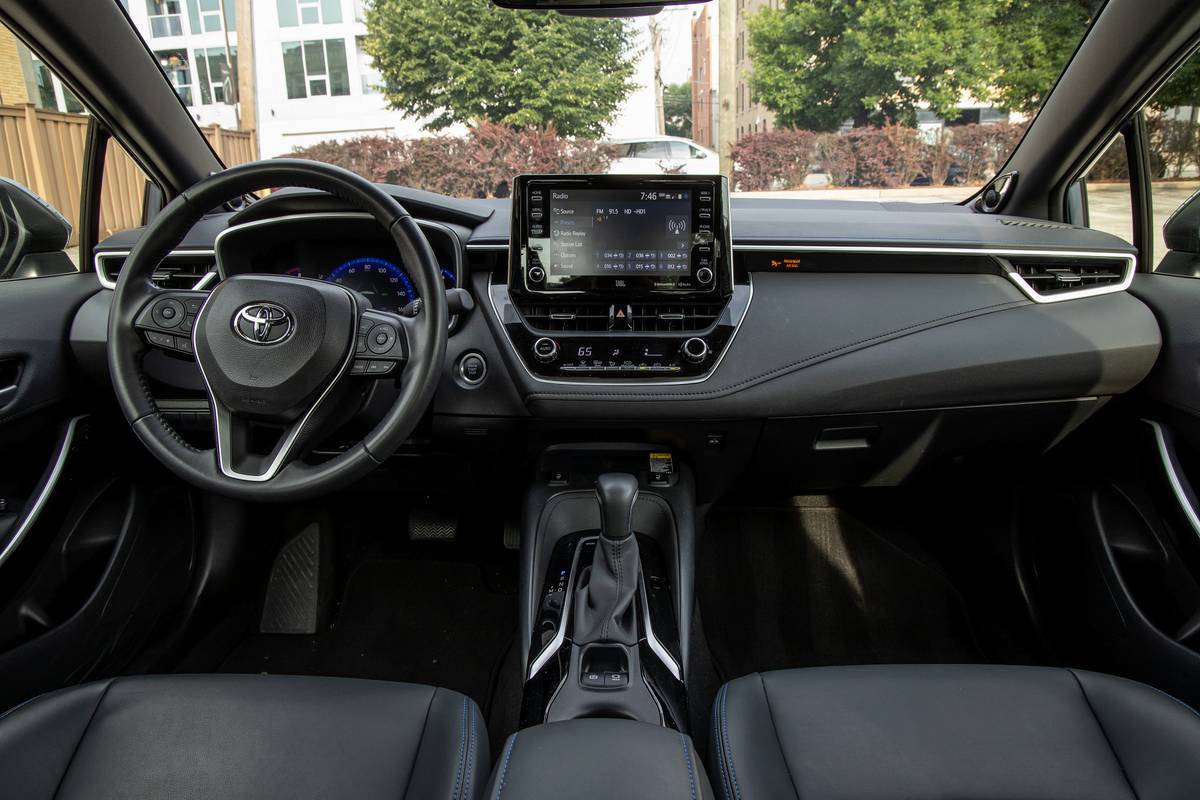
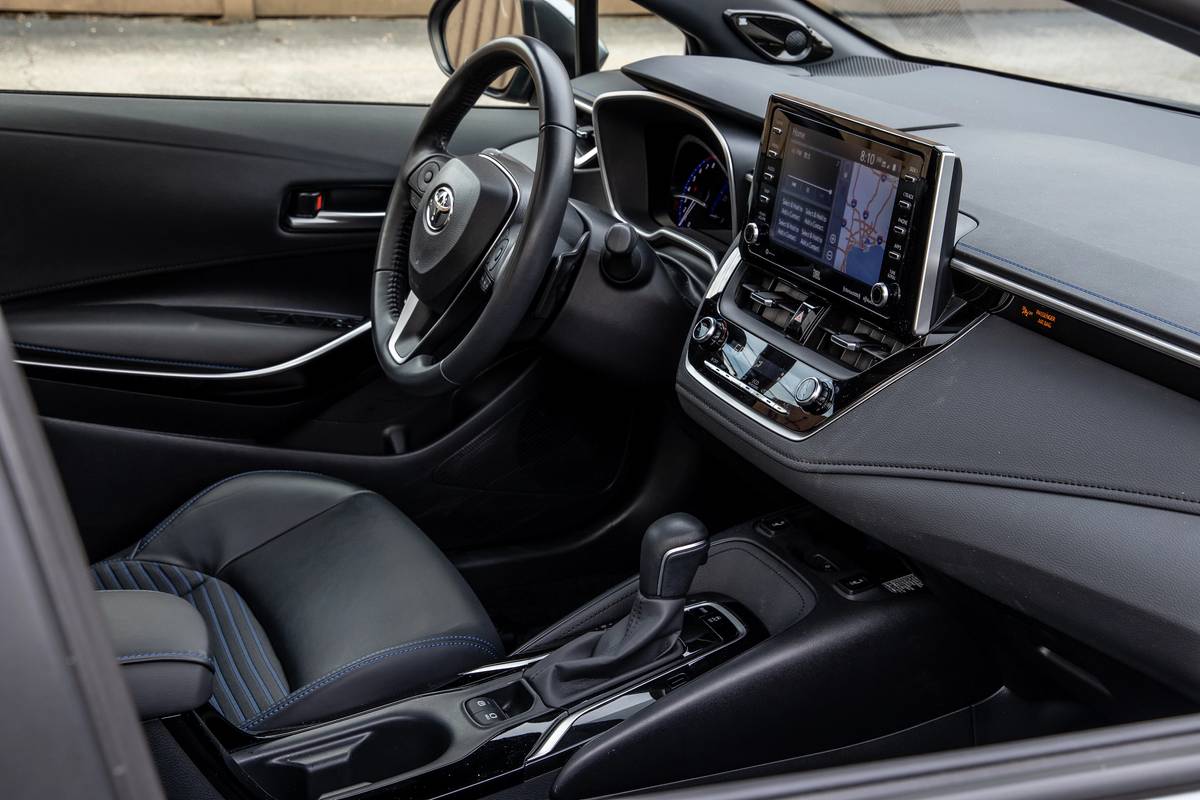

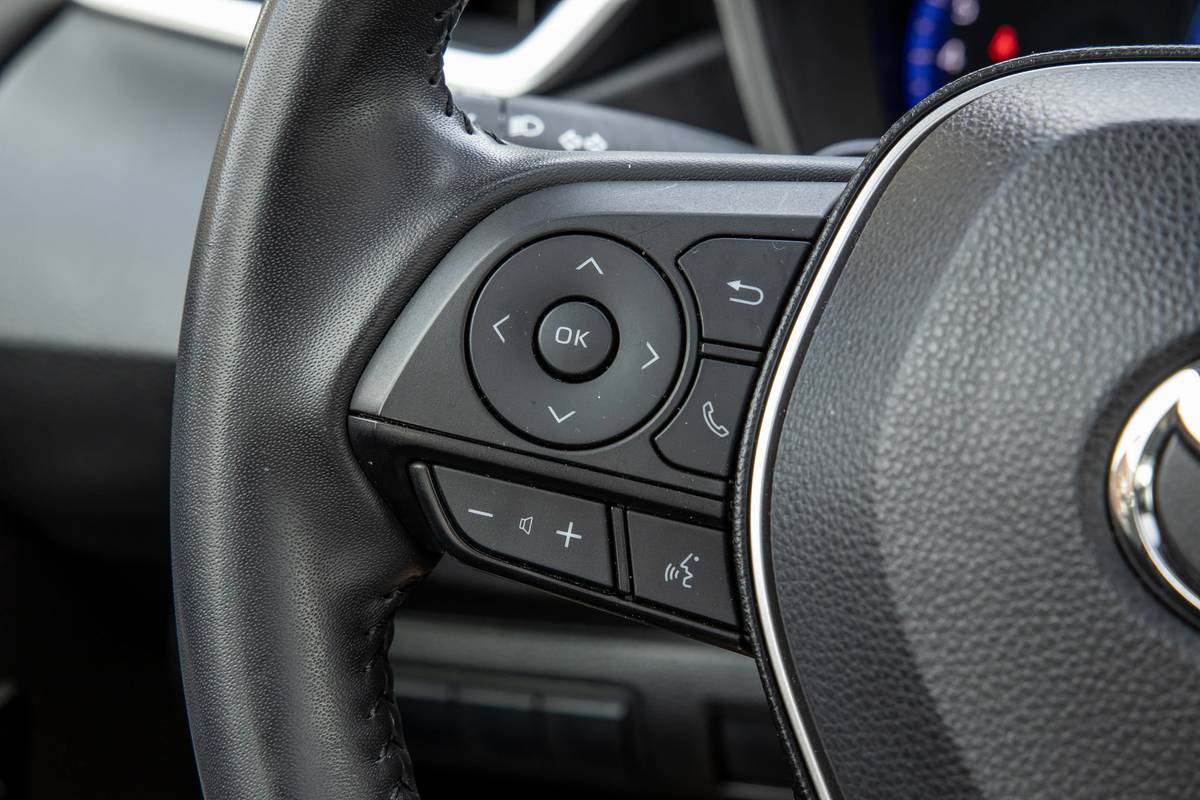
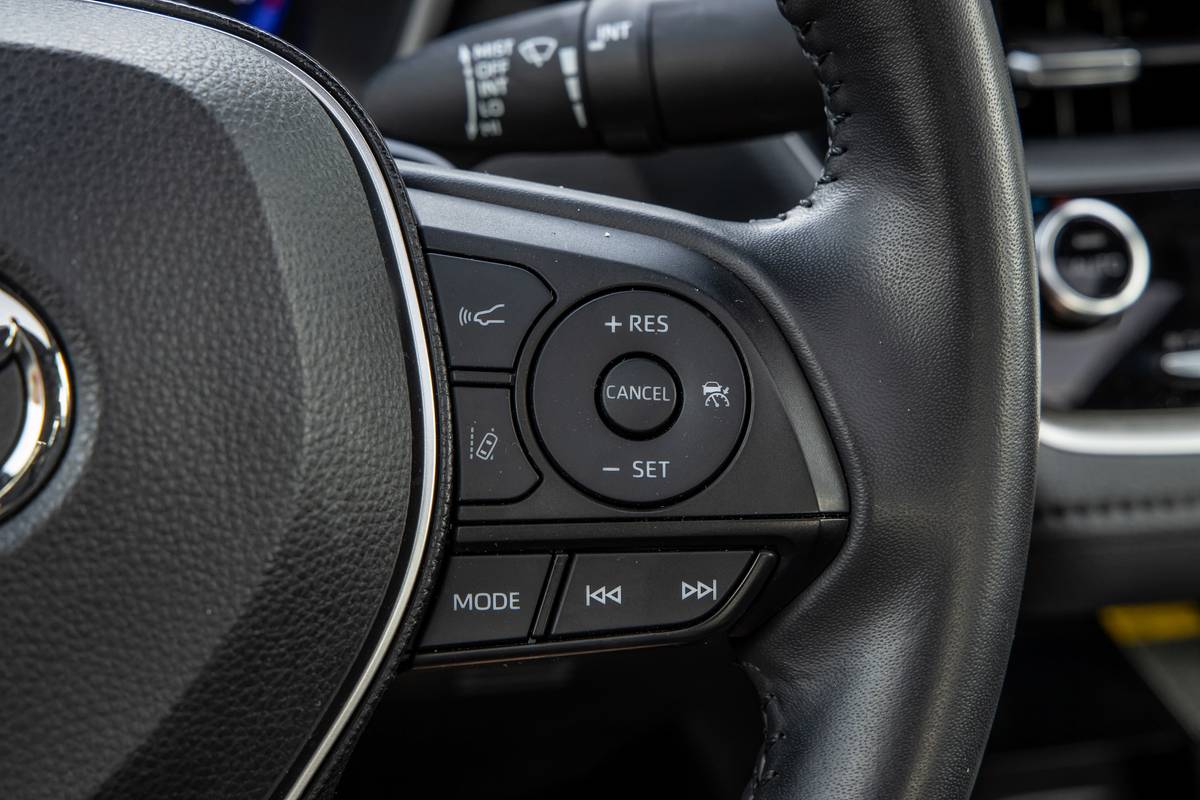
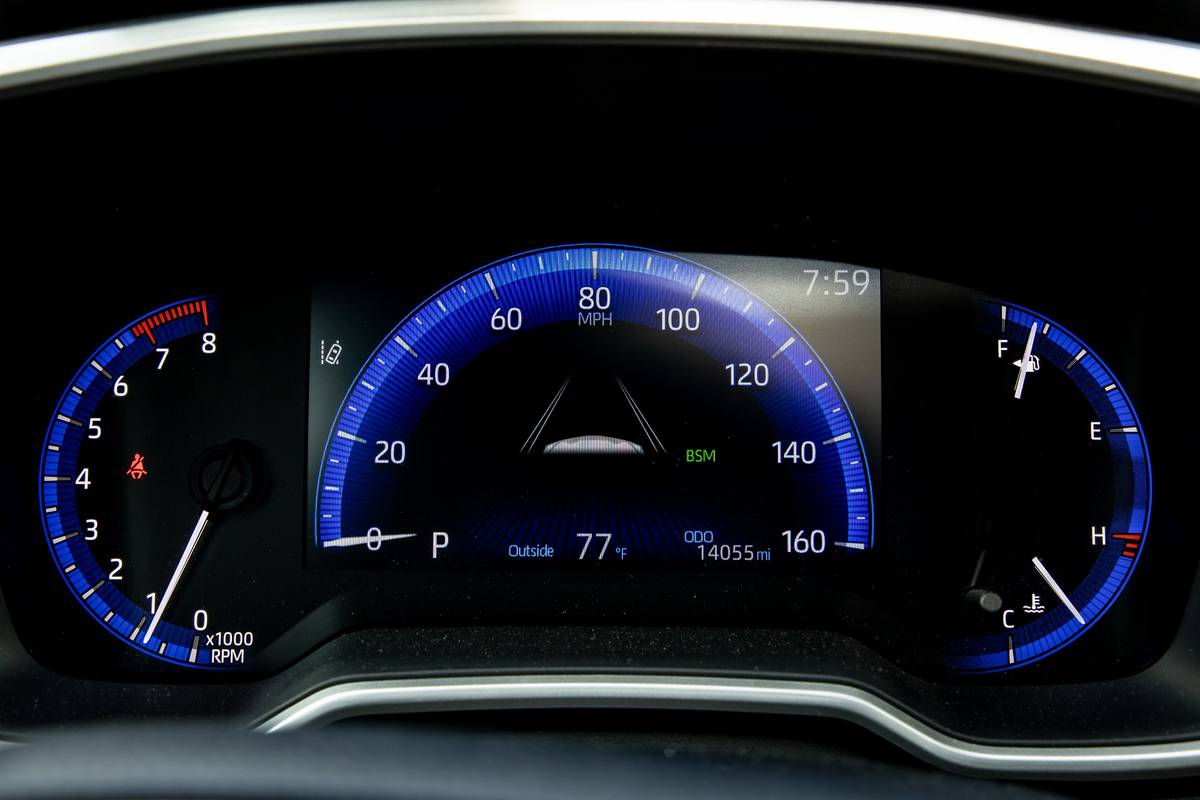
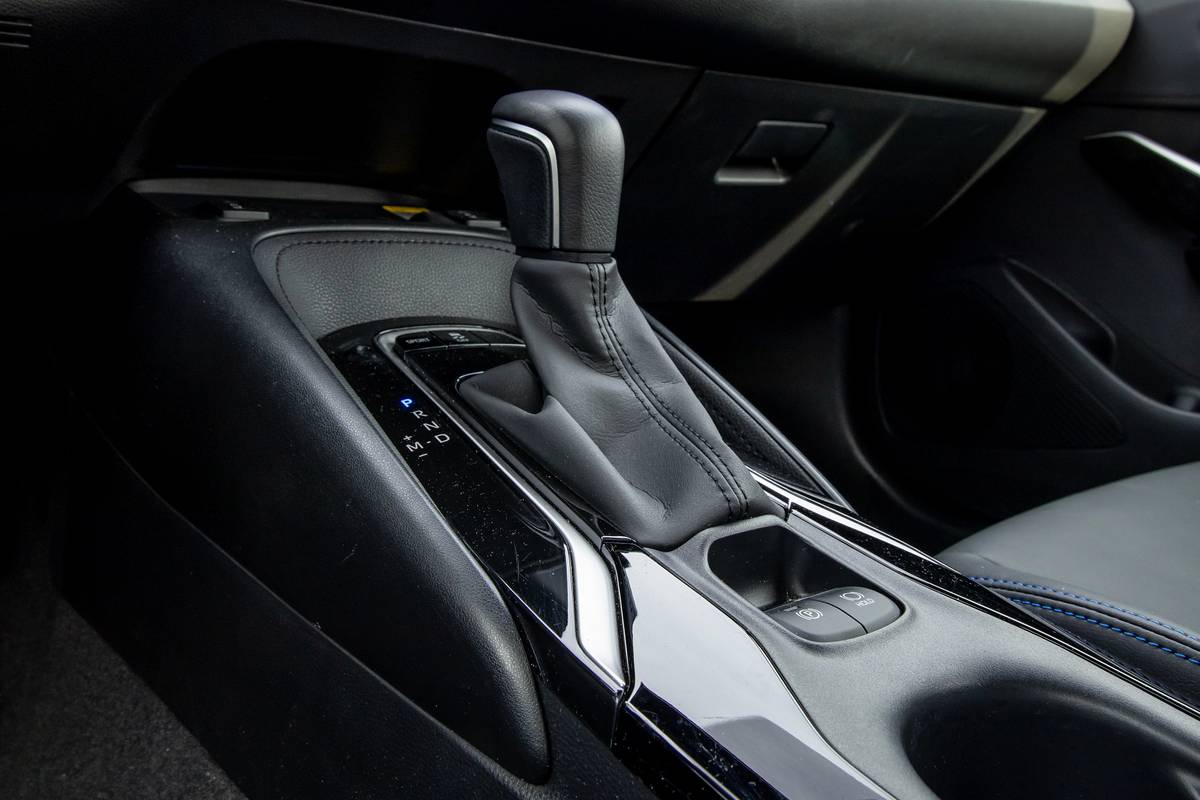
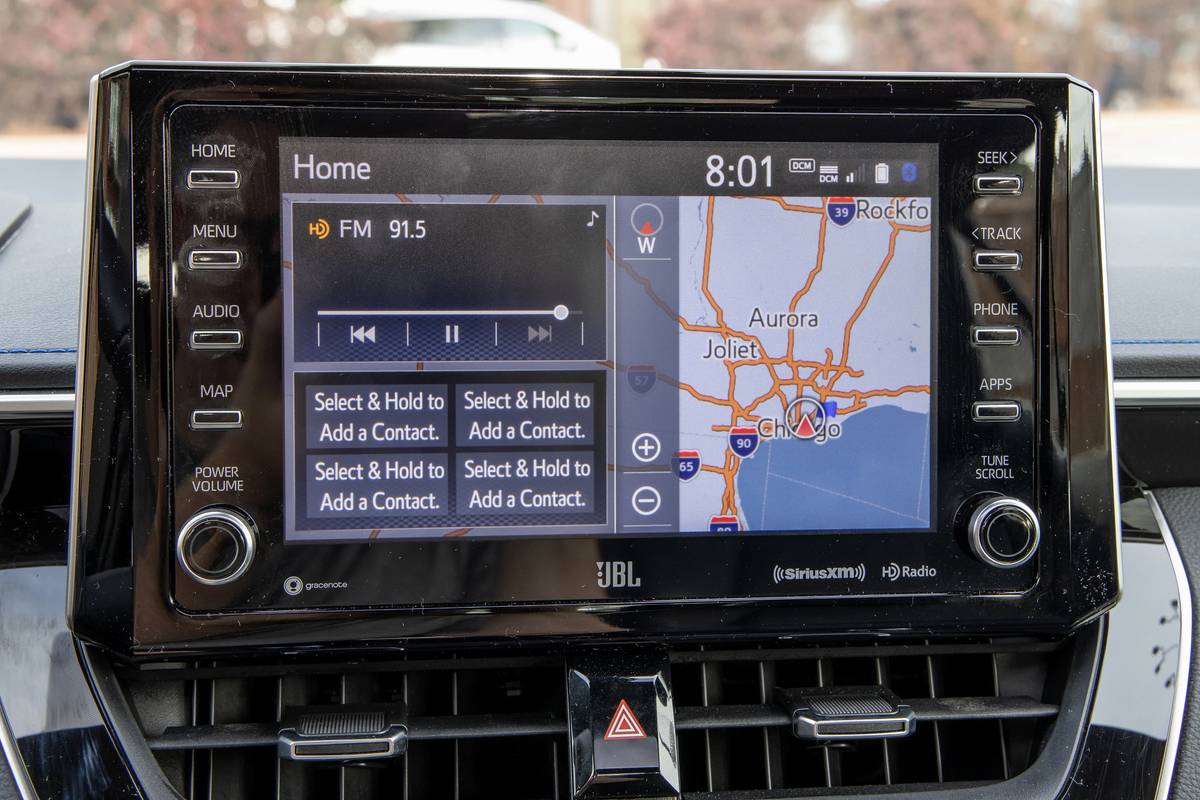
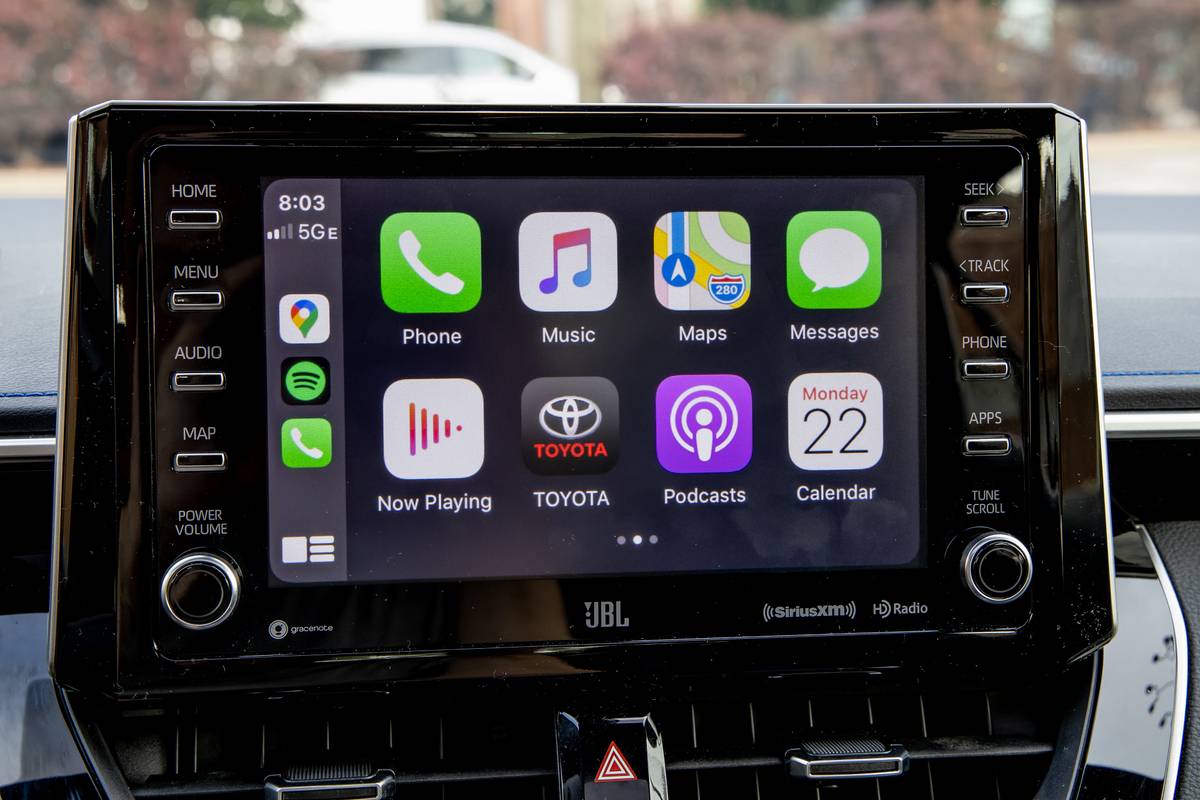
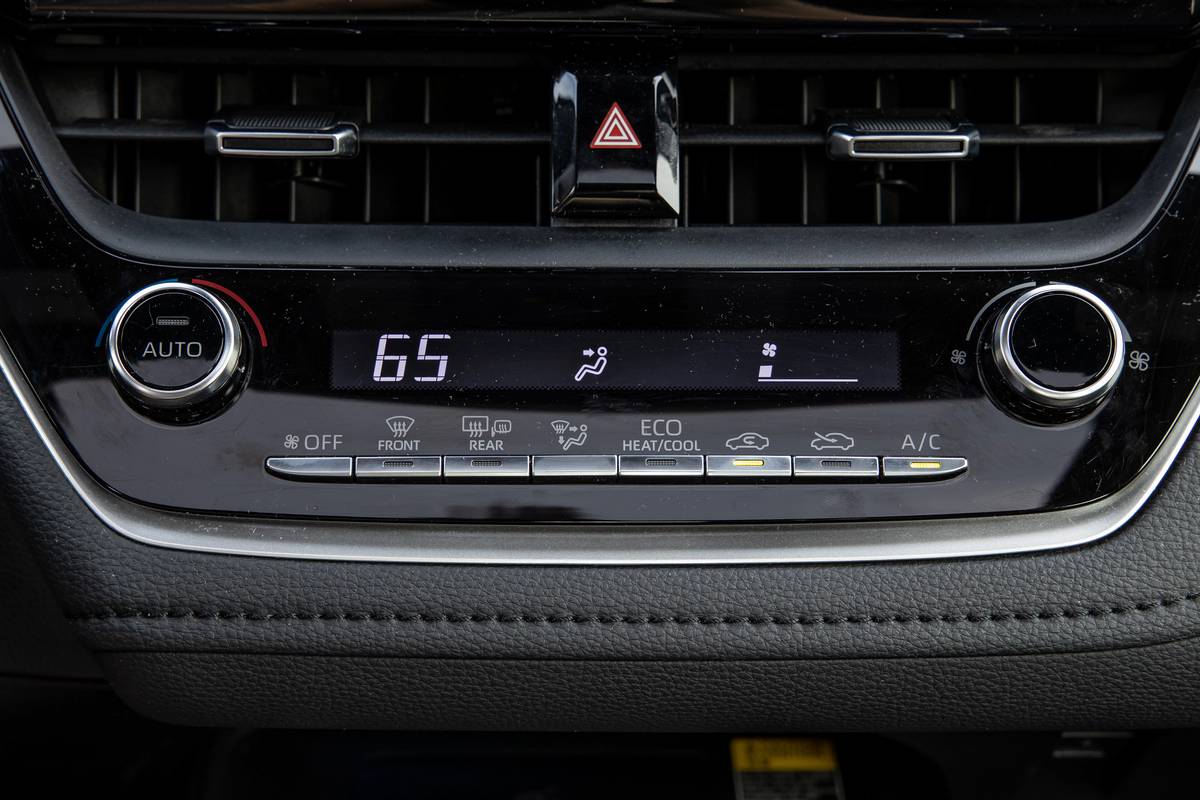
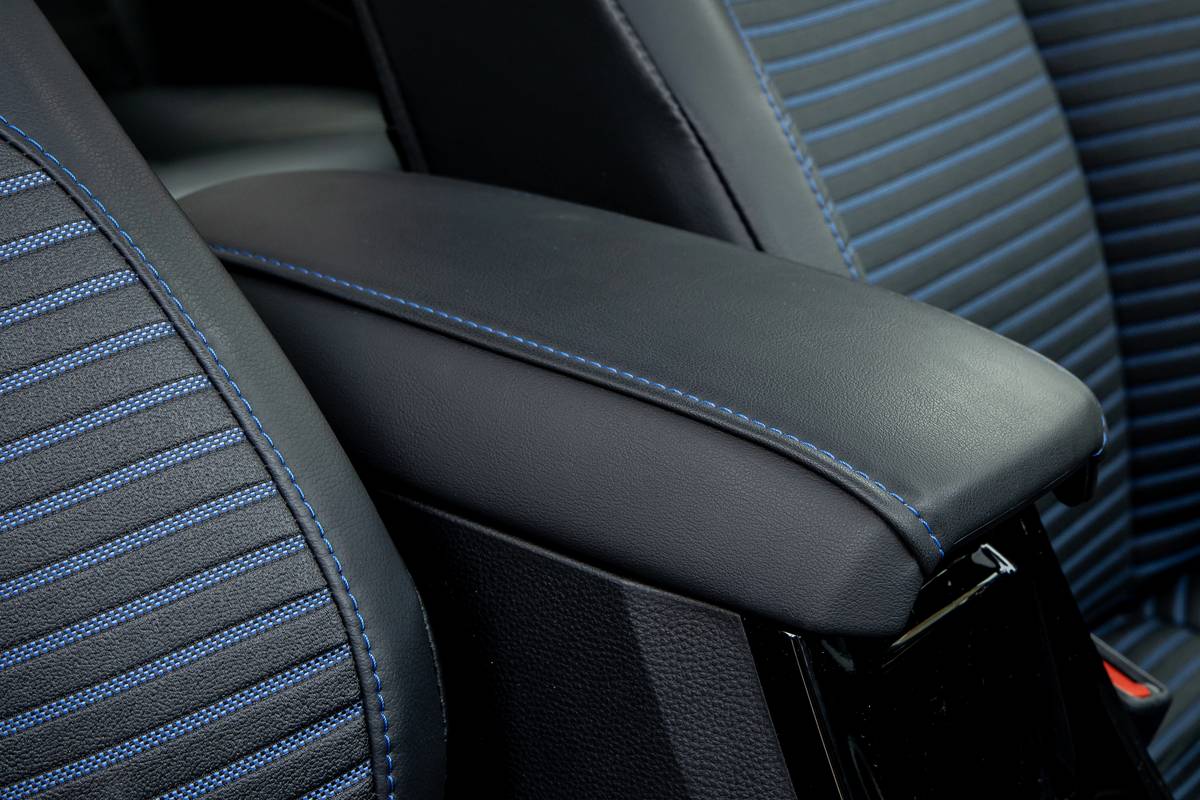
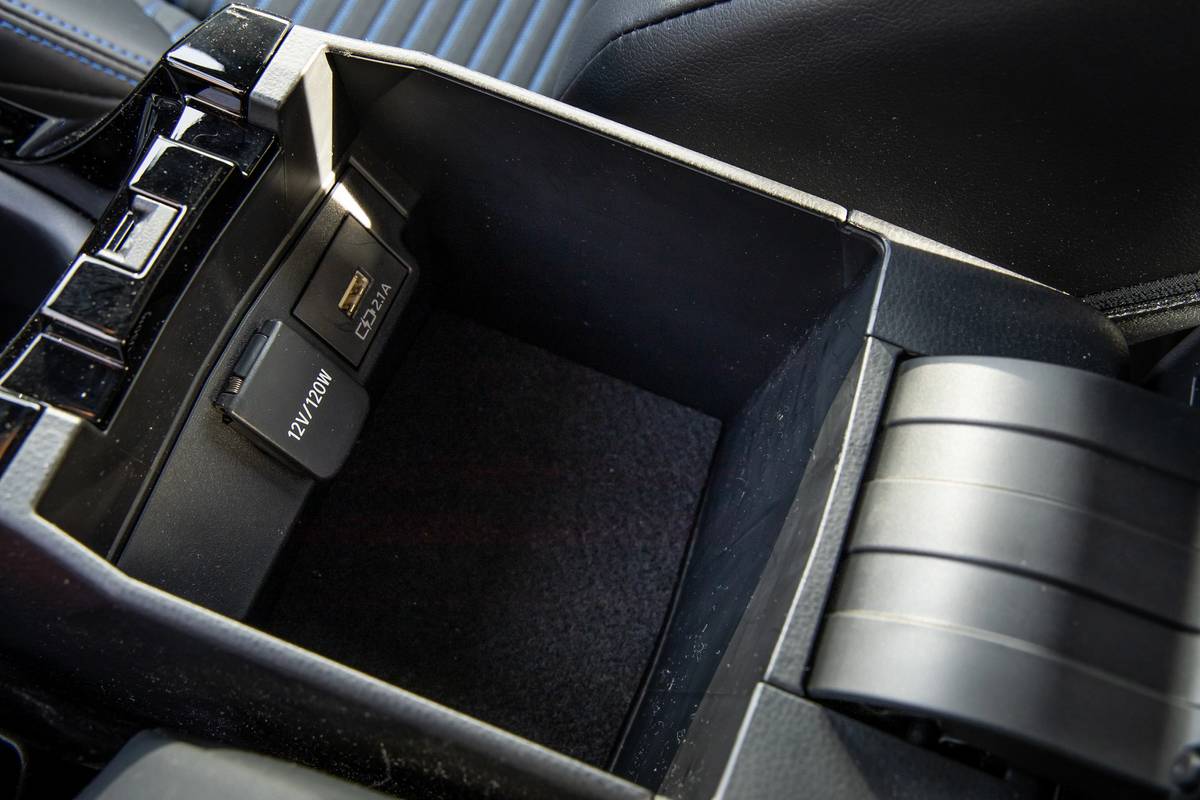
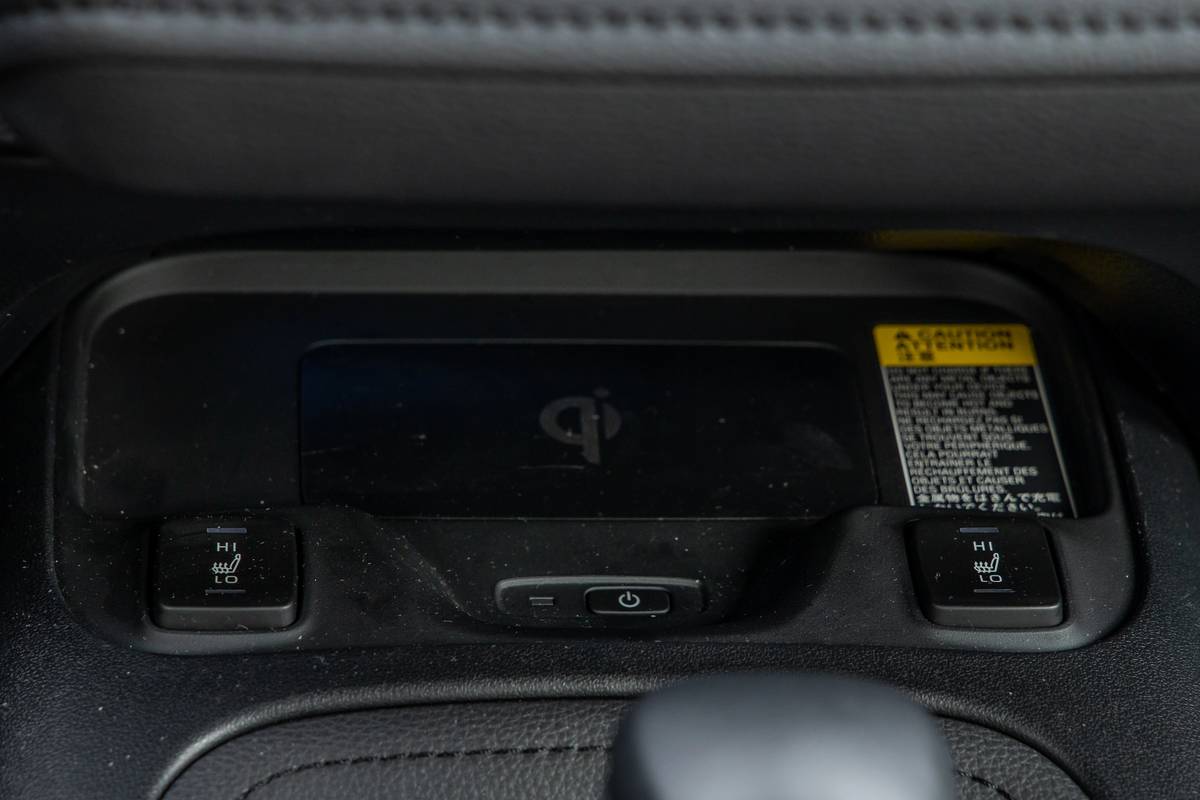

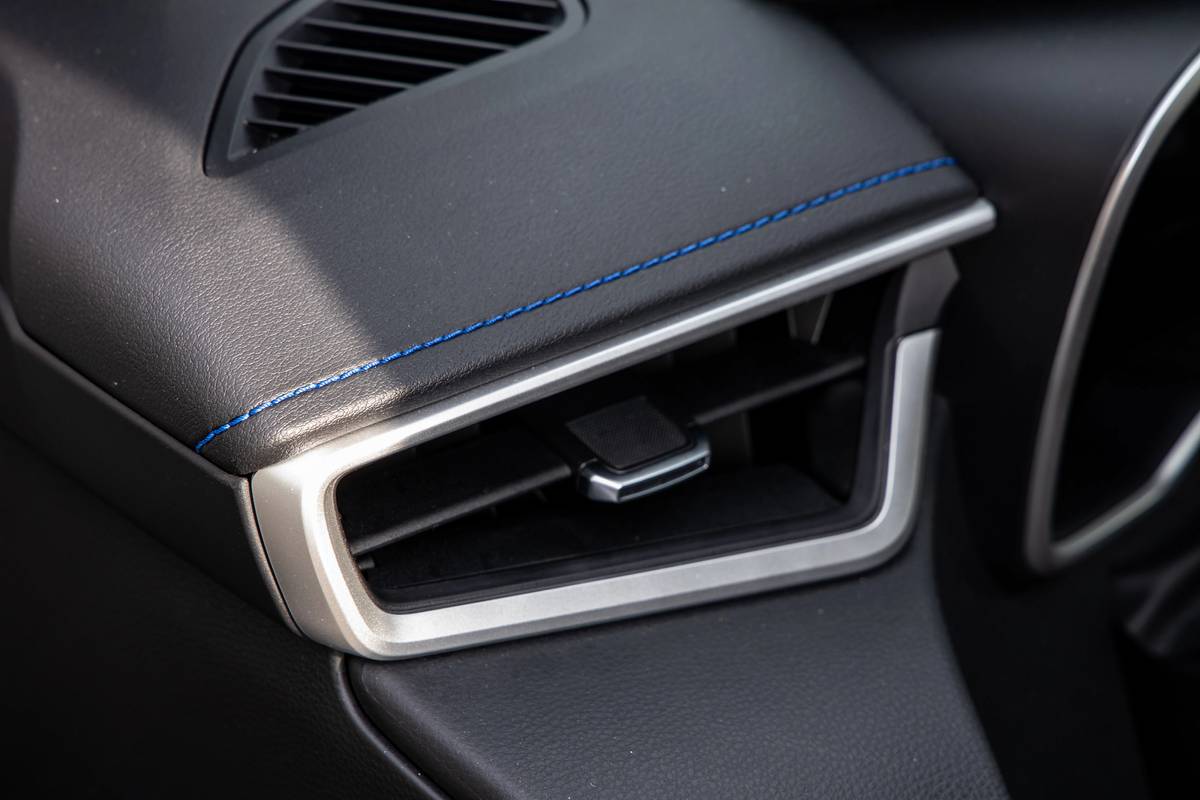
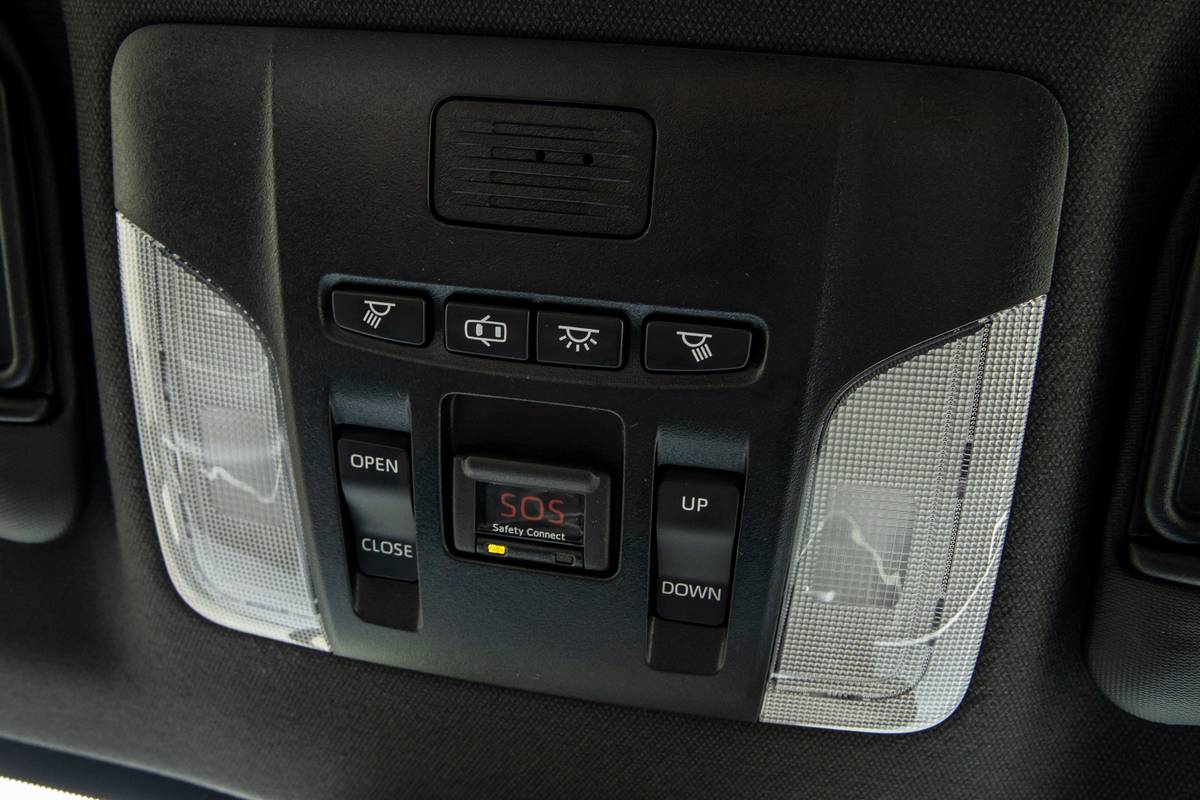

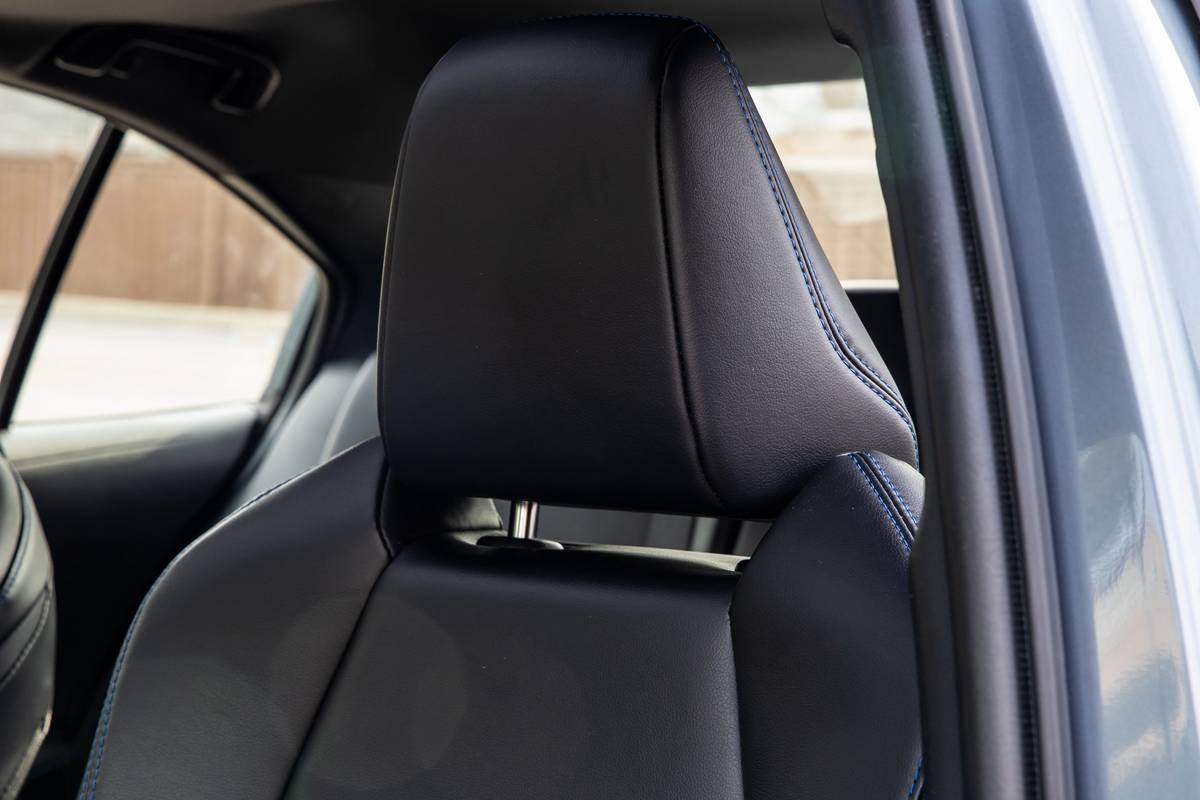
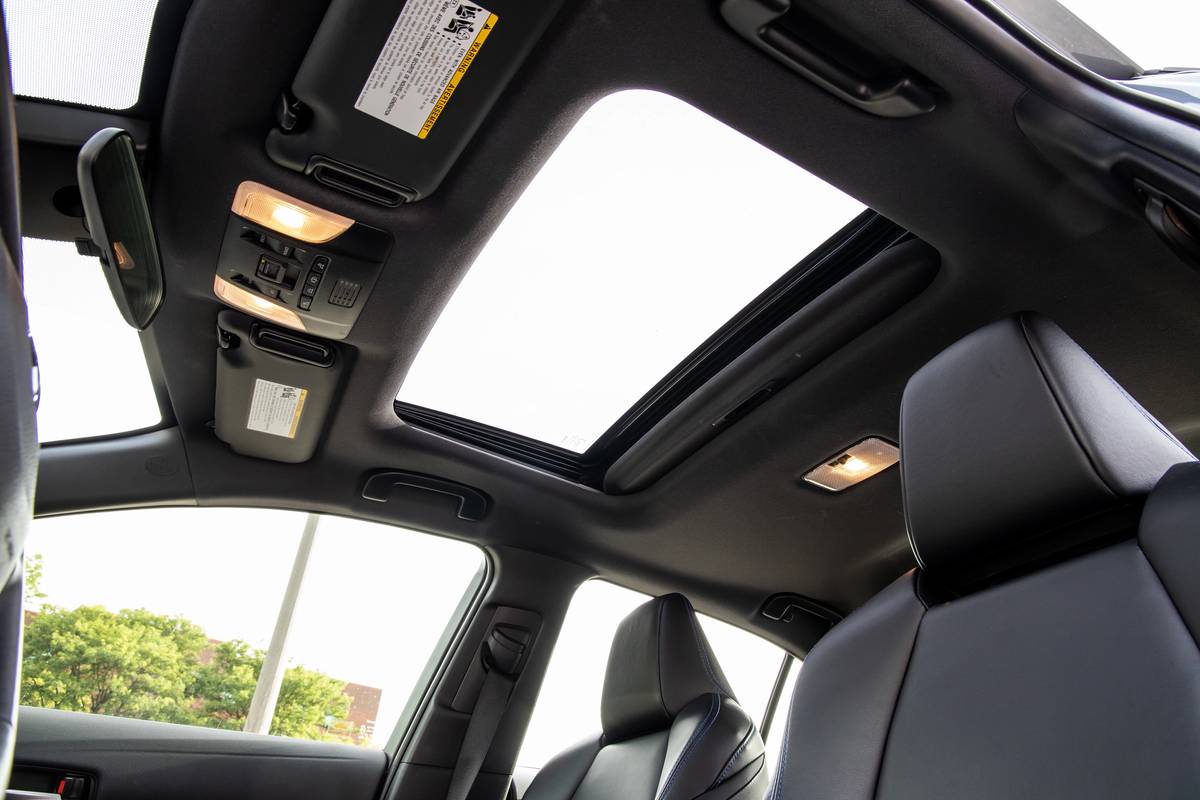
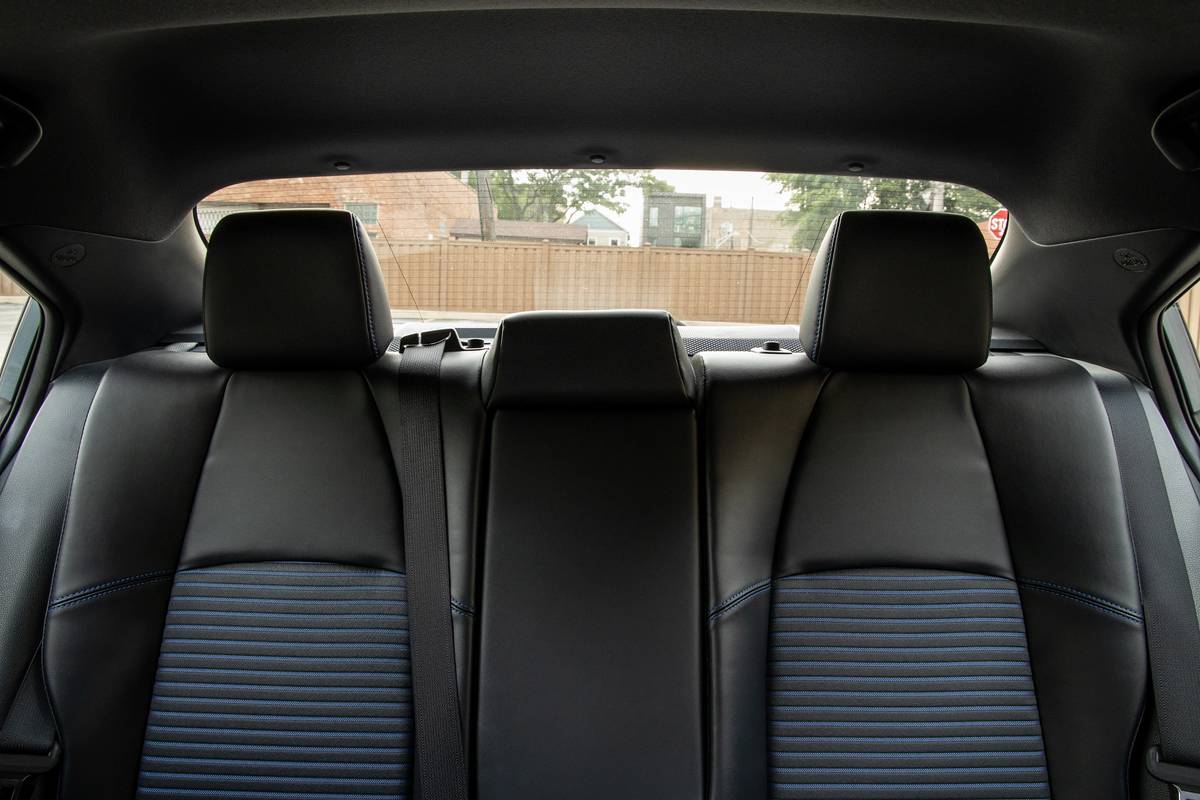
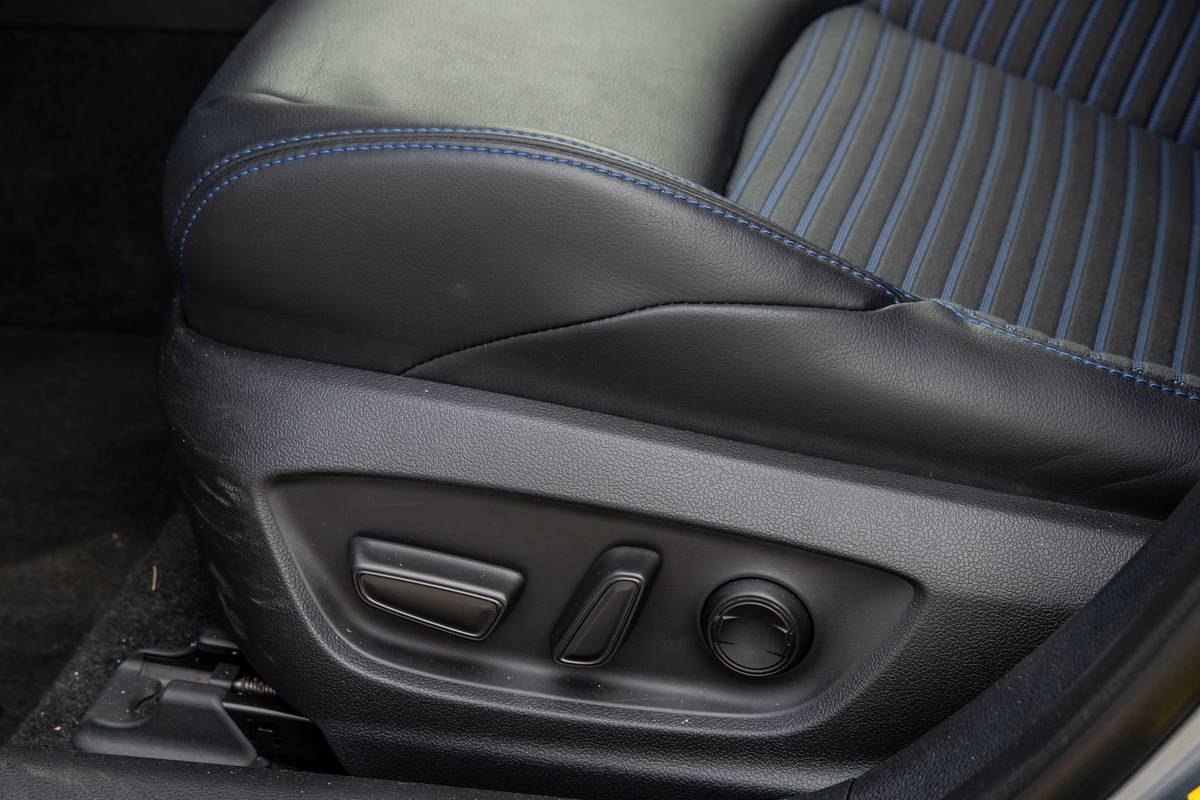
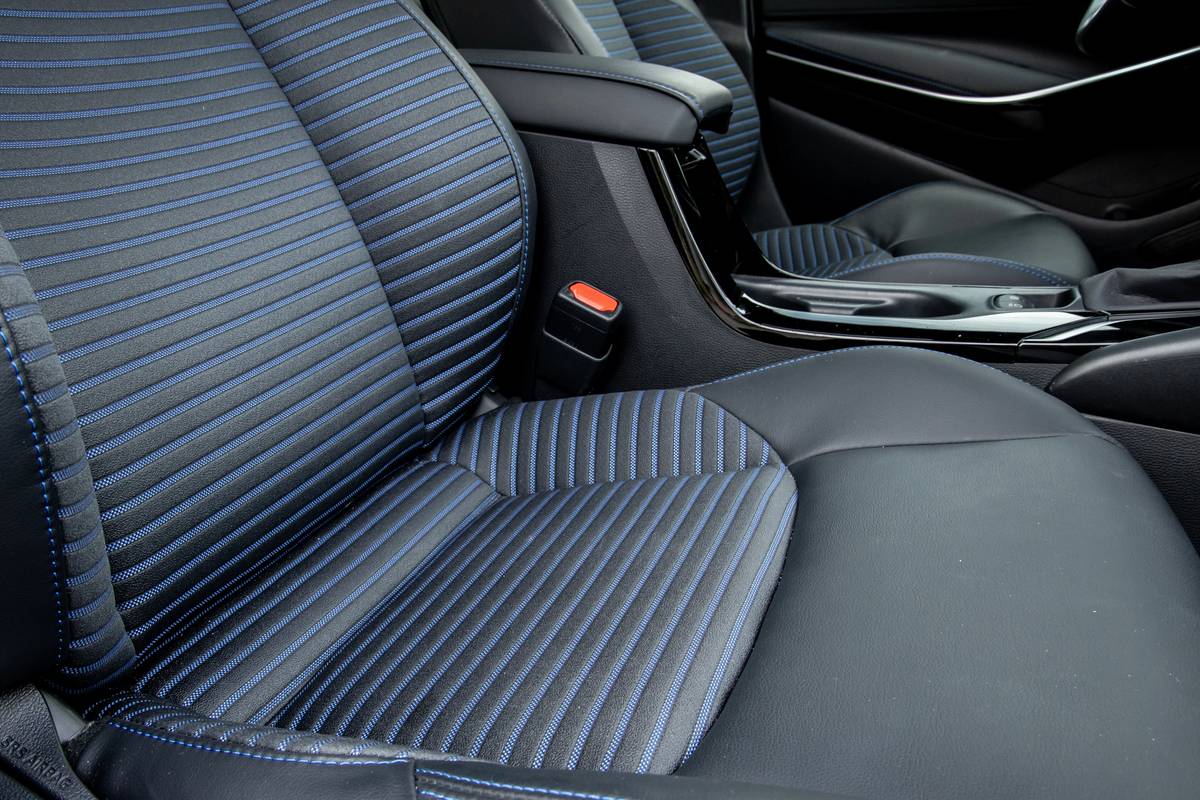
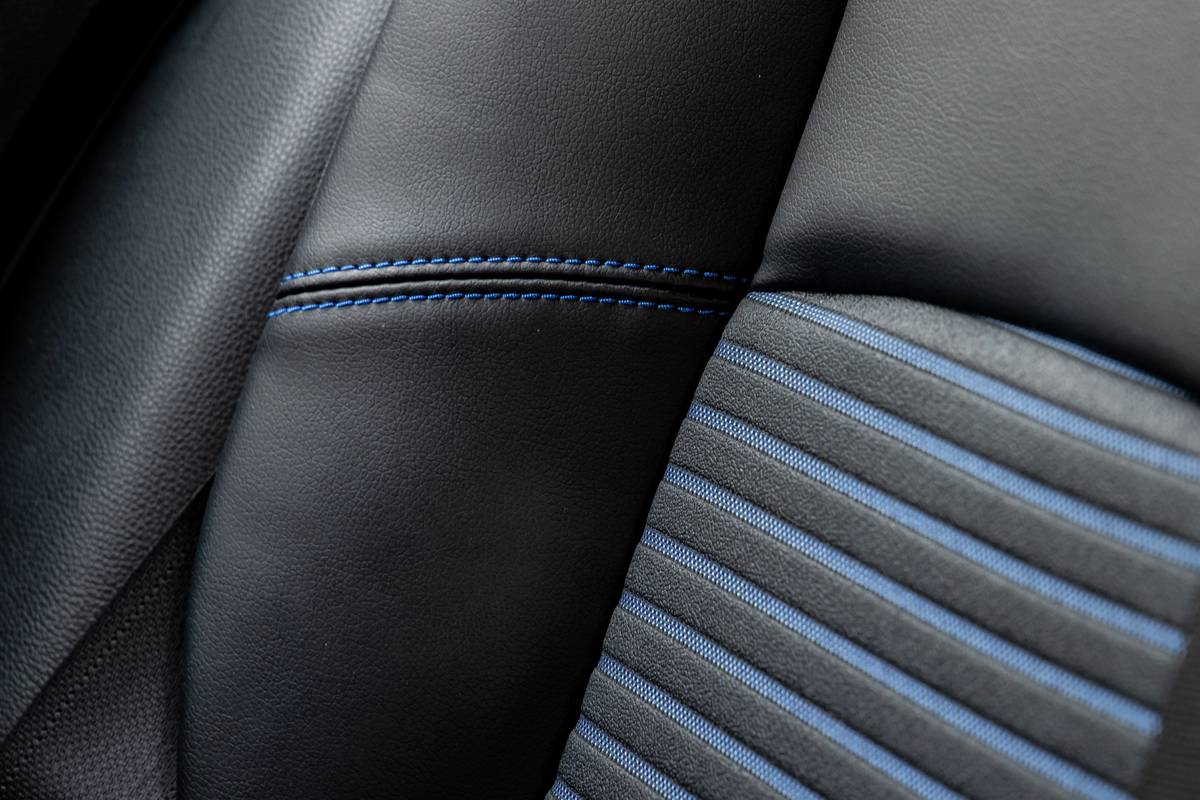
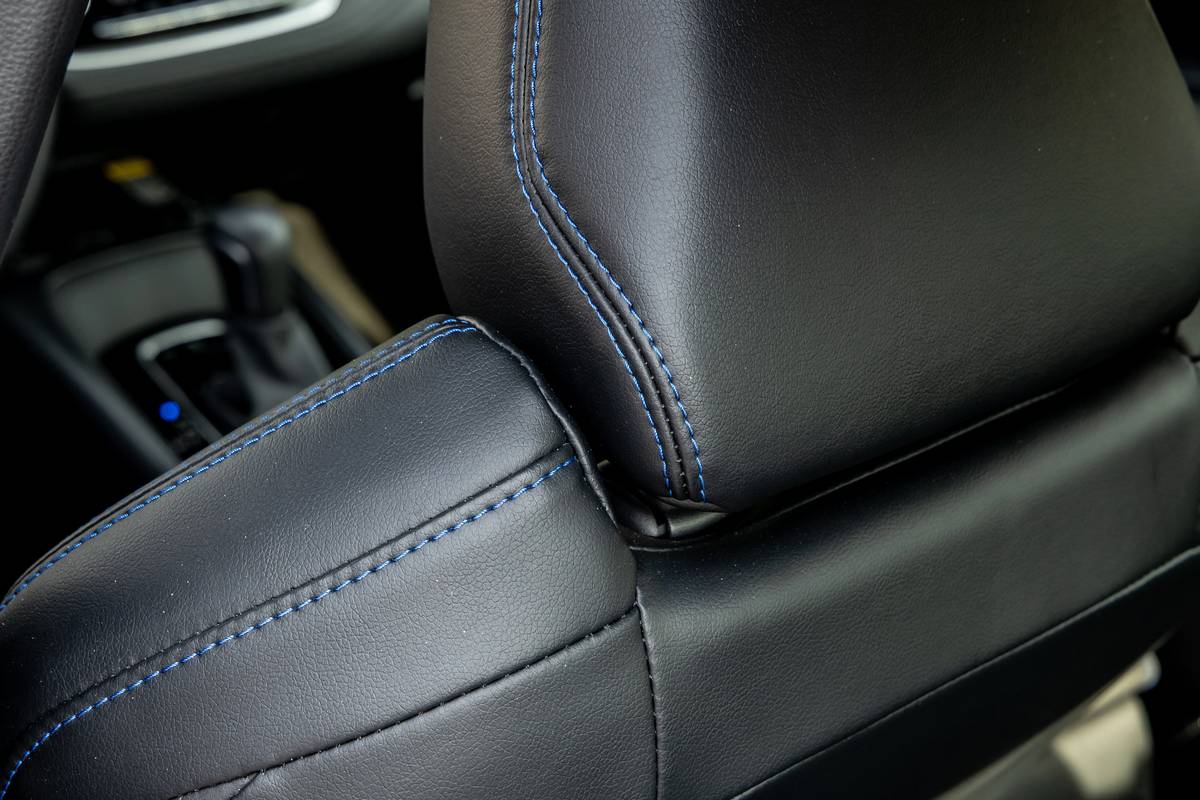
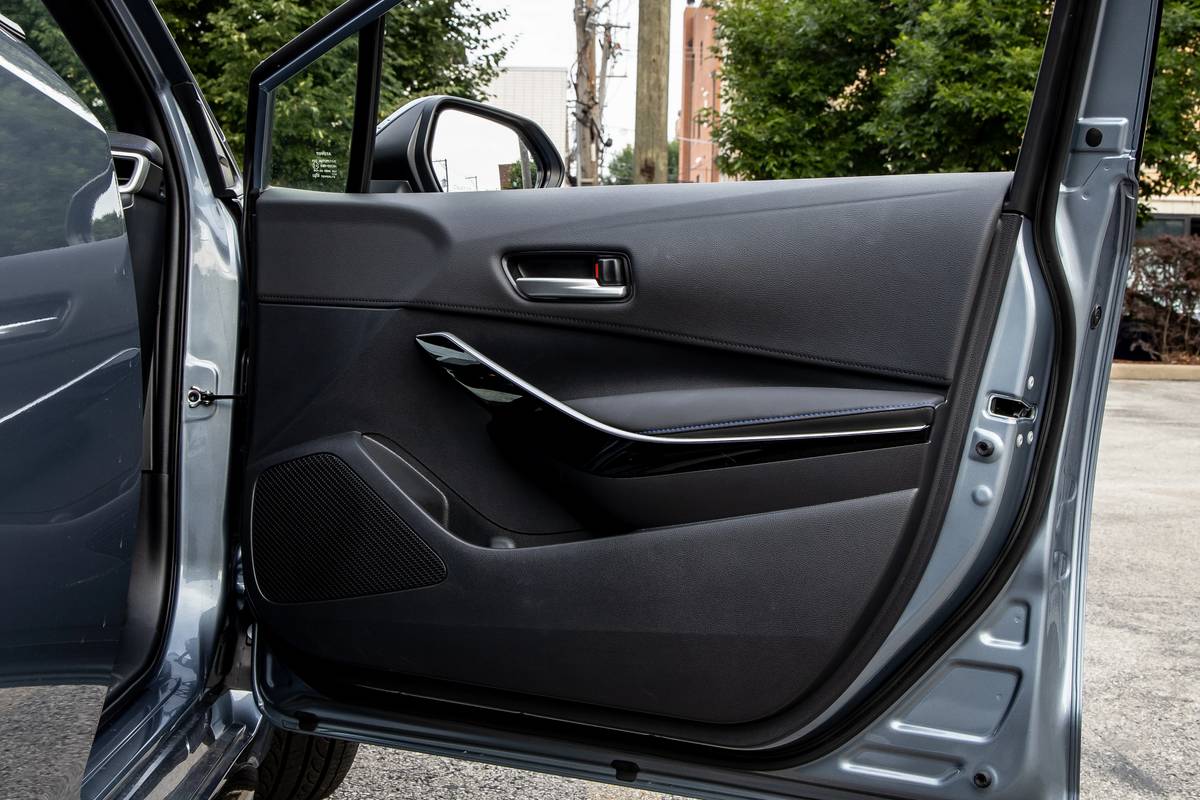
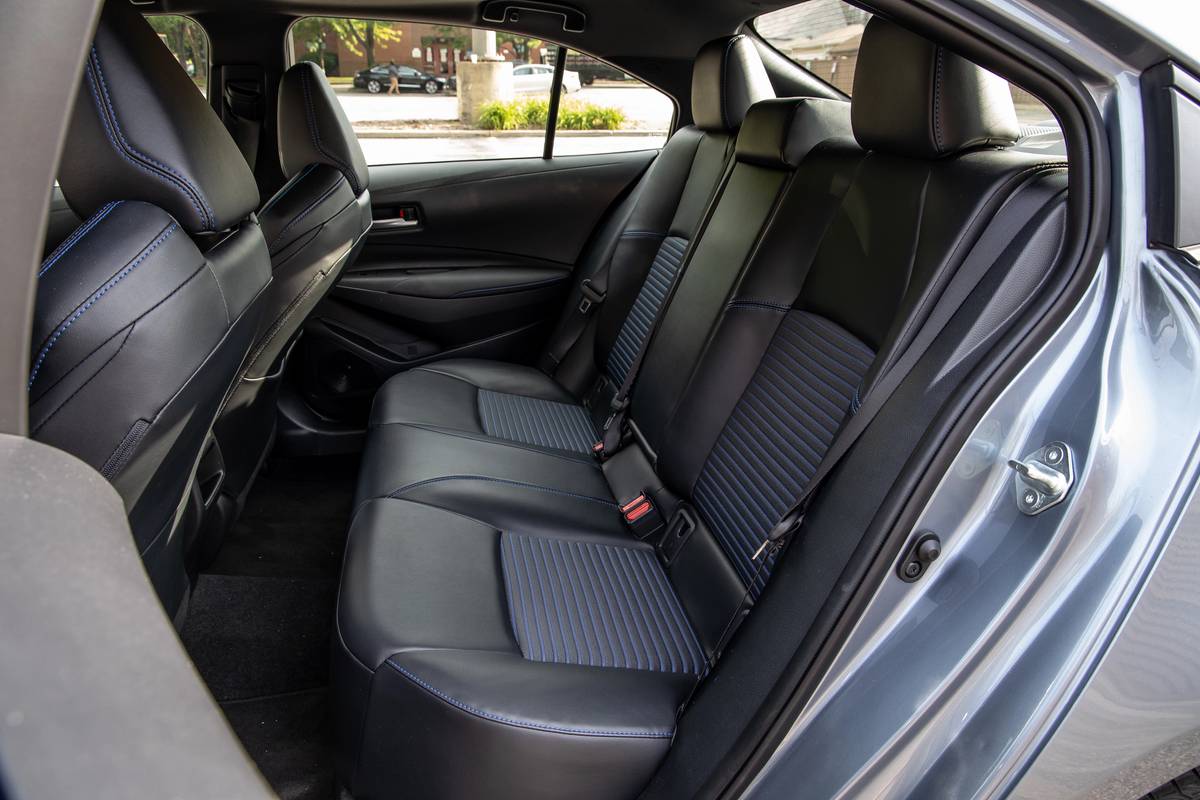
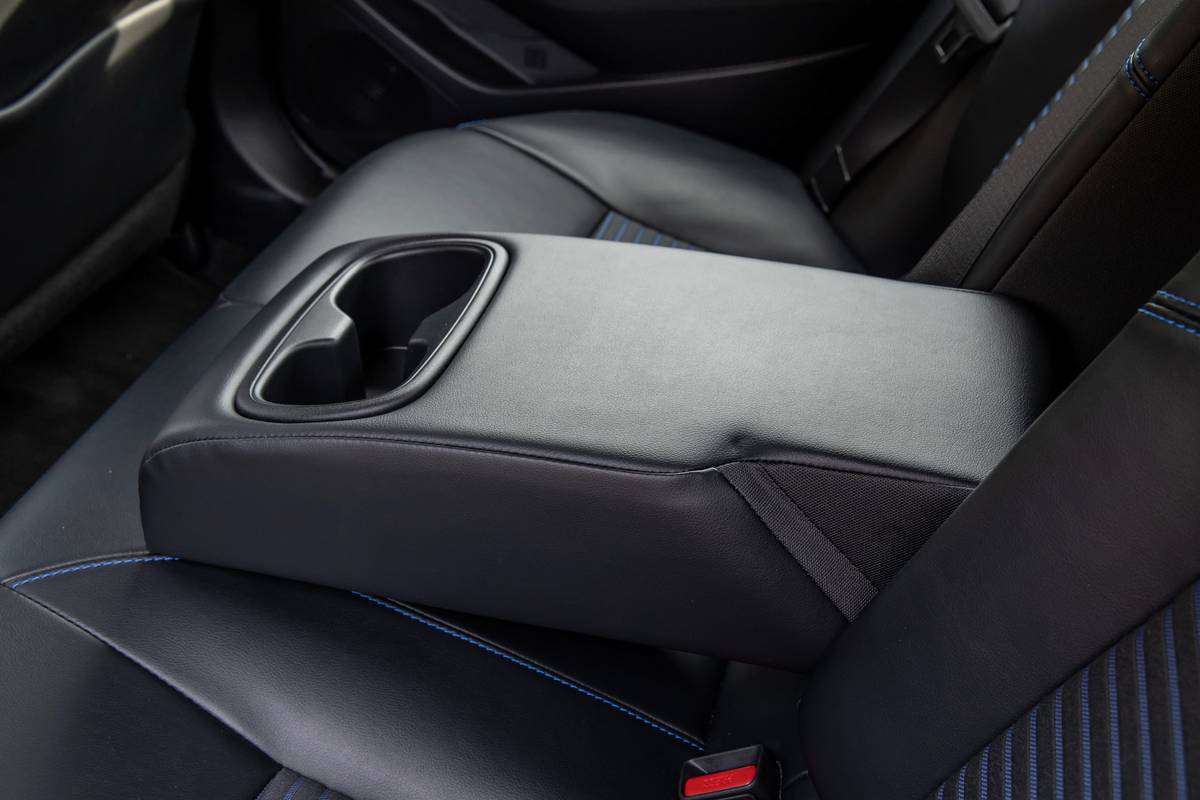
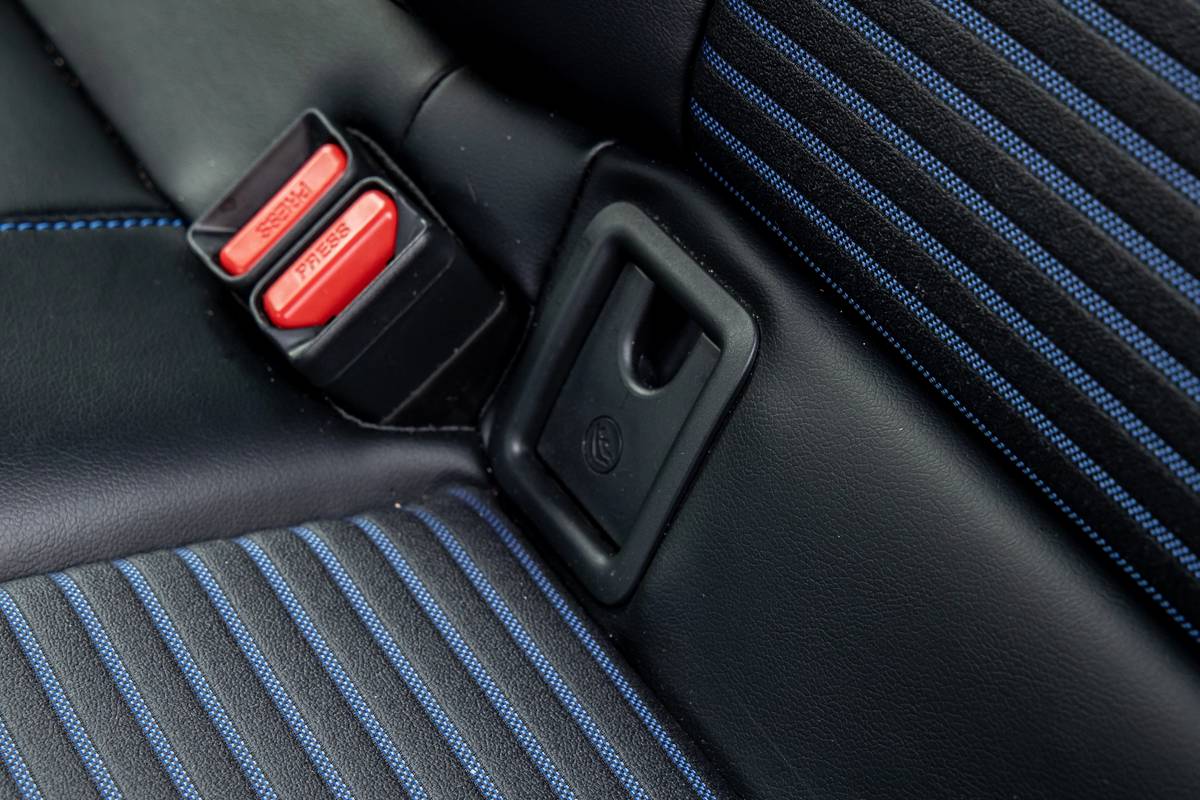
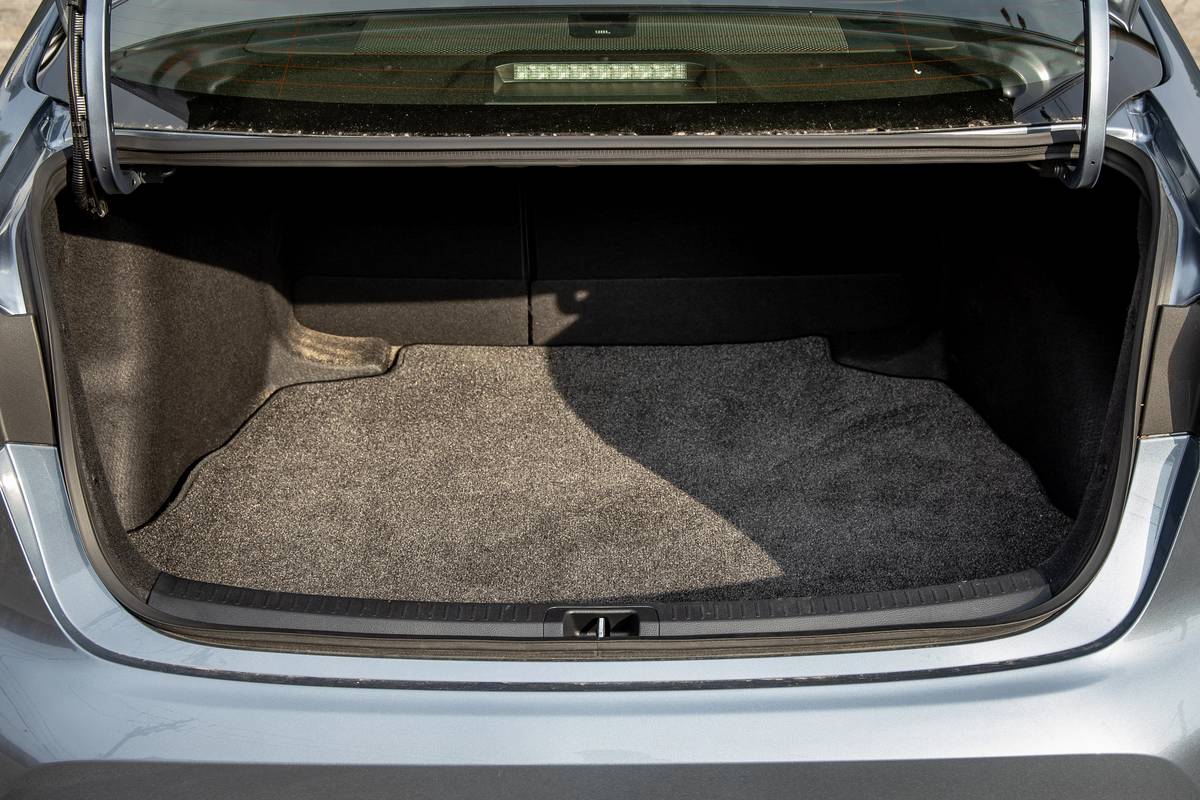












































Our Test Vehicle
As-tested price: $28,794
Powertrain: 169-horsepower, 2.0-liter four-cylinder; continuously variable automatic transmission; front-wheel drive
Estimated city/highway/combined mpg: 31/38/34
The redesigned 2020 Corolla’s advancements include pivoting headlights and lane-centering steering that operates down to a stop. Though one failing will be addressed when Android Auto is added for the 2021 model year, some of the shortcomings we cite are likely to stay with the Corolla for years to come. It topped two judging categories outright but lost in six.
The Good
Powertrain: Even though the Corolla has a weight disadvantage and its optional engine is less powerful than the Civic’s, its off-the-line acceleration was superior. This says as much about the Civic’s lag as it does the Corolla’s well-executed continuously variable automatic transmission, which proved more responsive to pedal inputs once in motion, as well. We didn’t score the powertrains based on mileage in this test, but it’s good to know the Corolla paid no penalty for the performance we appreciated.
Driver-assist technology: The Corolla XSE’s Lane Tracing Assist provided lane-centering steering down to a stop, bolstering its score above the Civic’s, whose equivalent Lane Keeping Assist System operated only at higher speeds. Typical of Toyotas, the system beeps each time it loses “sight” of lane markings, which some drivers find irritating, but this functionality down to a stop remains rare in the class at this time.
Ride quality: Though the Corolla ranked second in this category, there was a clear divide: two comfortable riding cars and one firm-riding car. The Corolla is definitely more on the side of comfort. Its body reacted a bit more to road imperfections, but it wasn’t bad for the XSE trim level considering that its suspension is, along with the SE’s, designated sport. (Other Corolla trim levels have regular suspension tuning.)
Free scheduled maintenance: The Corolla is the only contestant to include free scheduled maintenance, in this case for the first two years or 25,000 miles. It’s a nice distinction because bumper-to-bumper and powertrain warranties are identical among the three, and roadside assistance is comparable.
Pivoting headlights: Our accounting of safety features was a photo finish in terms of points, but the Corolla stood out as the only model with headlights that pivot in the direction of a turn, thanks to the optional Adaptive Front Lighting System.
Backseat cupholders: The backseat’s flip-down center armrest, where all three cars provide a pair of beverage holders, is wider, resulting in truly separate holes. The other cars’ mimic a Venn diagram; try and stuff a couple large cups in at the same time, and you’ll find a large Coke to-go and a Starbucks Grande Caffè Americano don’t intersect as organically as data sets A and B. In the Toyota, it’s not a problem.
The Bad
In-cabin storage: The Corolla stumbles in almost every aspect of this category, resulting in the worst point spread from the leader in the whole test. Both the covered and open console space is markedly smaller than the others, as are its door pockets and armrest bins. Technically, there are eight cupholders total, as in the Sentra, but we didn’t find two of the door-pocket bottle holders very convincing.
Value: With another substantial gap from the leader, the Corolla wasn’t much of a value. Despite exclusives like three years of the Safety Connect telematics system and a Wi-Fi hot spot, It didn’t have enough features to compensate for being the most expensive car in the test, as equipped. Things like key fob remote start, an auto-dimming rearview mirror, HomeLink, Android Auto, an electric fuel-door release and a dual-zone climate control system — all included on the more affordable Sentra — were missing.
Interior quality: The Corolla was a step behind the other two in cabin quality, with black vinyl and blue-striped cloth, both accented with blue stitching. (The fact that this is vinyl as opposed to leather is scored in the value category; here we object to the quality of the vinyl.) We’ll credit Toyota for using real thread in its dashboard versus the fake stitching molded into the Civic’s urethane dash, but the Corolla’s blue just didn’t work for one judge. The Corolla also fell behind in the feel of its mechanical controls; its shifter and turn signal stalks feel — and in some cases sound — loose and cheap.
Multimedia apps and sources: The Corolla took a beating because it still doesn’t offer Android Auto for 2020, though Toyota adds it for the 2021 model. It does include Apple CarPlay as standard, and the other contestants include both features. Having built-in navigation thanks to an option package helped its score somewhat, but we prefer smartphone-based navigation. The same package also provided the Corolla’s exclusive feature in this judging category, a wireless smartphone charging pad, but the feature proved erratic when attempting to charge an Android phone with a bulky case.
Front seats: Our scoring for seats includes roominess, settings, comfort and amenities. The Corolla rated last behind the Sentra, by a point, for two reasons: One is that it lacked the power passenger seat our Civic included, and the other is that one judge found the seats overstuffed and unsupportive for longer drives, with unnecessarily prominent side bolsters given the car’s character.
Braking: We didn’t perform instrumented braking tests, so our scores are based on our impressions of braking strength, linearity and pedal feel, not stopping distances. In short, the Civic and Sentra had better linearity than the Corolla, which felt a bit mushy on application and gave up braking on release — but it was better than we’ve experienced on some Toyotas.
Static backup camera lines: Though the Corolla had headlights that automagically pivot in the direction of a turn as mentioned above, the lines on the backup camera image fail to do so — the only one of the contestants and a rarity among modern cars.
Research the 2020 Toyota Corolla | Search Inventory | Car Seat Check
2. 2020 Nissan Sentra SV (213 points)
The verdict: A more complete redesign than we’ve seen from Nissan in a while, the Sentra is a comfortable, quality car that’s nicely equipped for the price.
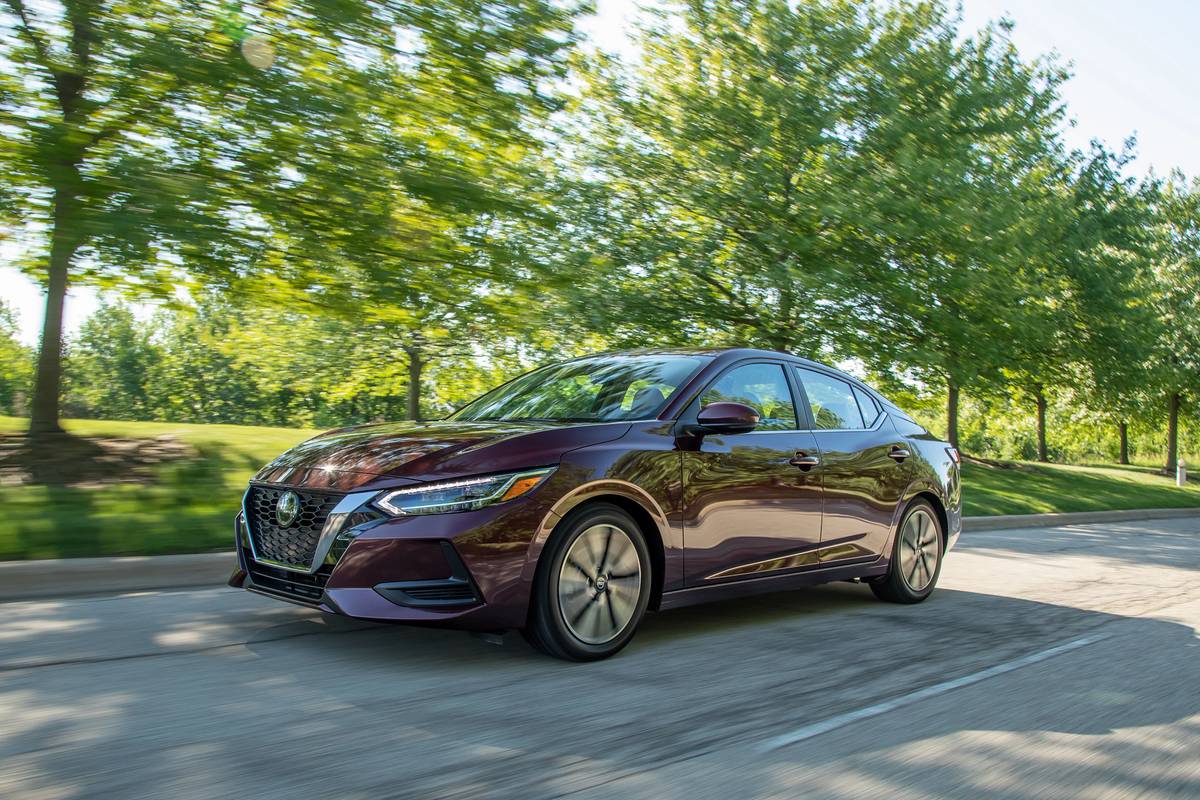
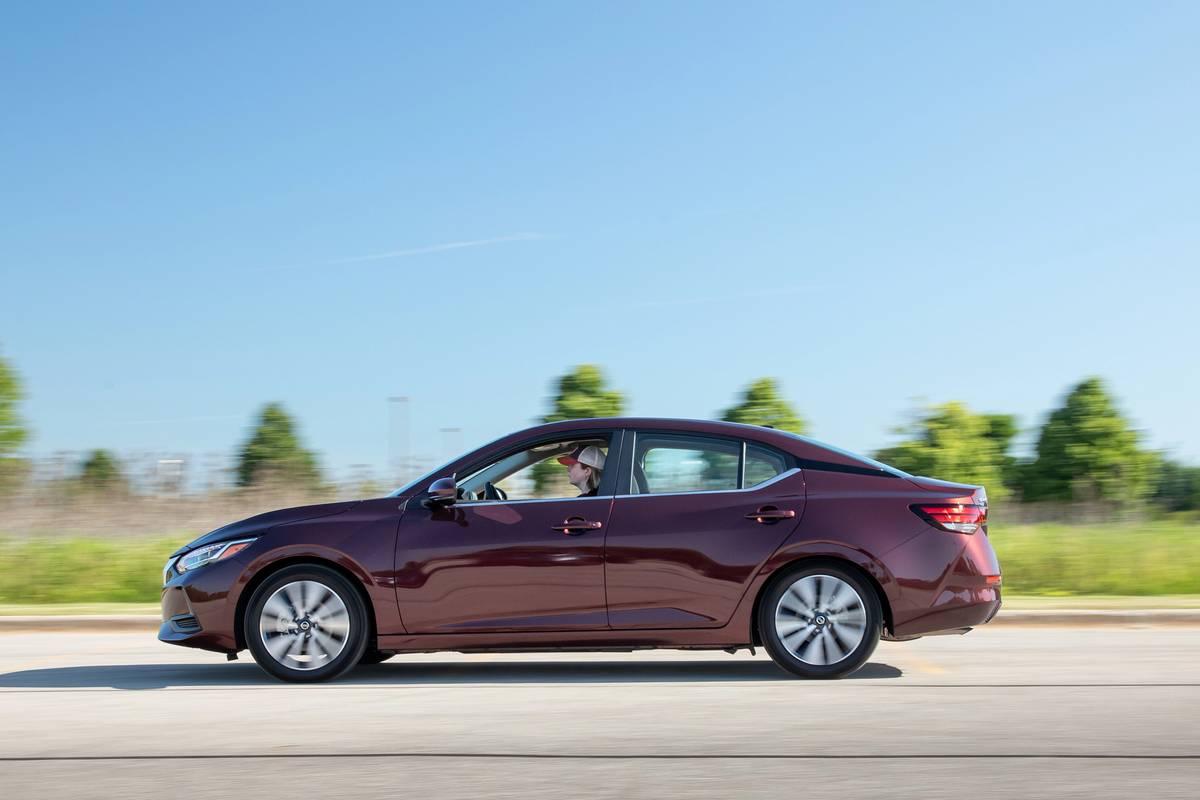
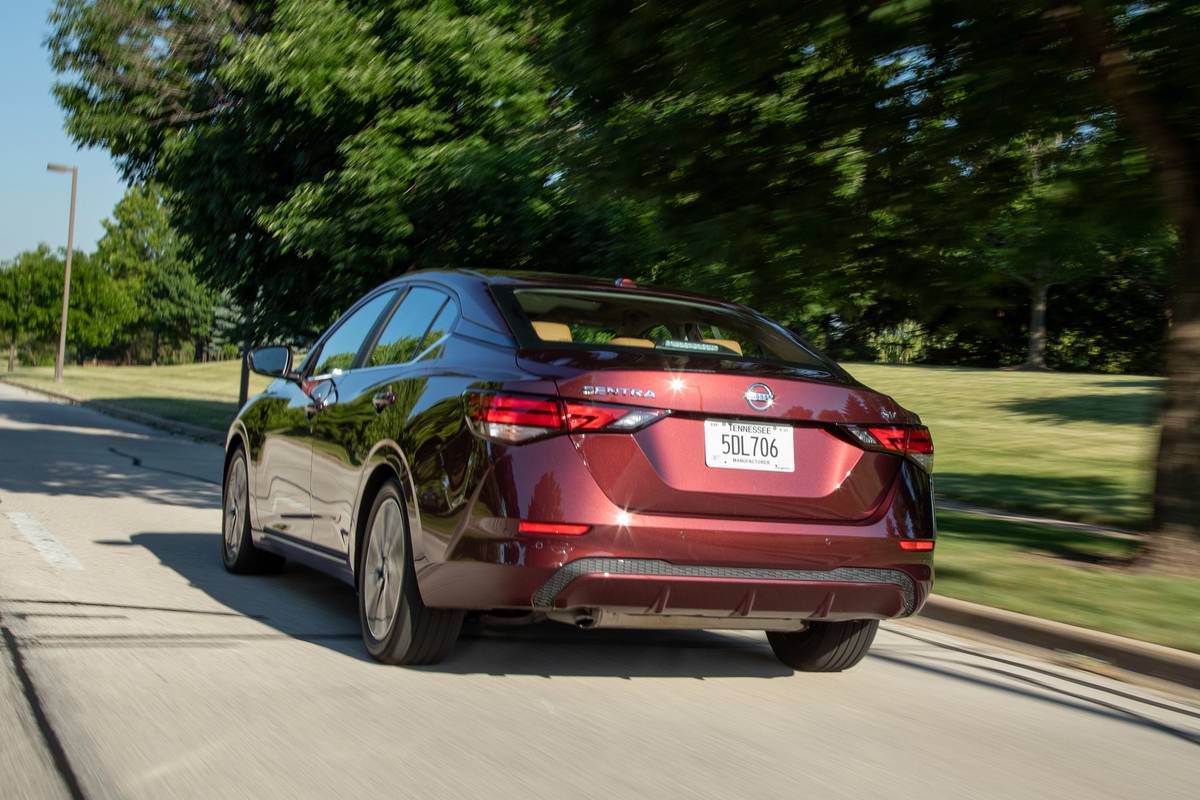
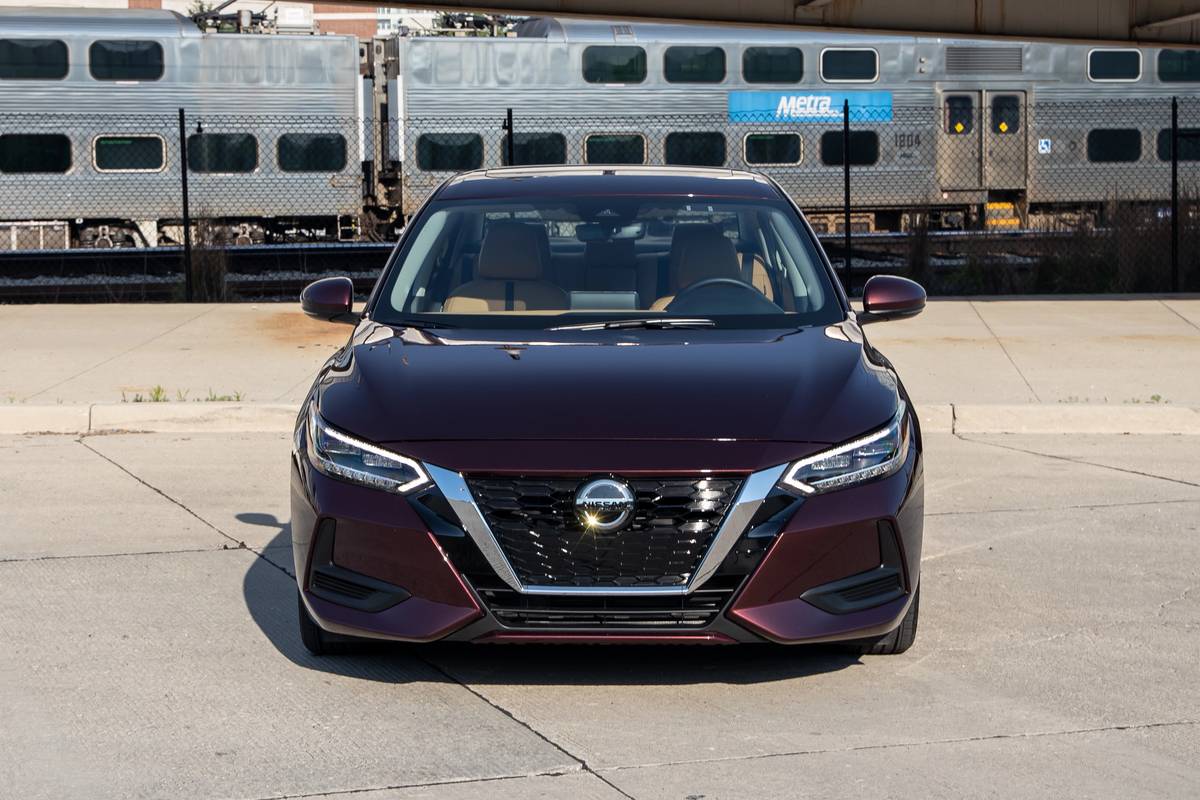
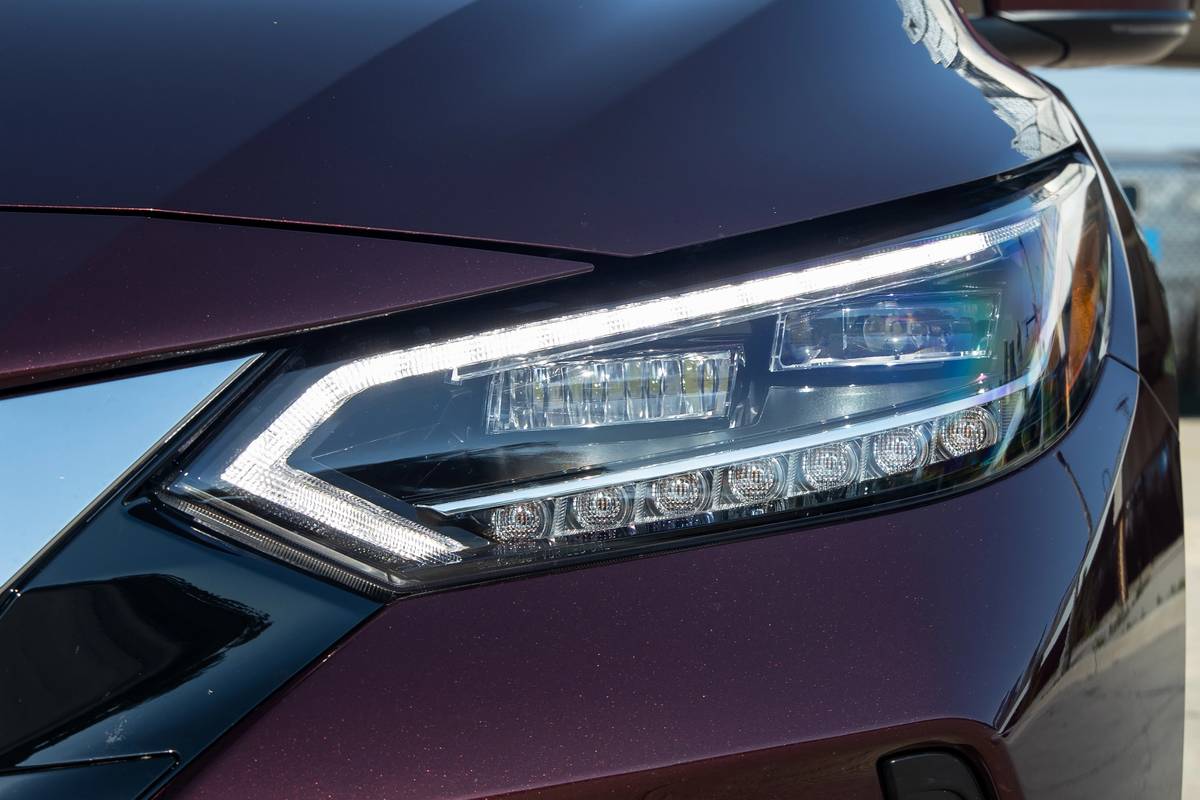
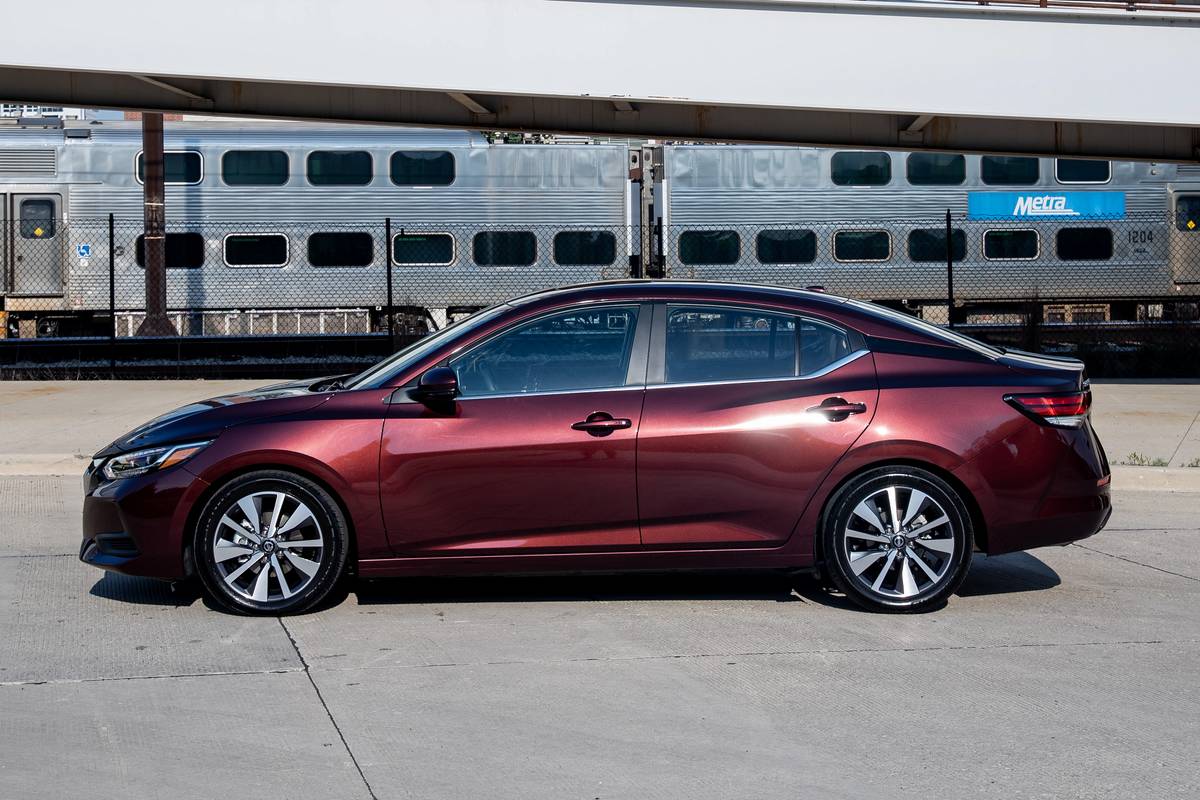
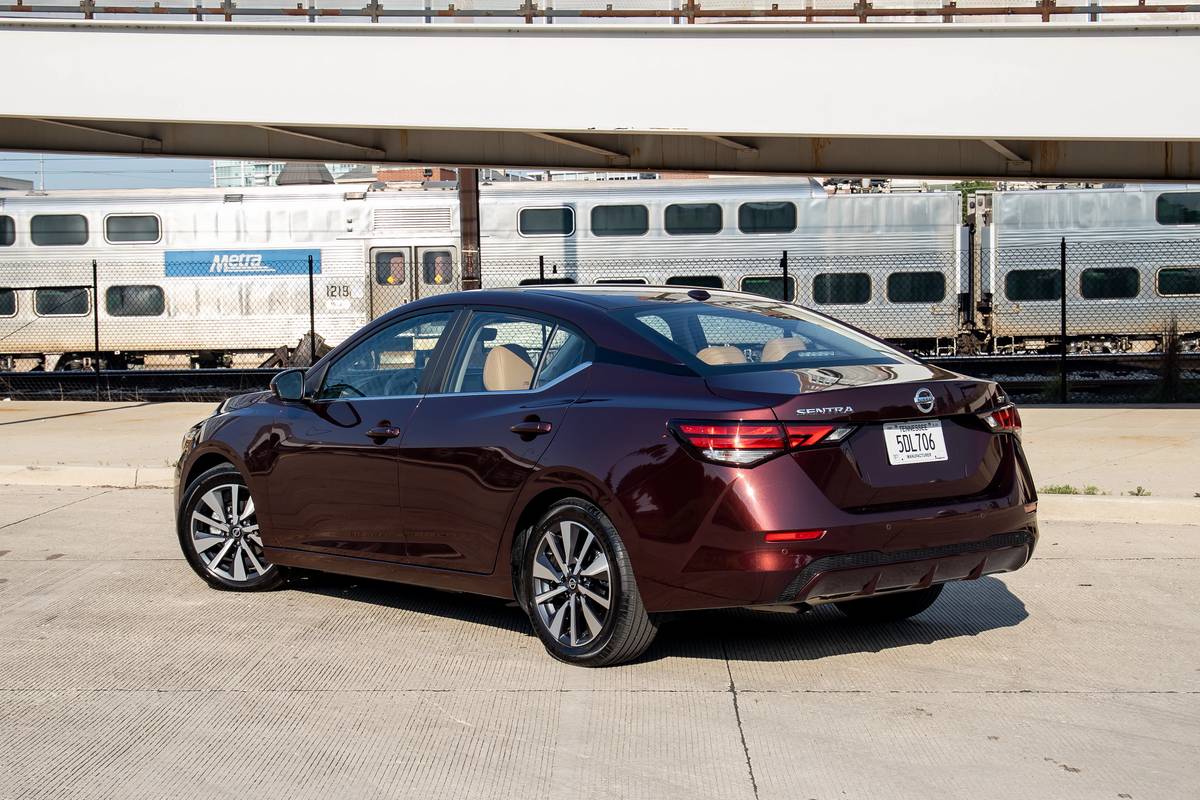
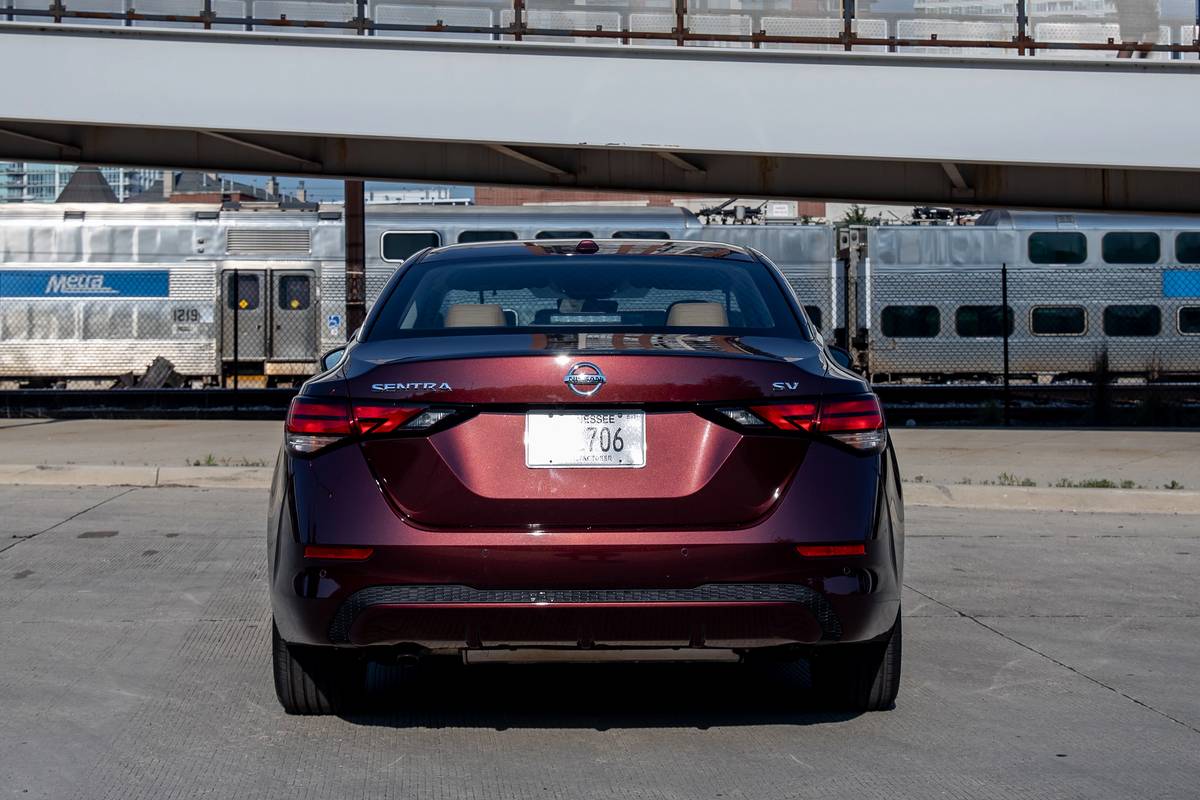
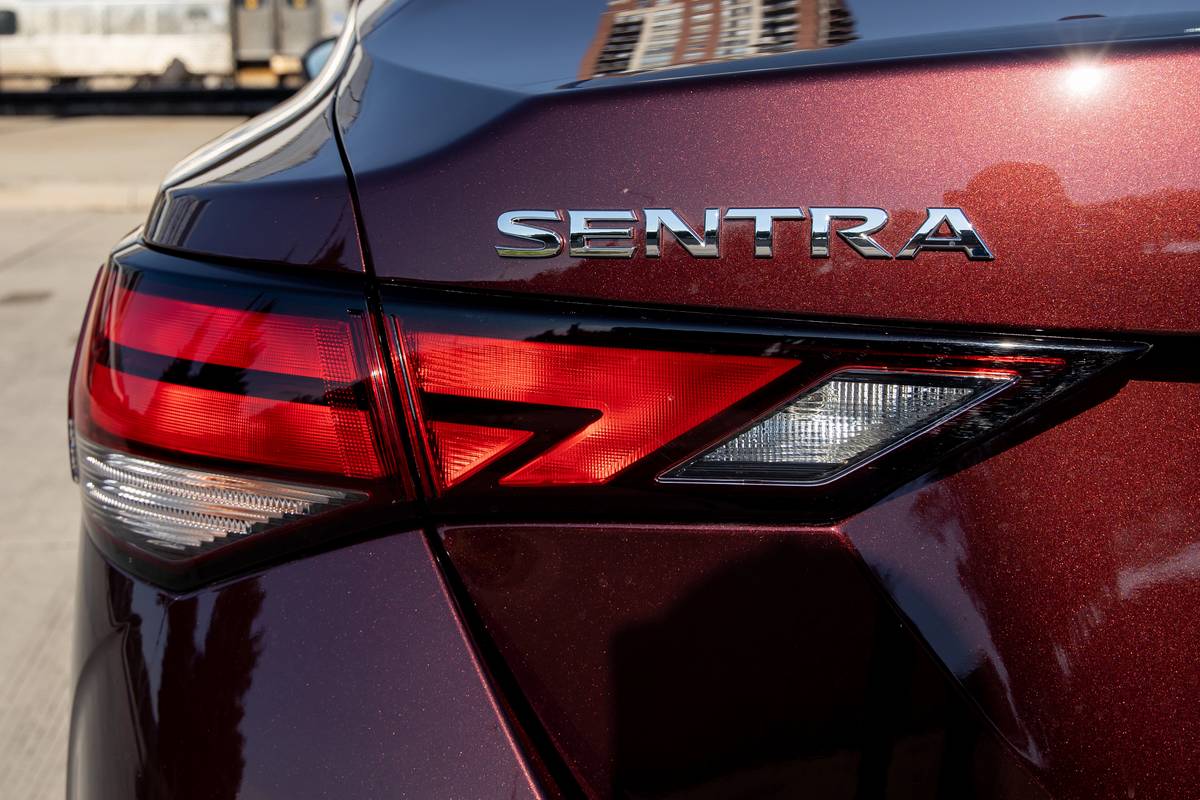
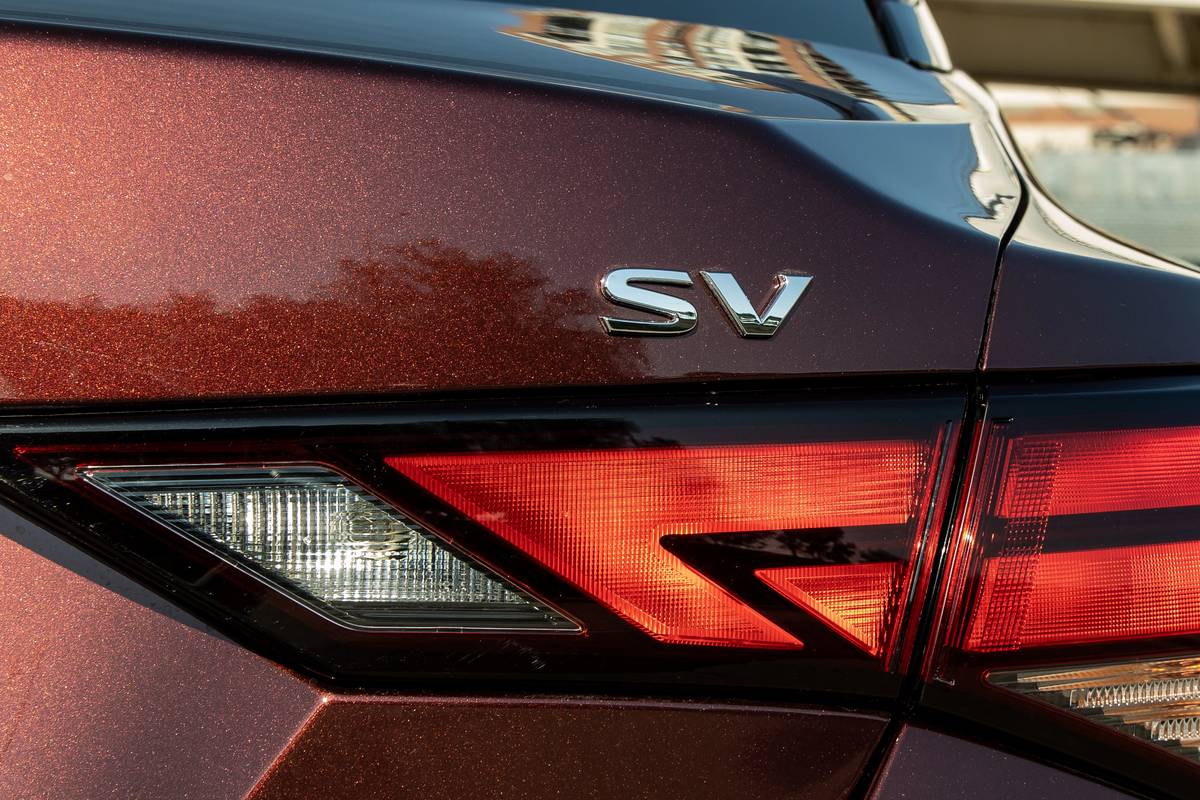
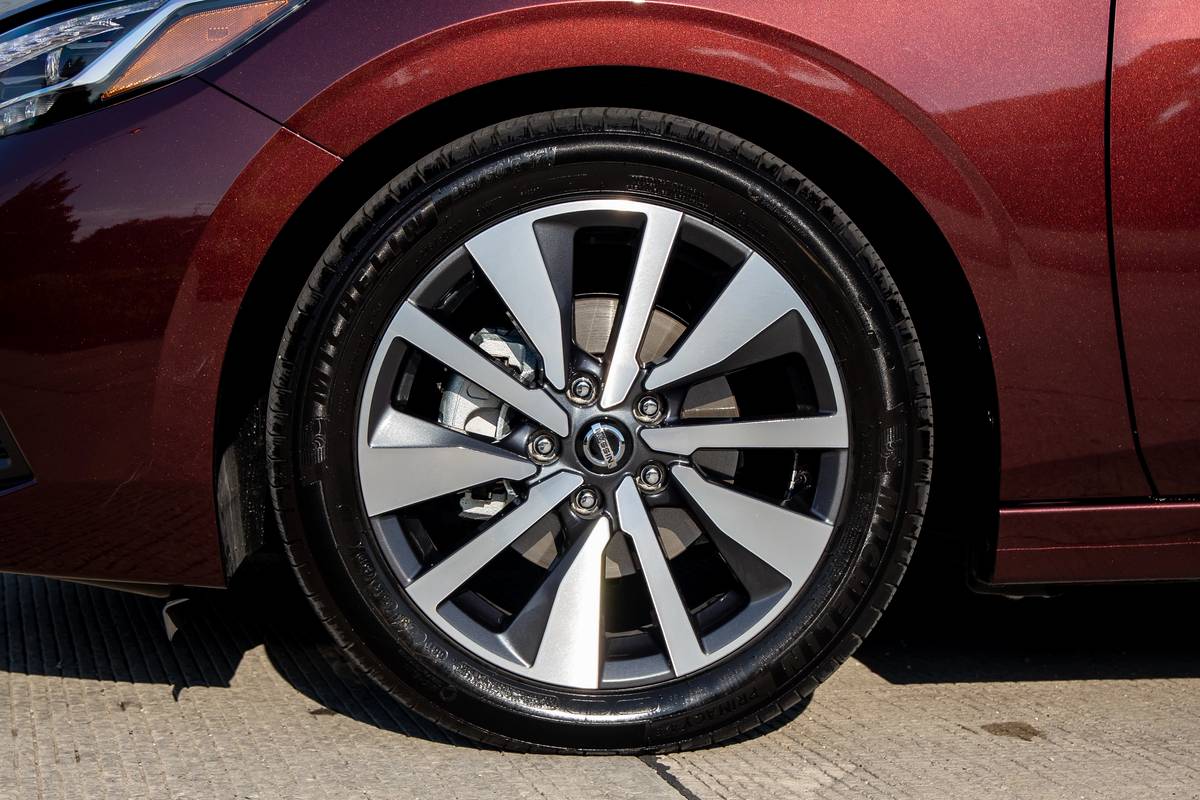
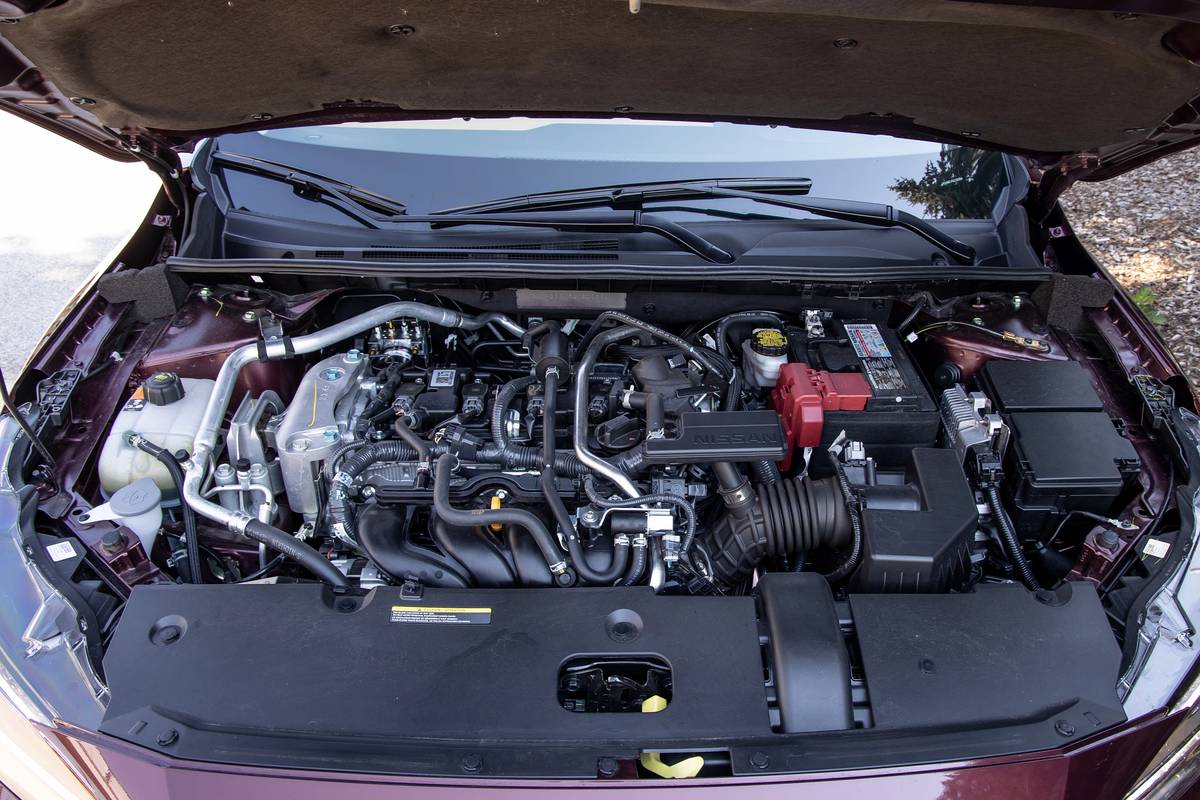
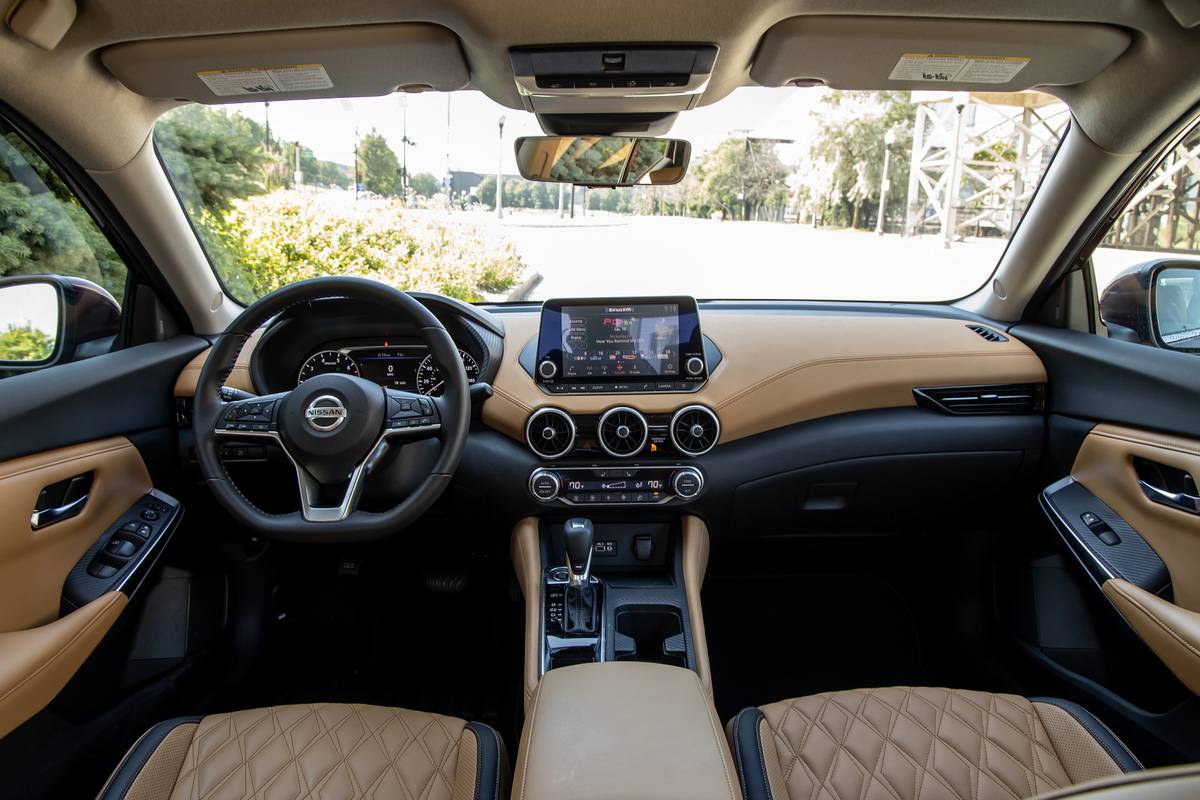
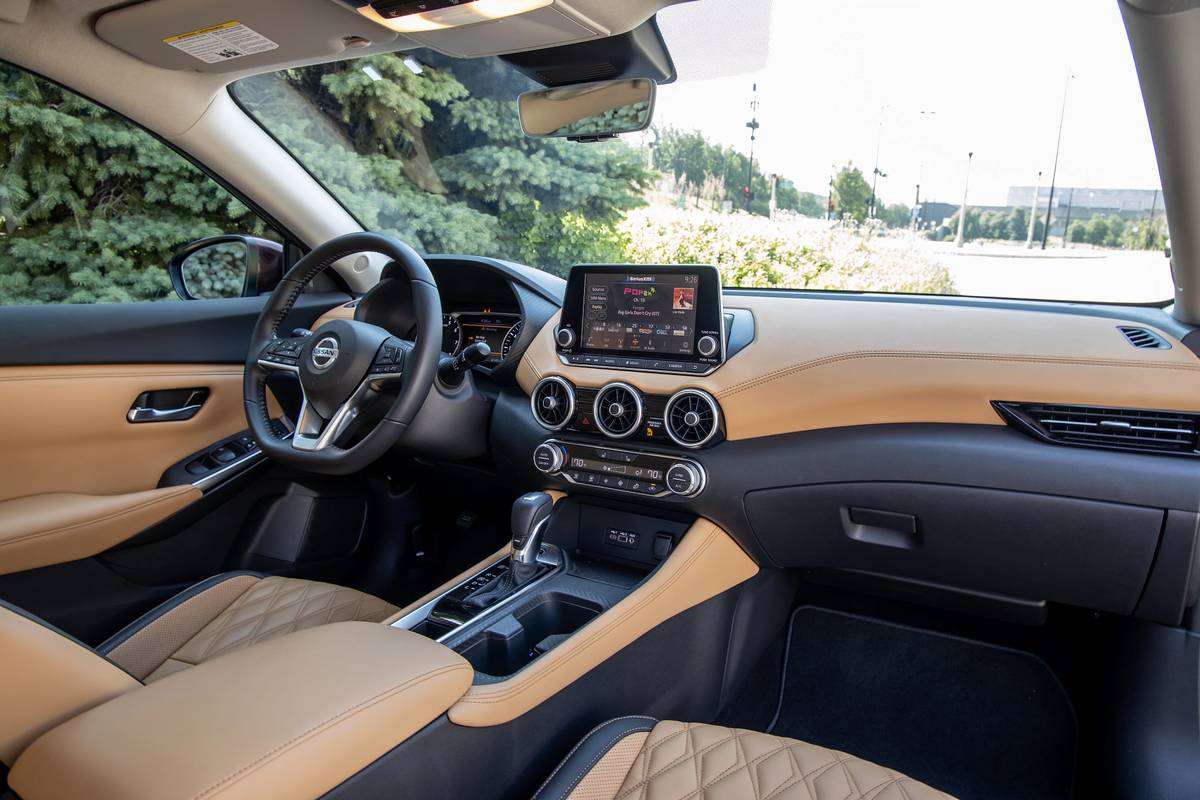
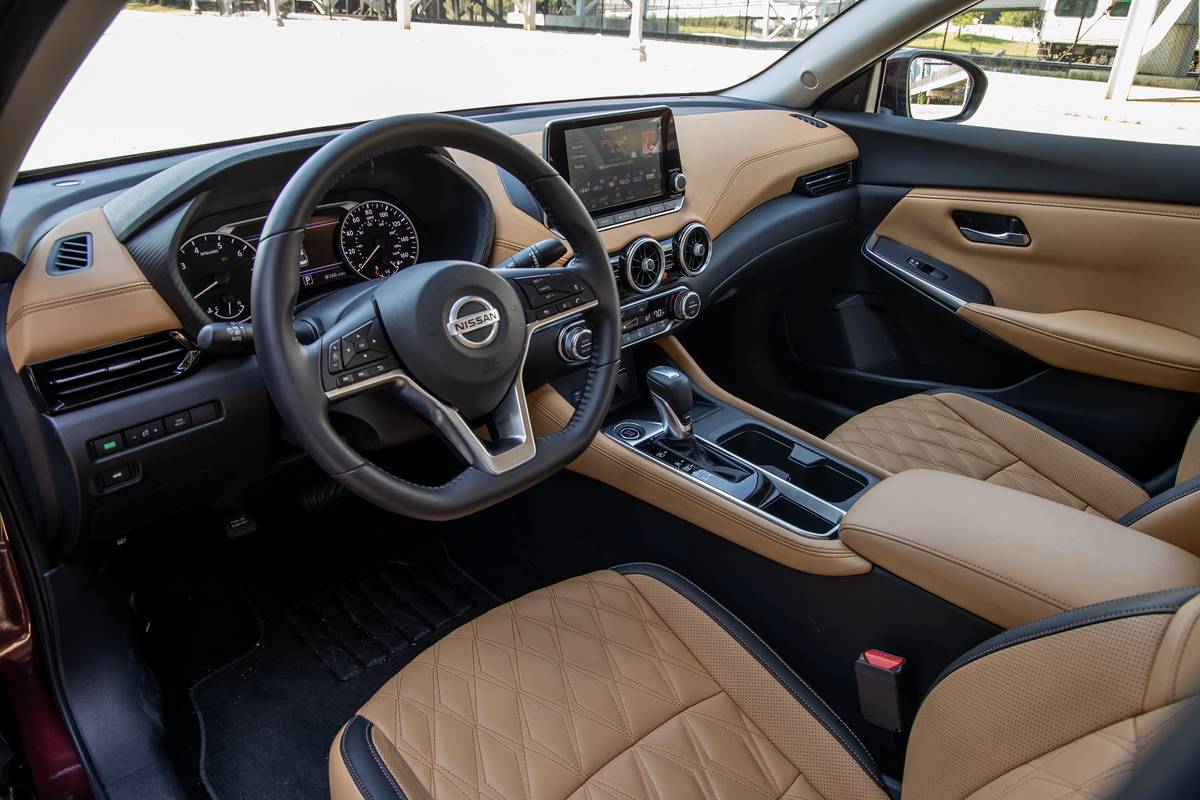
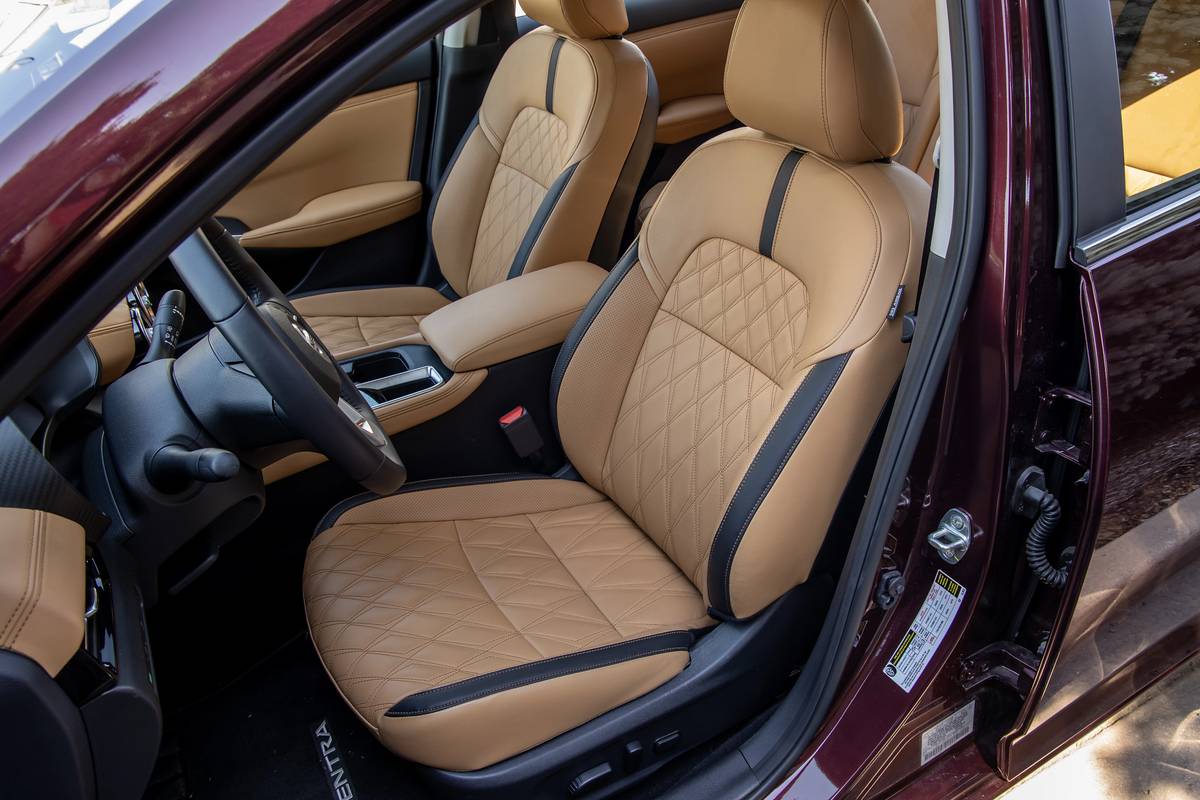
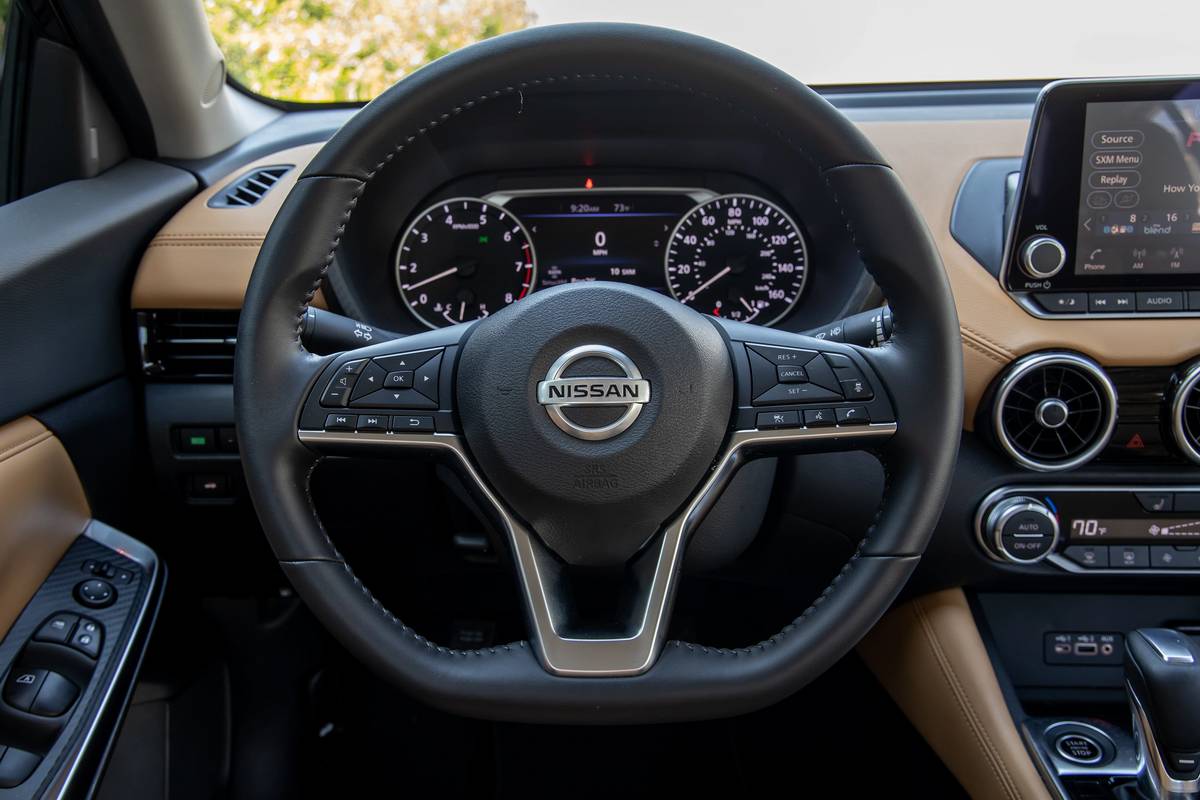
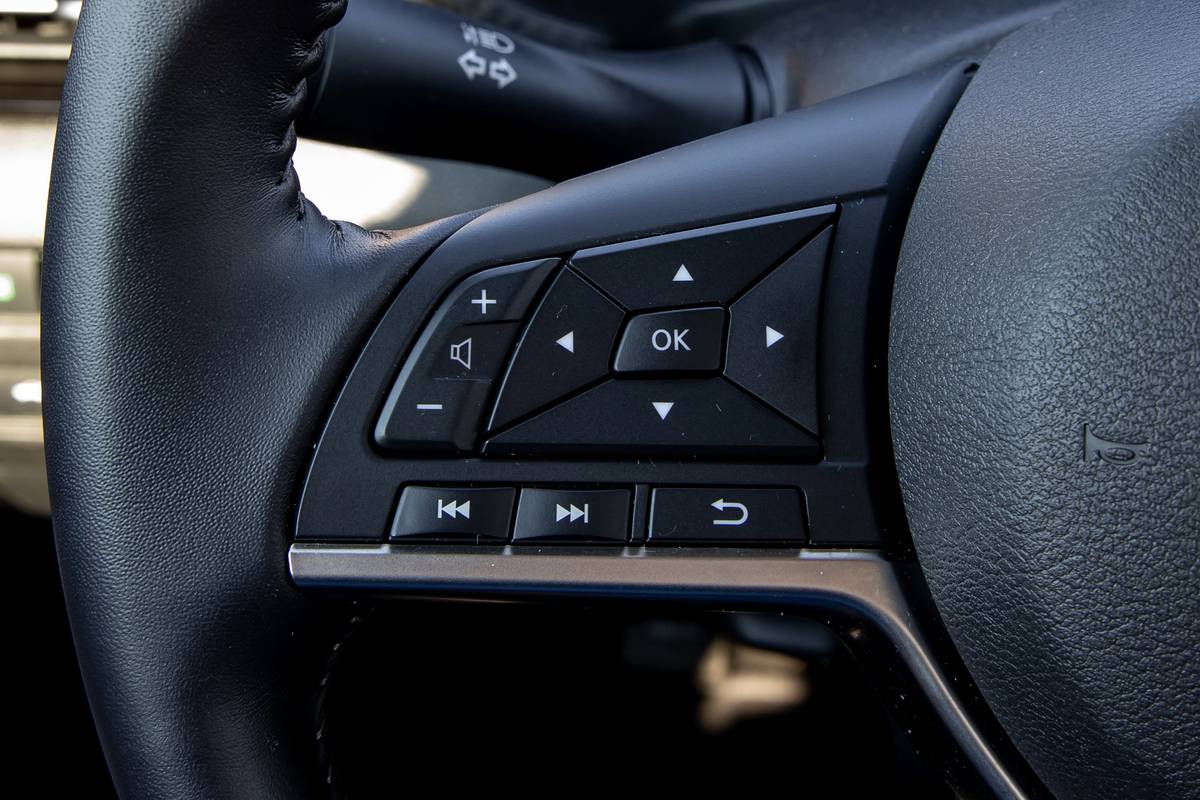
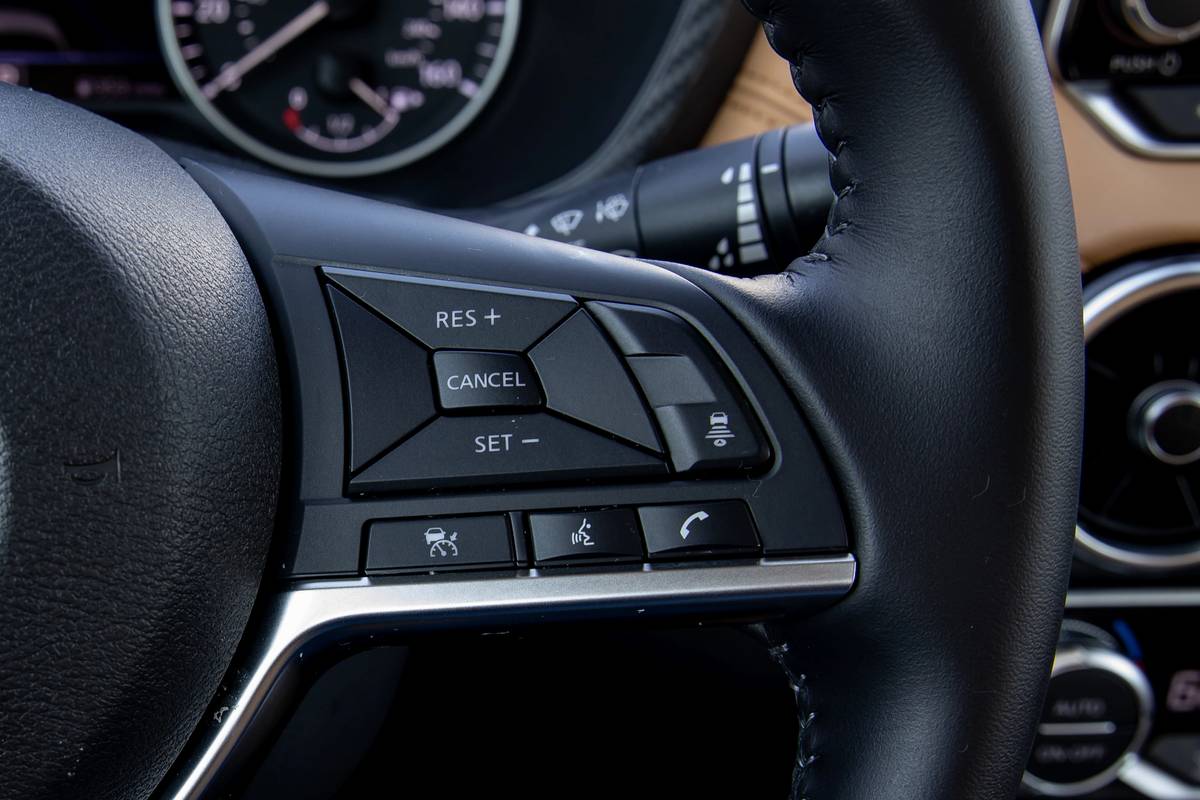
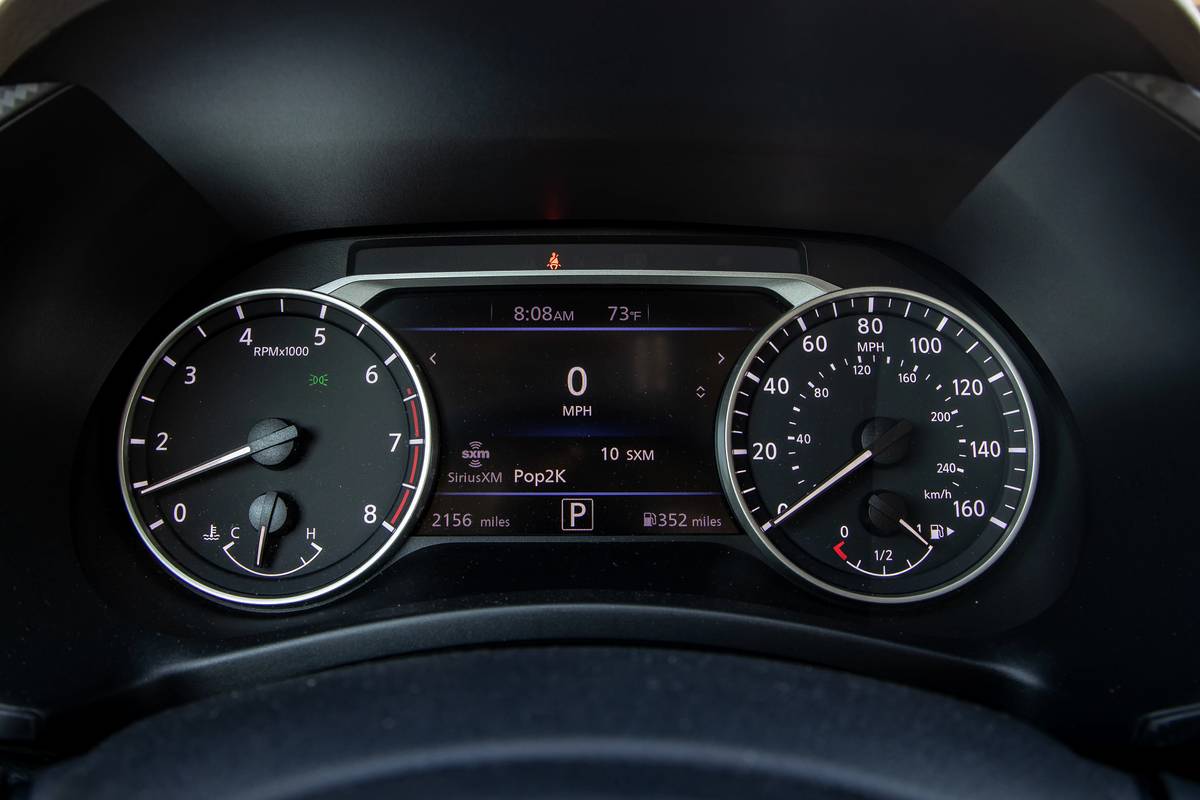
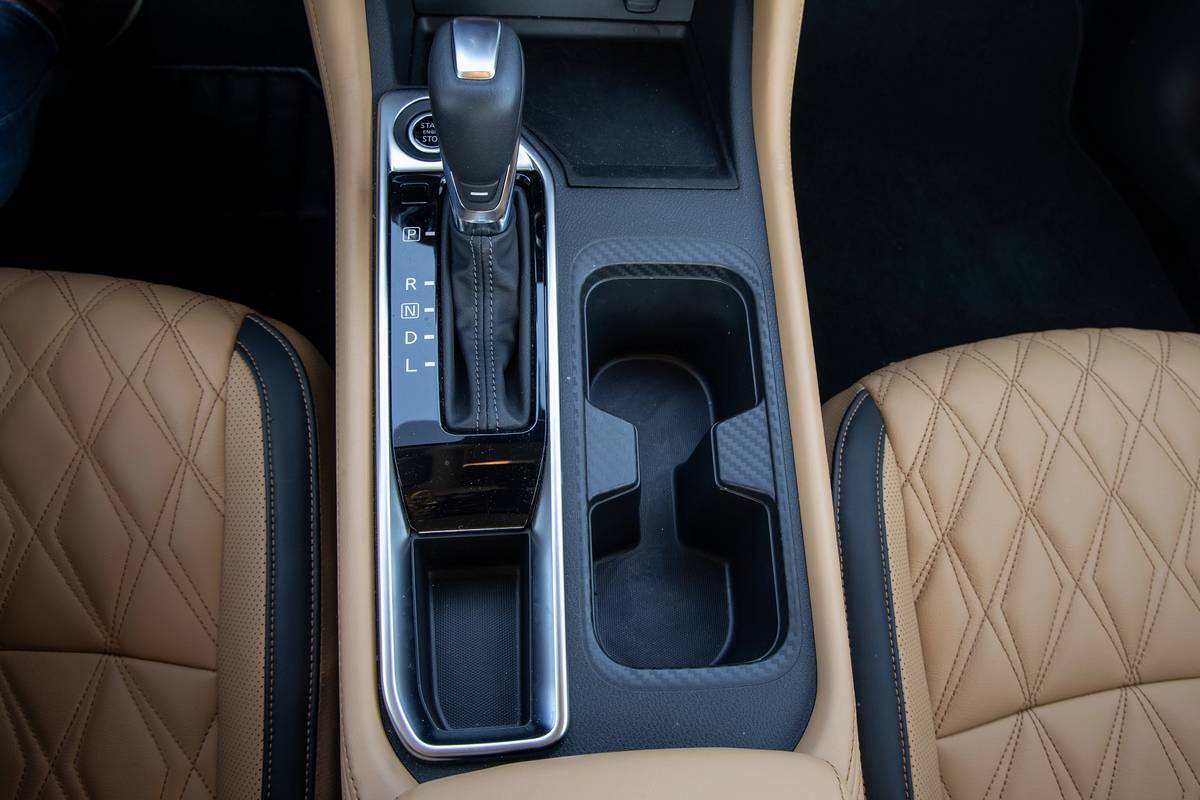
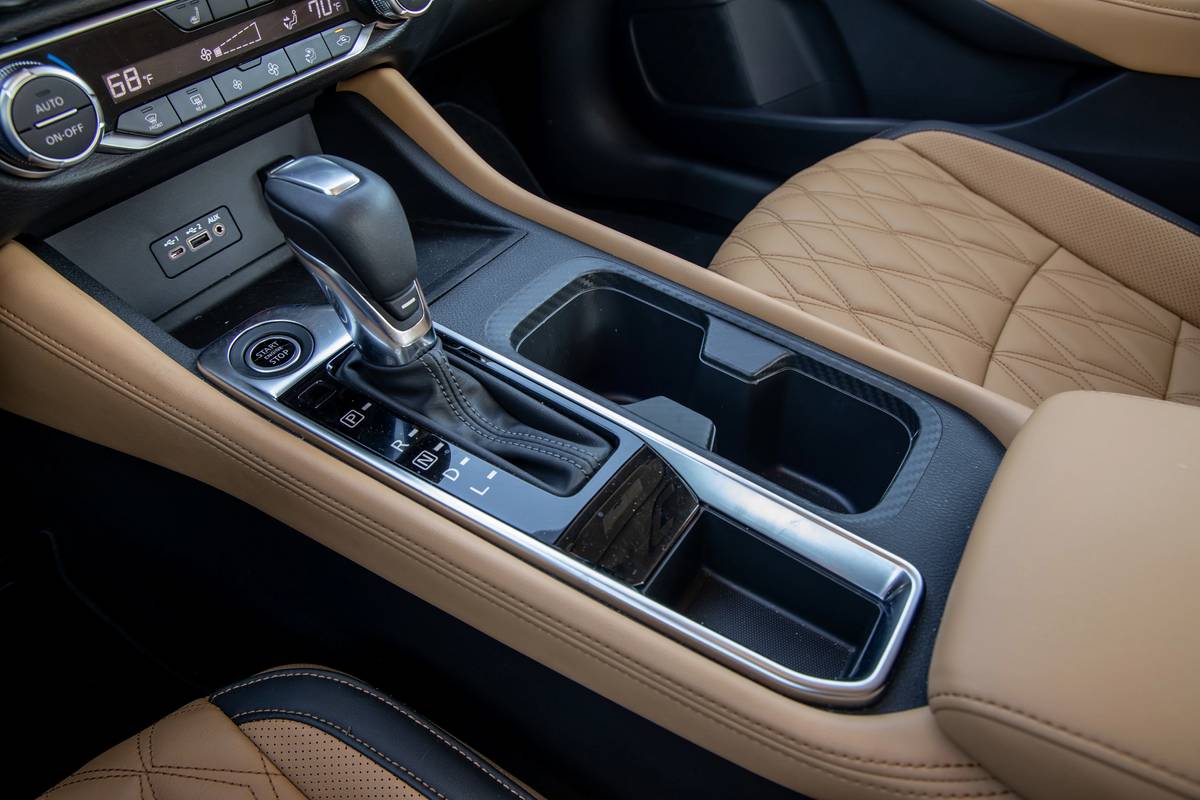
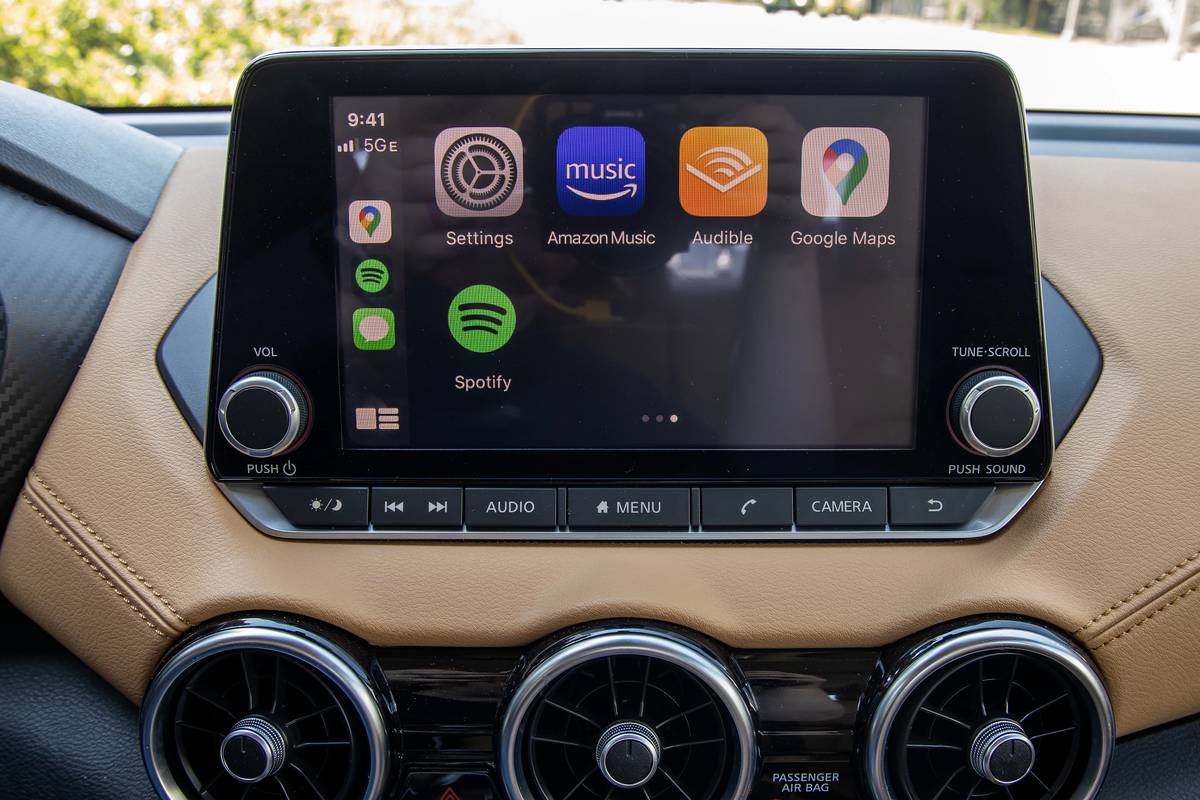
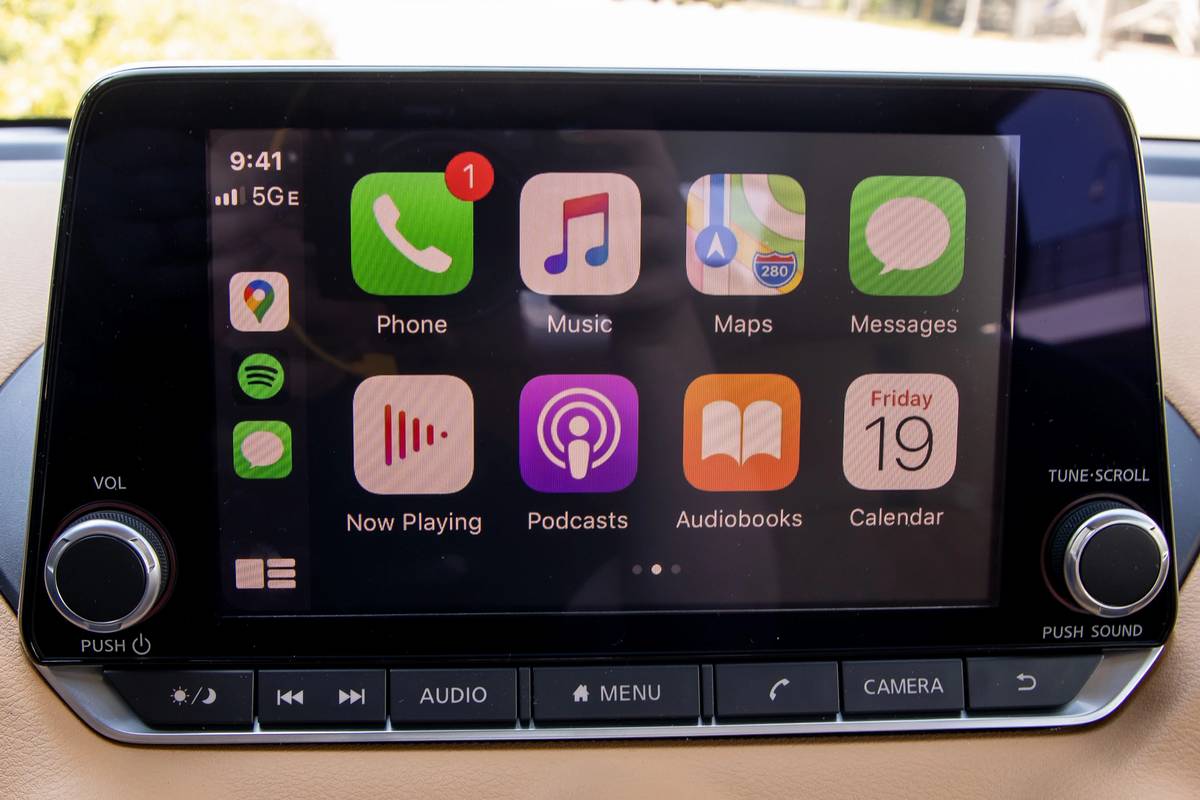
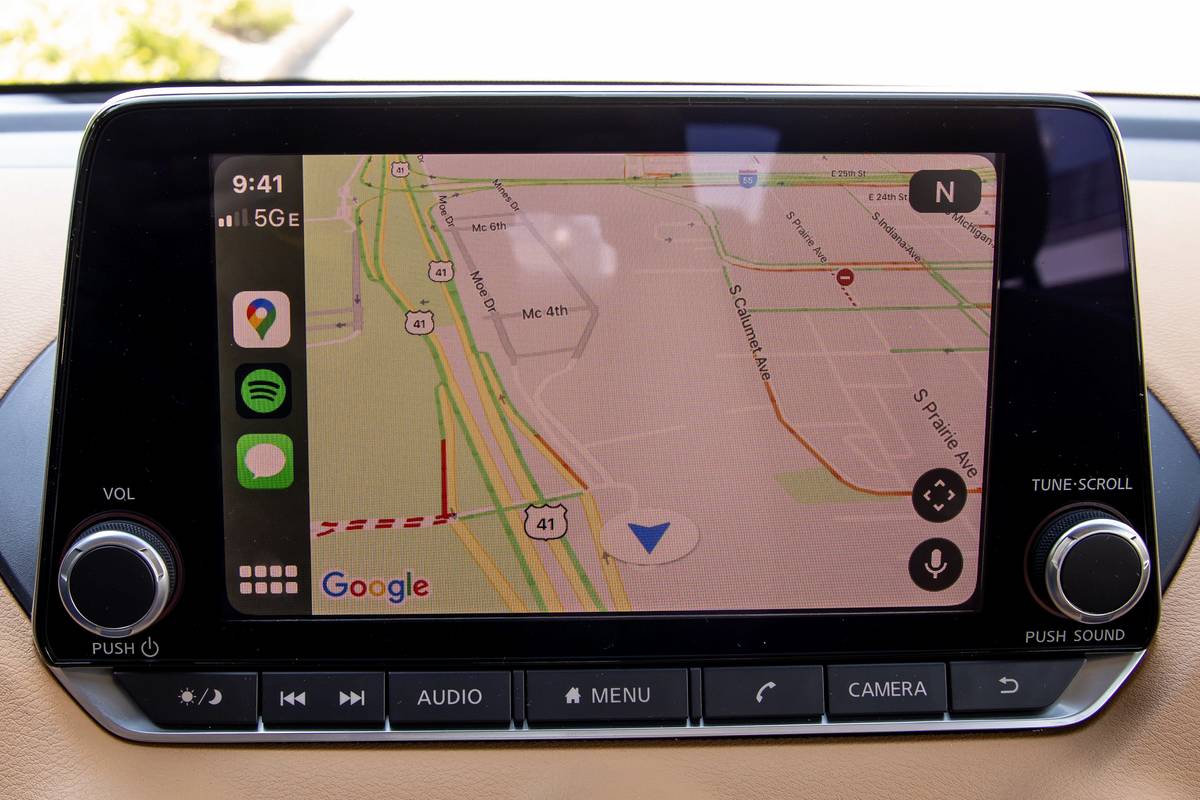
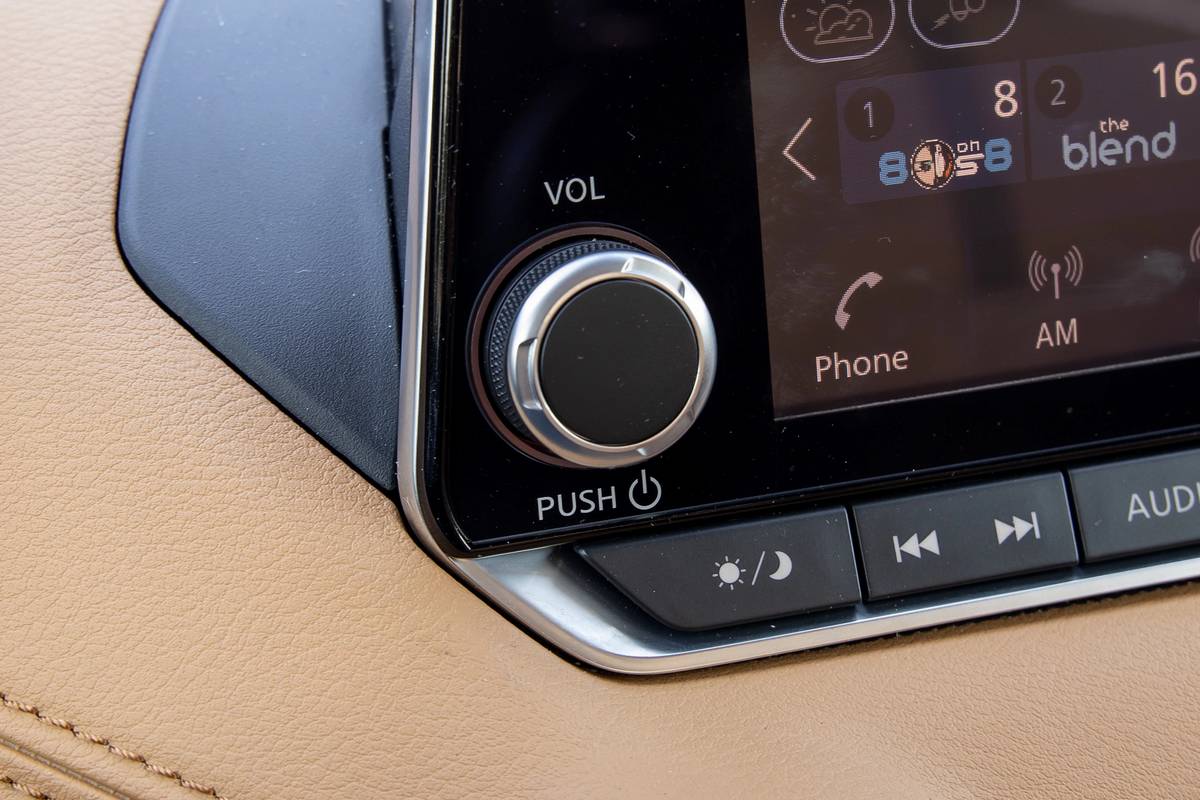
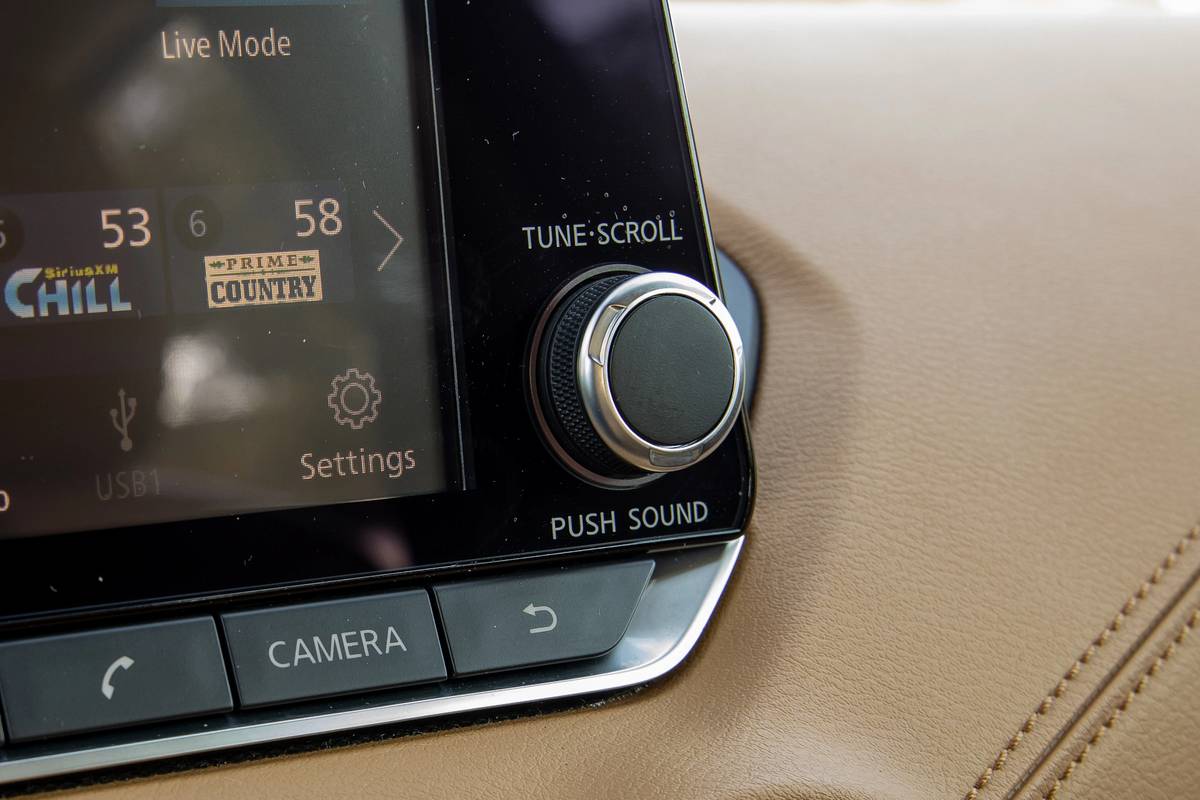
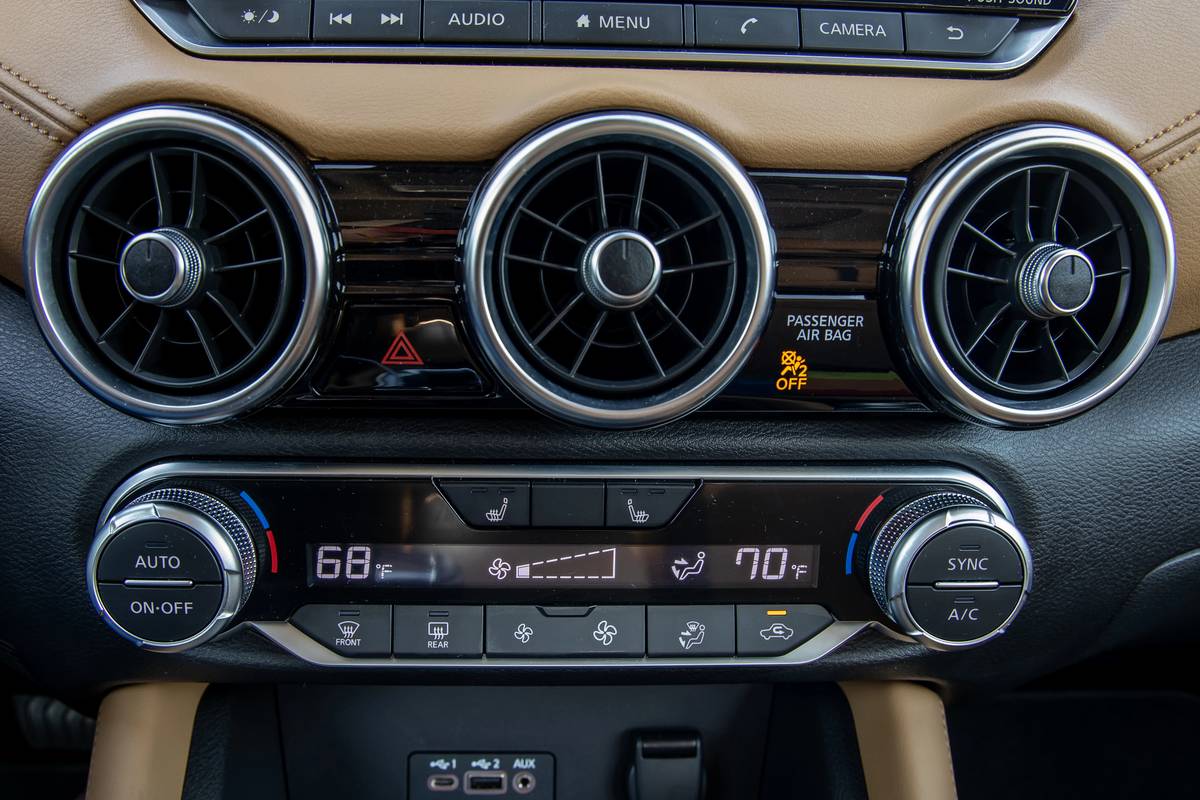
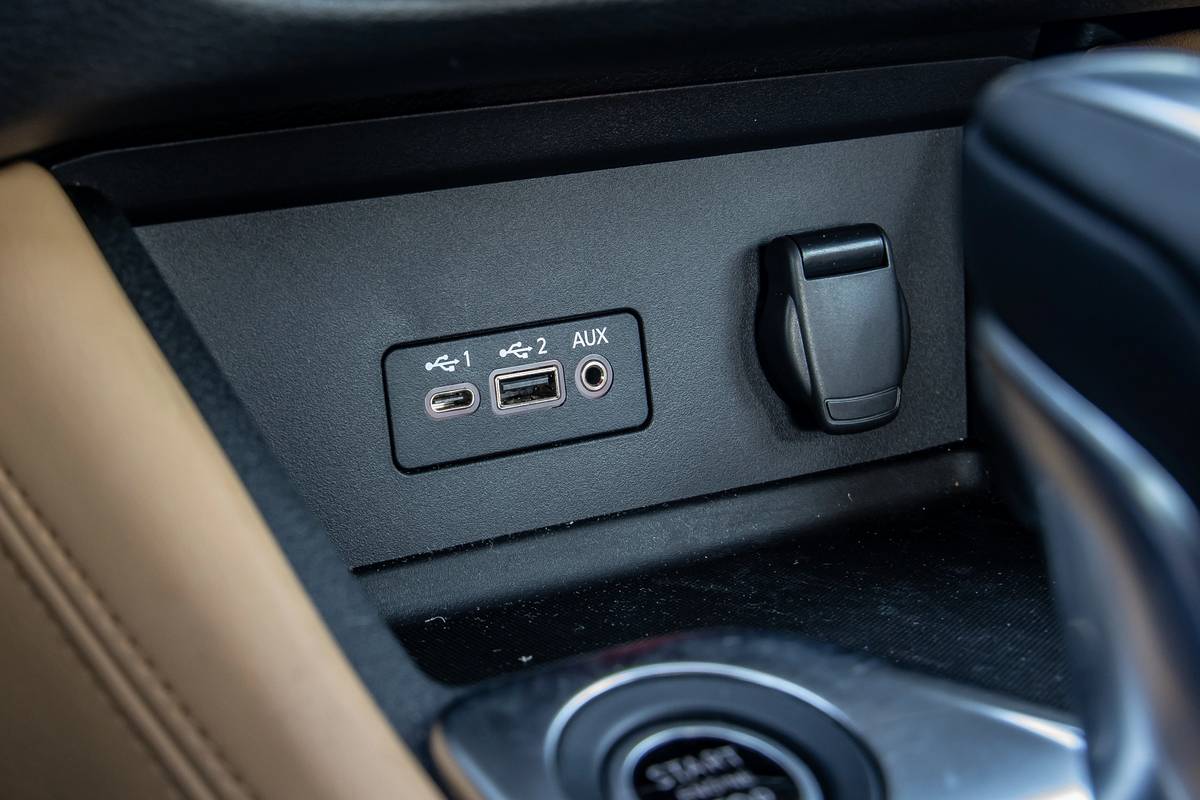
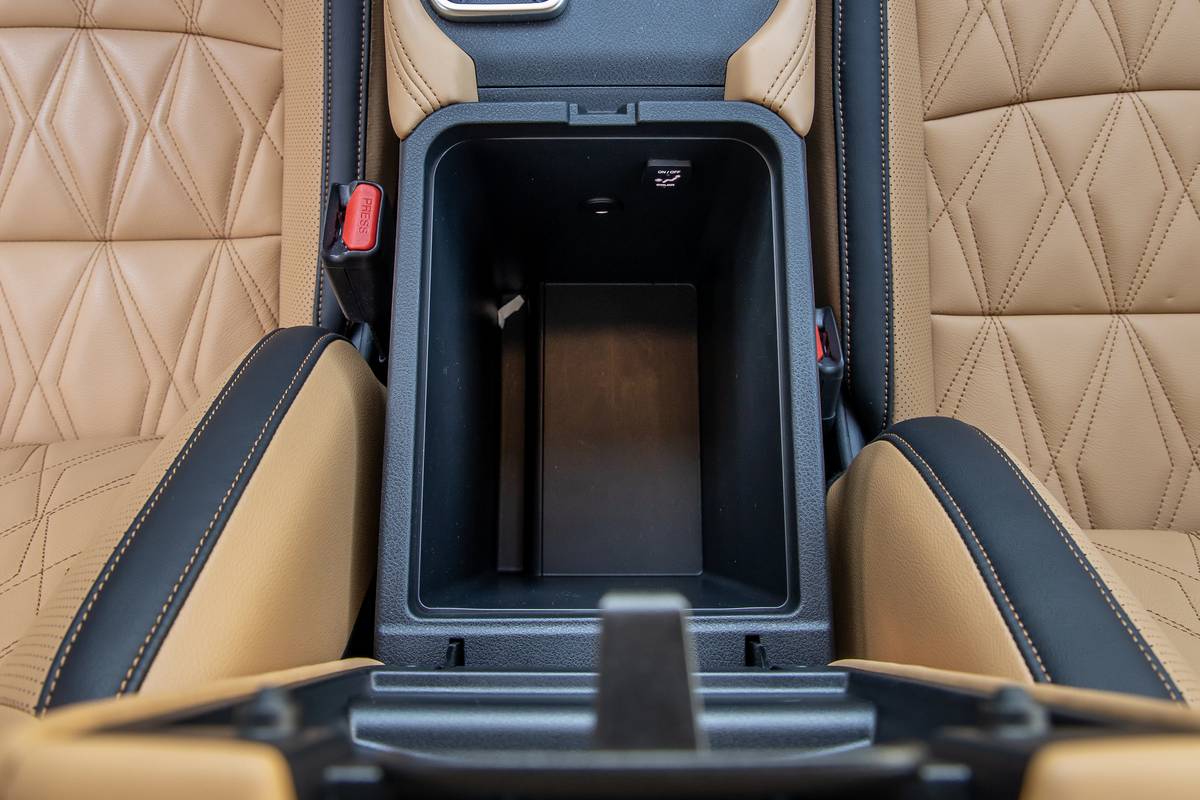
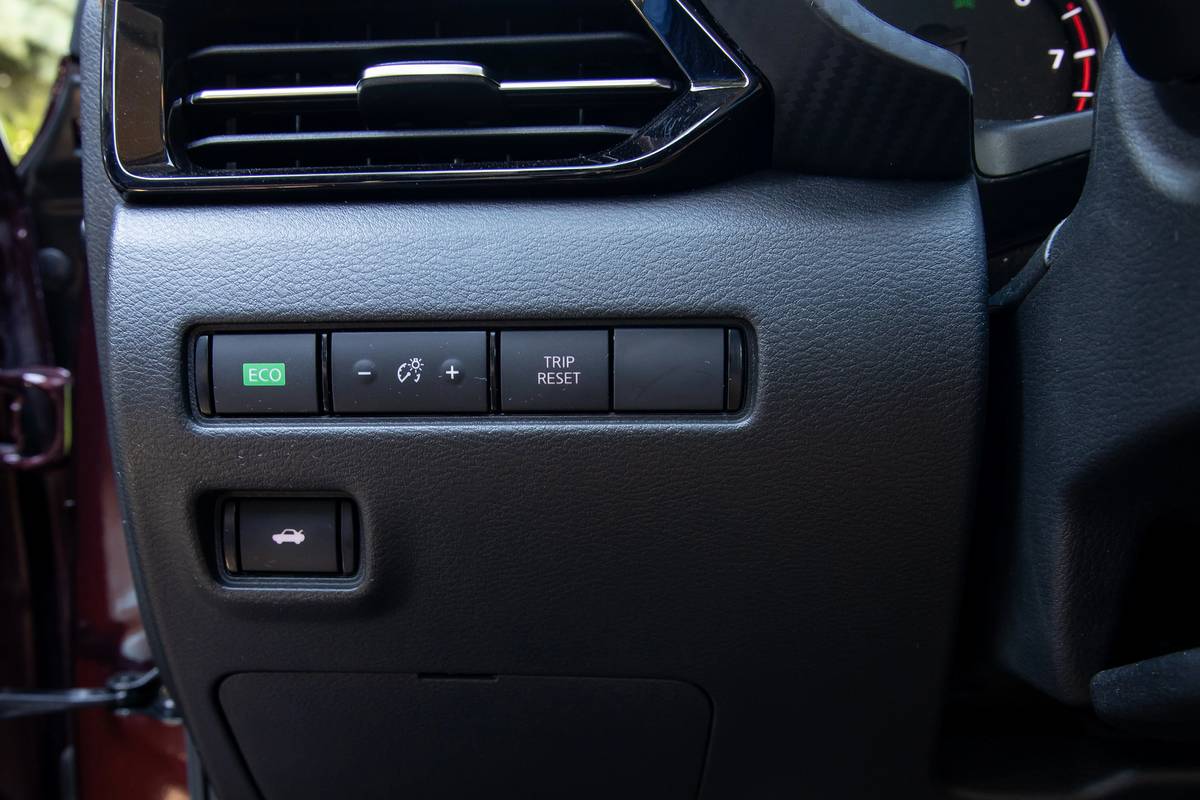
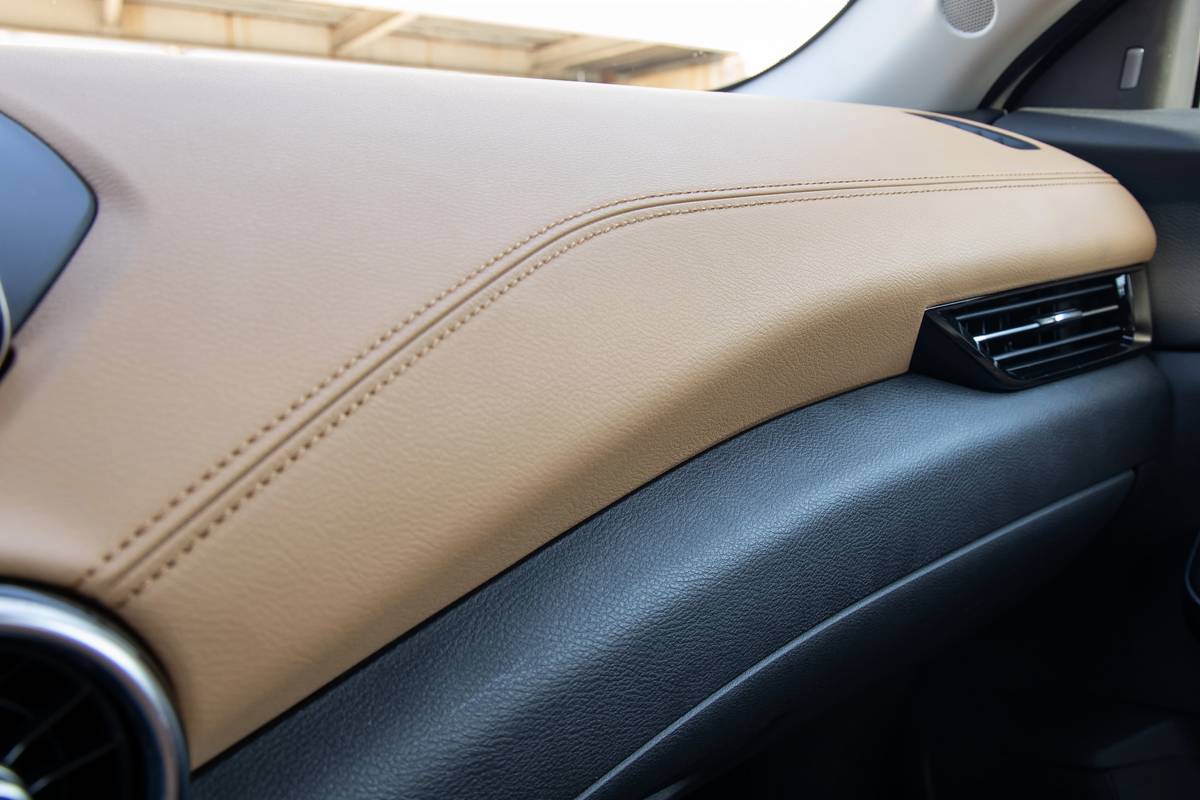
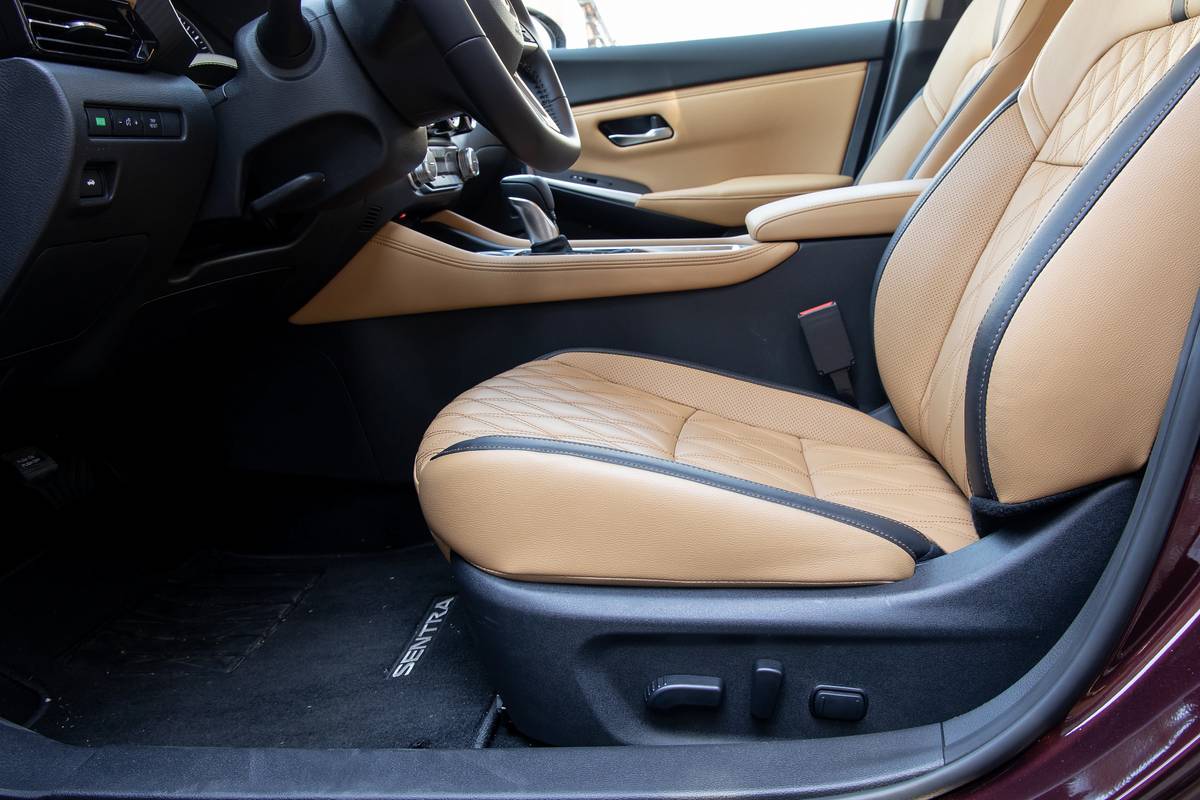
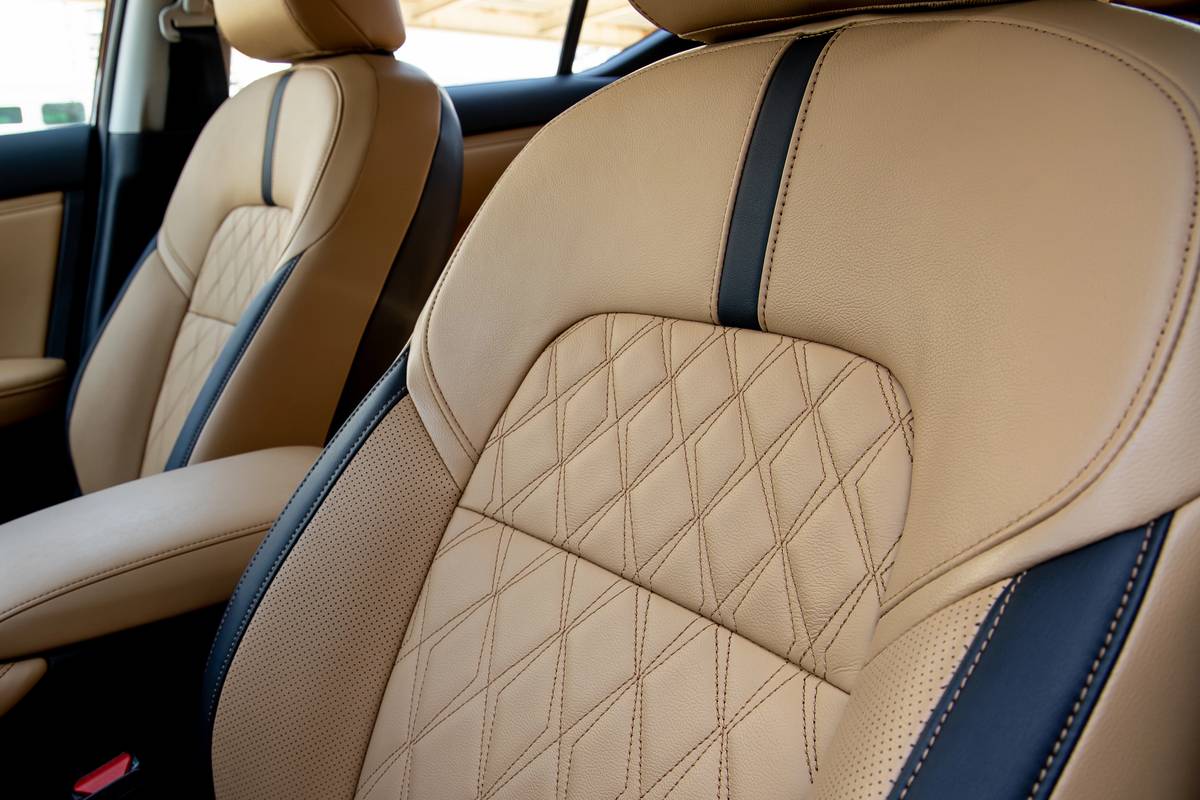

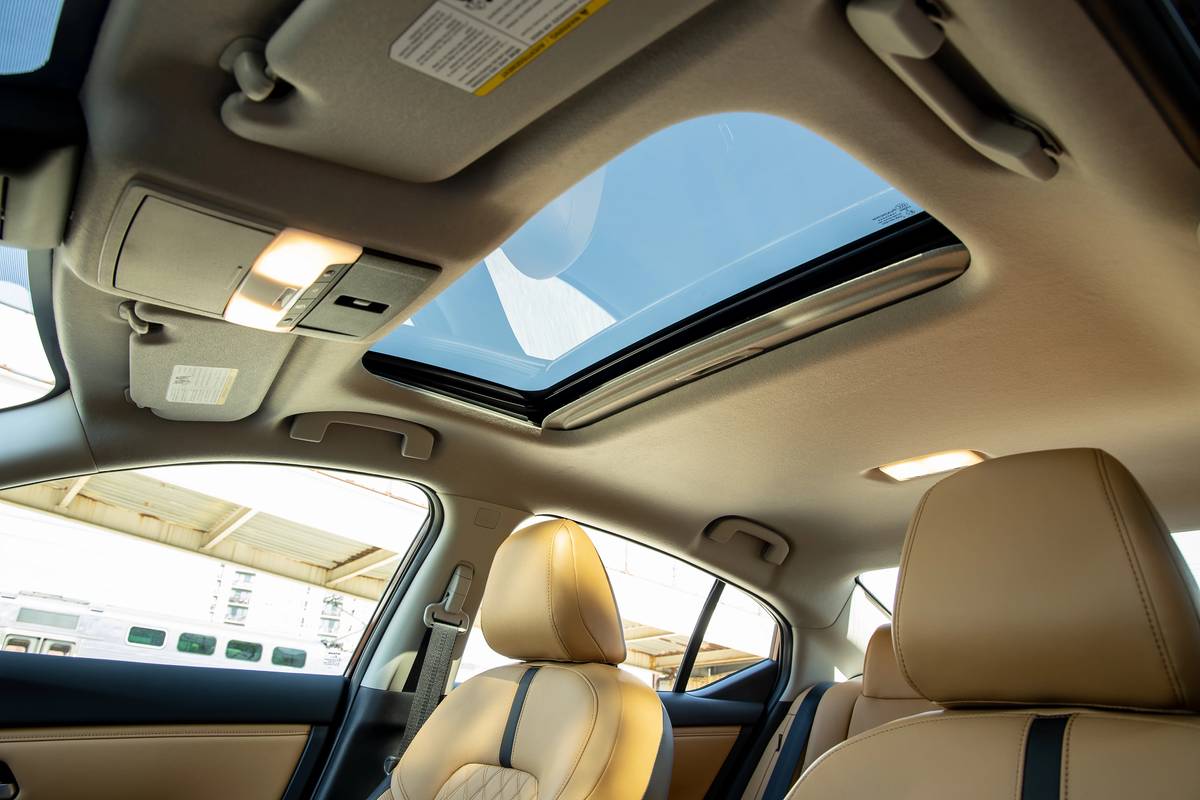

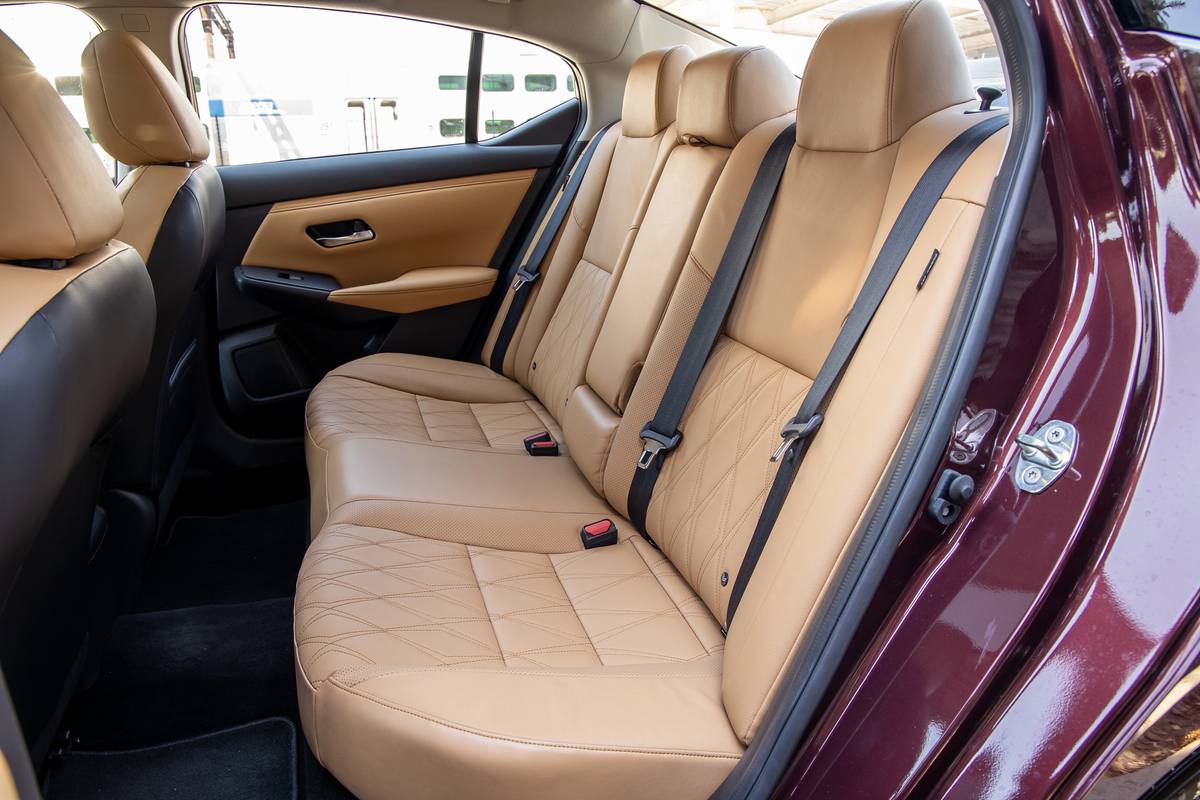
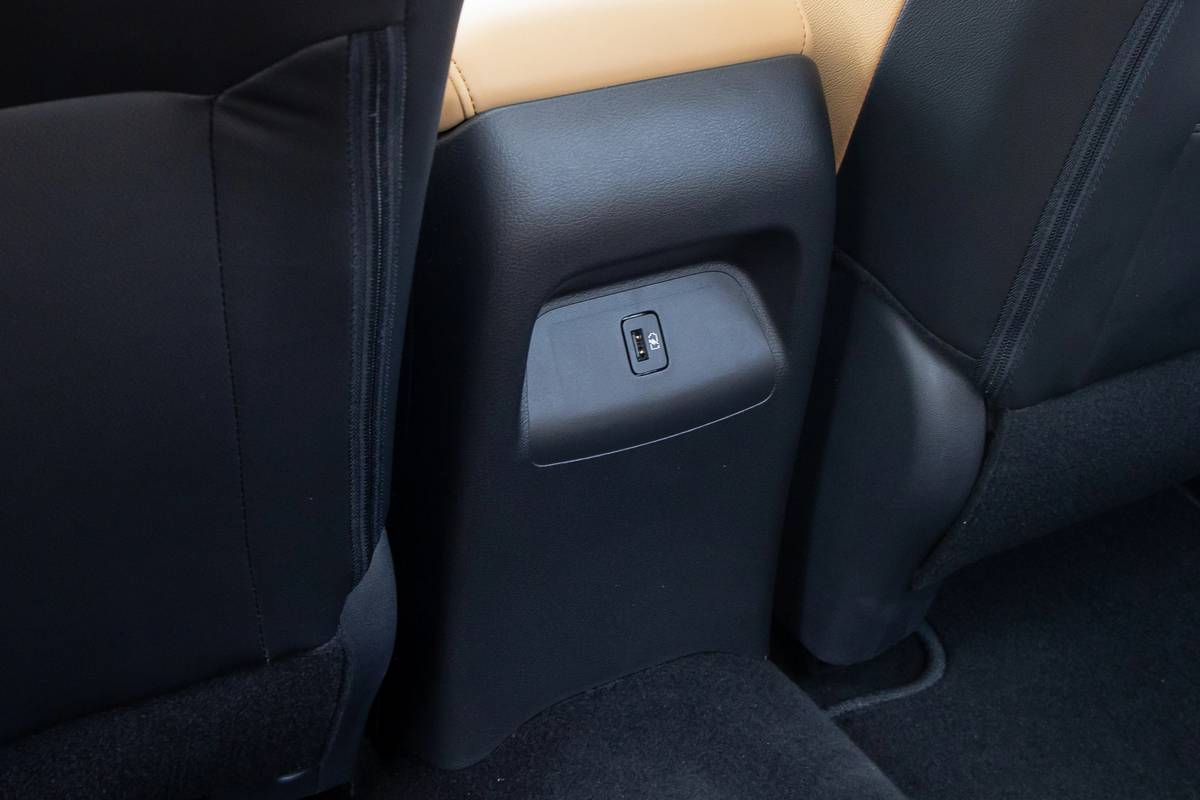
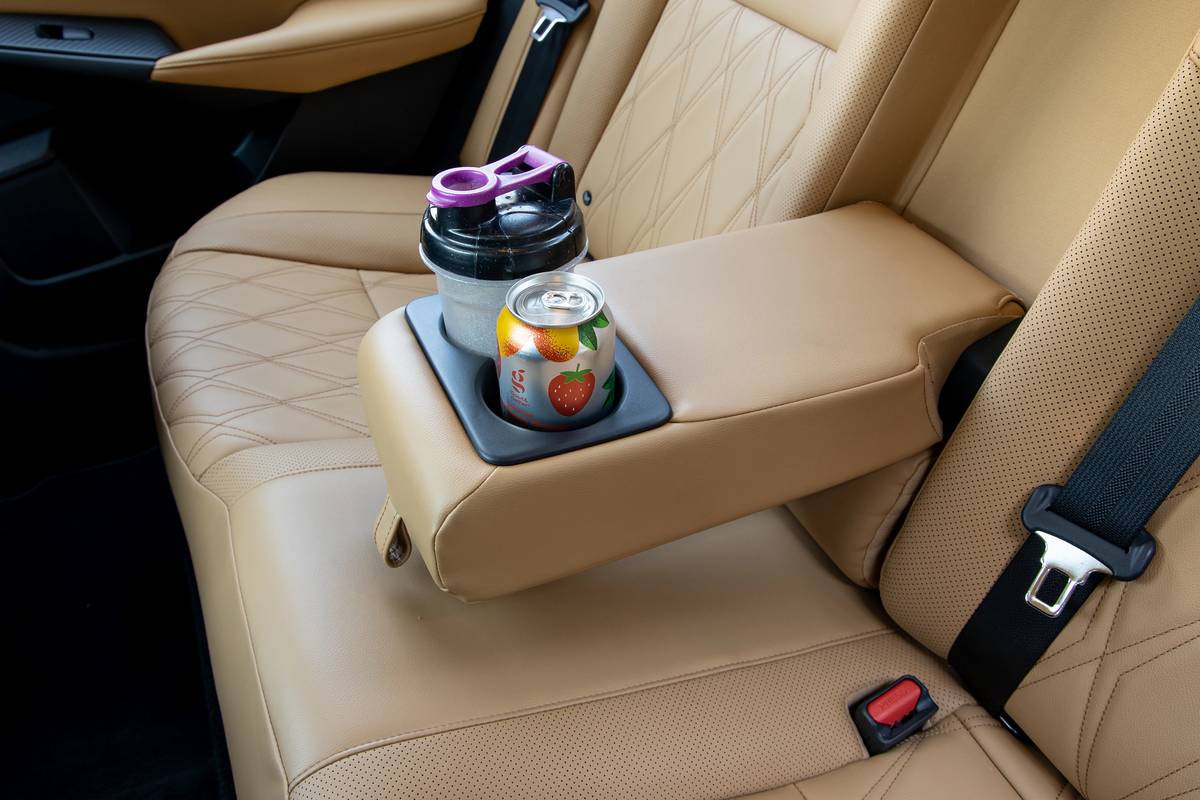
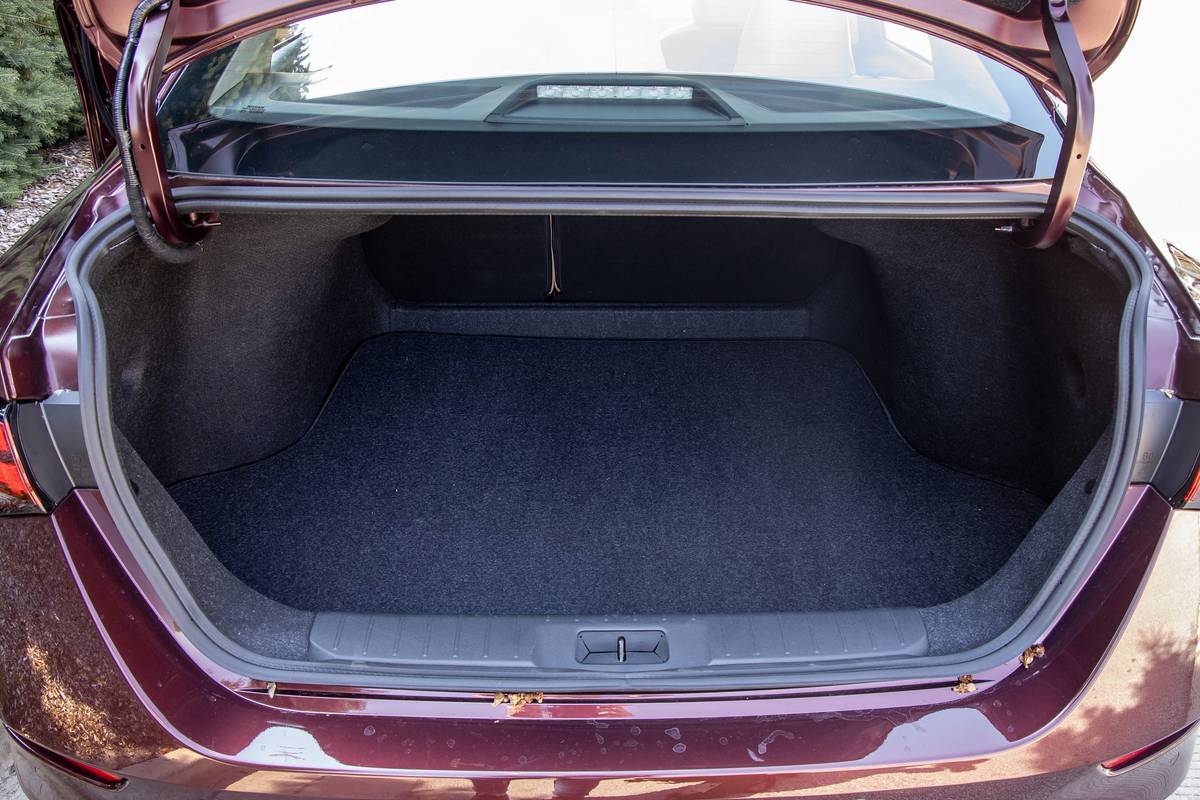

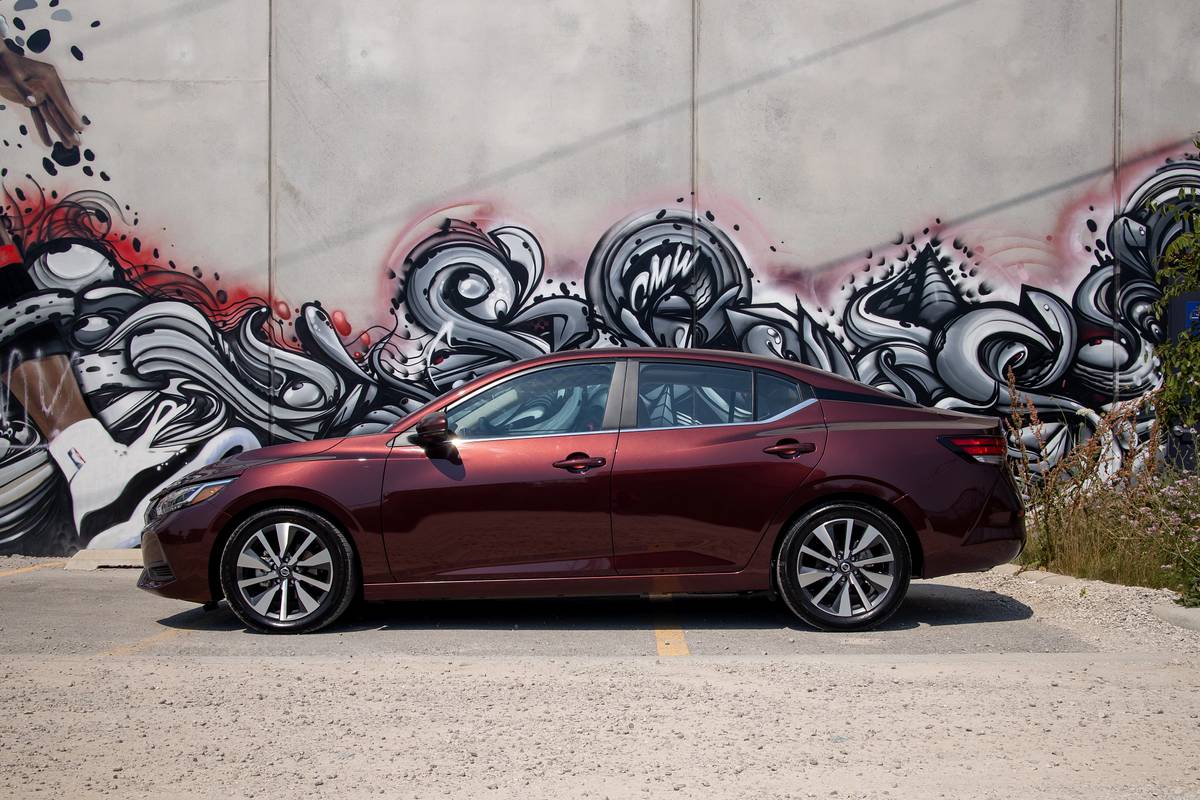
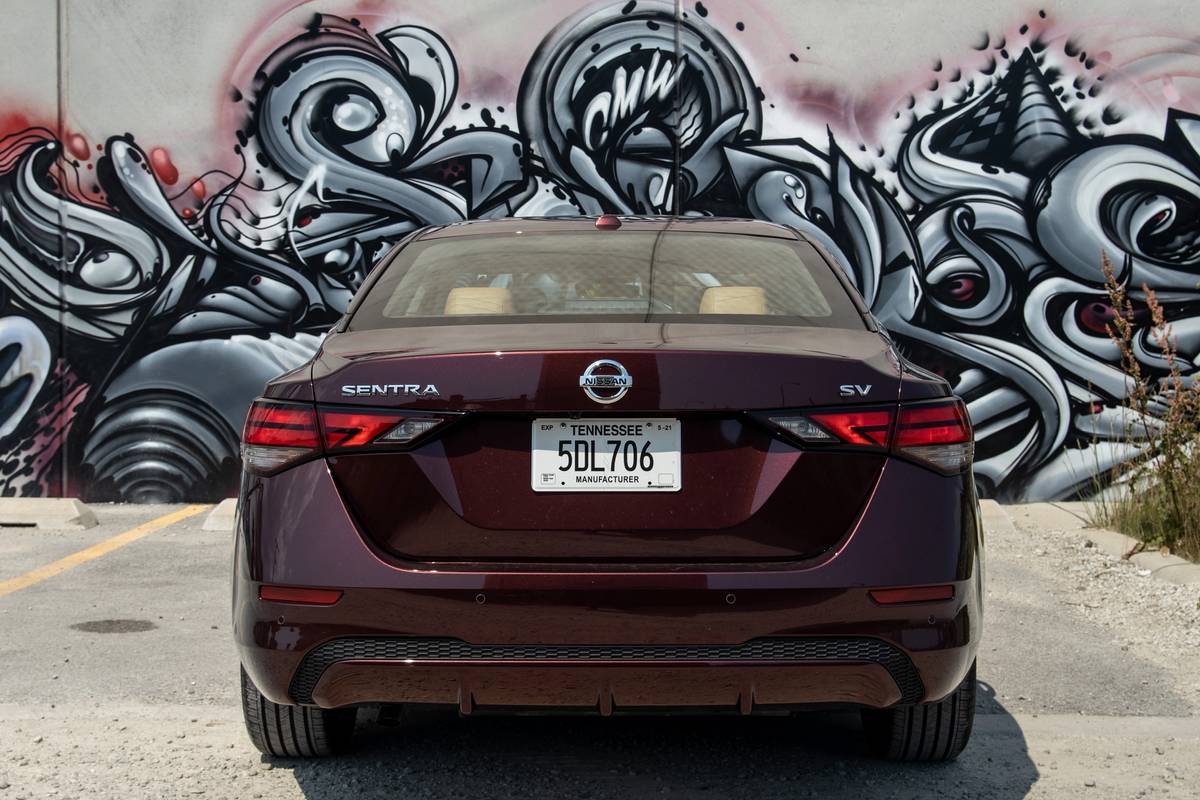












































Our Test Vehicle
As-tested price: $24,800
Powertrain: 149-hp, 2.0-liter four-cylinder; continuously variable automatic transmission; front-wheel drive
Estimated city/highway/combined mpg: 29/39/33
As redesigns go, the 2020 Sentra is impressive, especially because some Nissan models have fallen behind of late and many brands are giving up on small cars. Standard rear cross-traffic alert and rear automatic braking are forward-thinking features. It beat the other cars in six judging categories and lost in three.
The Good
Value: When we say a contestant is the value choice, that’s not a consolation prize; it’s one of the most important considerations for shoppers, and our judges factor what the vehicles deliver, not just their as-tested price. Priced nearly $4,000 less than the Corolla, the Sentra won the value contest with a respectable list of standard and optional features, plus test exclusives like optional selectable interior lighting, exterior ground-effects lighting, speed-limit recognition and rear door alert.
Ride quality: The Sentra rode the most comfortably by a fair margin. It was the only car with 17-inch rather than 18-inch wheels (part of the optional SV Premium Package), up from the Sentra’s standard 16s. Having smaller wheels and taller, more compliant tire sidewalls can soften the ride — all other factors being equal — but it can’t be the sole reason the Nissan isolated occupants better. Here, the emphasis is clearly on isolation and comfort, not sport.
Vehicle user interface: The Sentra won this category comfortably because it’s no-nonsense, and Nissan hasn’t gone overboard turning every last control into an electronic button buried in a touchscreen menu. Its 8-inch display is supported by large buttons and large volume and tuning/selector knobs. (We group all means of controlling the vehicle’s features, including touchscreens, into this judging category, reserving the multimedia category for the entertainment and smartphone-related aspects.)
Multimedia apps and sources: Even though it lacked built-in navigation, our Sentra edged out the Civic by a point in part because it includes an “Aux” analog audio input jack and three USB ports, the third of which — in the backseat — is designed for charging. (One of its two front data ports is the newer USB-C variety, which would require a different type of cord or an adapter, if you dare.) Both contestants also included Apple CarPlay and Android Auto, while the Corolla lacked the latter.
Safety features: Though it won the category by just 1 point, the Sentra was the only contestant with rear cross-traffic alert and rear automatic braking, both standard features. (The Corolla will add rear cross-traffic alert for 2021, Toyota told us.) The Sentra is also the only model for which a 360-degree camera system is offered — but only on the higher SR trim level that we didn’t test.
Interior quality: Though it tied for first with the Civic, the two models stood out in different ways. We liked the Sentra’s color palette and quilted leather, and the car does a better job of maintaining materials quality in its backseat than the others do even if some cost-cutting is still evident. And Nissan took a more lavish approach to padding the areas up front where your arms, elbows and knees rest — a welcome investment in a class seldom known for it.
Noise: Noise is one of the most subjective of the subjective categories. Sound is audible, but noise is objectionable, and while the judges’ impressions of the noisiest cars differed, the Sentra prevailed overall. Its relative quietness complemented its comfortable ride.
The Bad
Handling: The Sentra understeers when pushed, and in a sustained sweeper, the body leans and stays there. The steering is vague but requires effort comparable to the other cars. The Michelin Primacy A/S all-season tires have decent grip, but the Sentra presents itself as a clumsier car when asked to step out of its comfort zone. Ride and handling aren’t always at odds with each other, but they often are and seem to be on both ends of this contest.
Driver-assist technology: The Sentra ranked last in this category because it didn’t include lane-centering steering (it is not offered for 2020) as the other cars did. Additionally, while all three have adaptive cruise control that enable them to maintain a following distance from a lead vehicle and come to a complete stop, the Sentra can hold that stop only for a few seconds before the driver has to step on the brake to prevent the car from rolling forward again. This is because the car lacks an electric parking brake, which is how most vehicles achieve this — a disappointment for a newly redesigned model.
Forward visibility: Outward visibility is a 360-degree consideration, and though the Sentra’s integral backseat head restraints and low trunk line made for better rearward visibility than its competitors, its rearview mirror was so low that it blocked our forward vision, preventing us from sitting as high as we wanted to.
Front seats: To be clear, the scoring was tight for the front seats, and the Sentra ranked in the middle, but in fairness, we’ll offset the mention that one judge preferred this driver’s seat to the Corolla’s. The other judge said he sat “on, not in” the Sentra seats, and wished for more side bolstering. The Sentra’s was also the only driver’s seat without a tilt adjustment for the bottom cushion, though neither judge called it an impediment for him personally.
No manual shifting: The Sentra lacks not only shift paddles but also any means of shifting manually. (Come upon a steep downward grade and you’ll have to reach for the transmission’s Low setting.)
Rear center armrest trade-off: Surprisingly, even the center position of all three cars’ backrests is usable if you flip up the center armrest, though the Sentra has a bolster where the bottom cushion meets the backrest that’s a tad uncomfortable. The payoff is that it elevates the armrest, when lowered, to a more natural position. The Civic’s, by contrast, is low and droopy. Pick your poison.
Research the 2020 Nissan Sentra | Search Inventory | Car Seat Check
1. 2020 Honda Civic Touring (220 points)
The verdict: The Civic is strong in many ways, and it stands out with more backseat legroom and in-cabin storage. It also boasts vastly superior handling, though that sacrifices the ride comfort many shoppers prioritize.
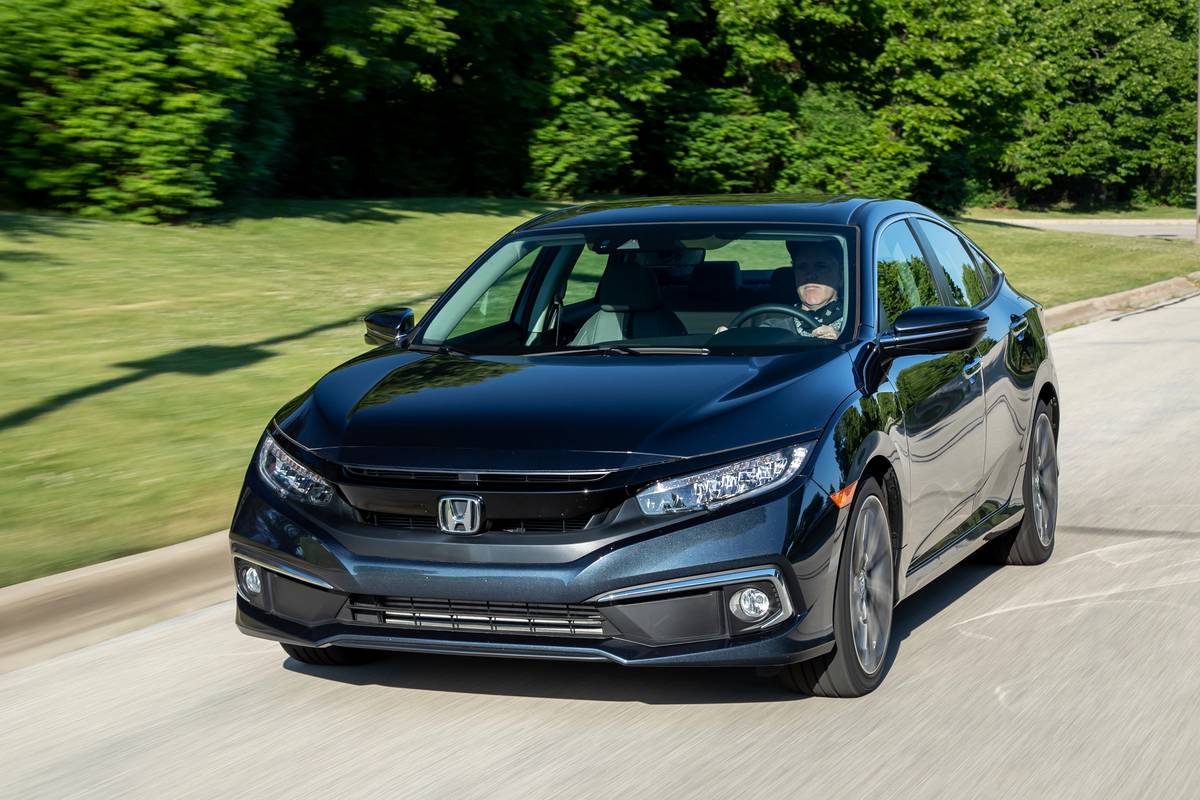
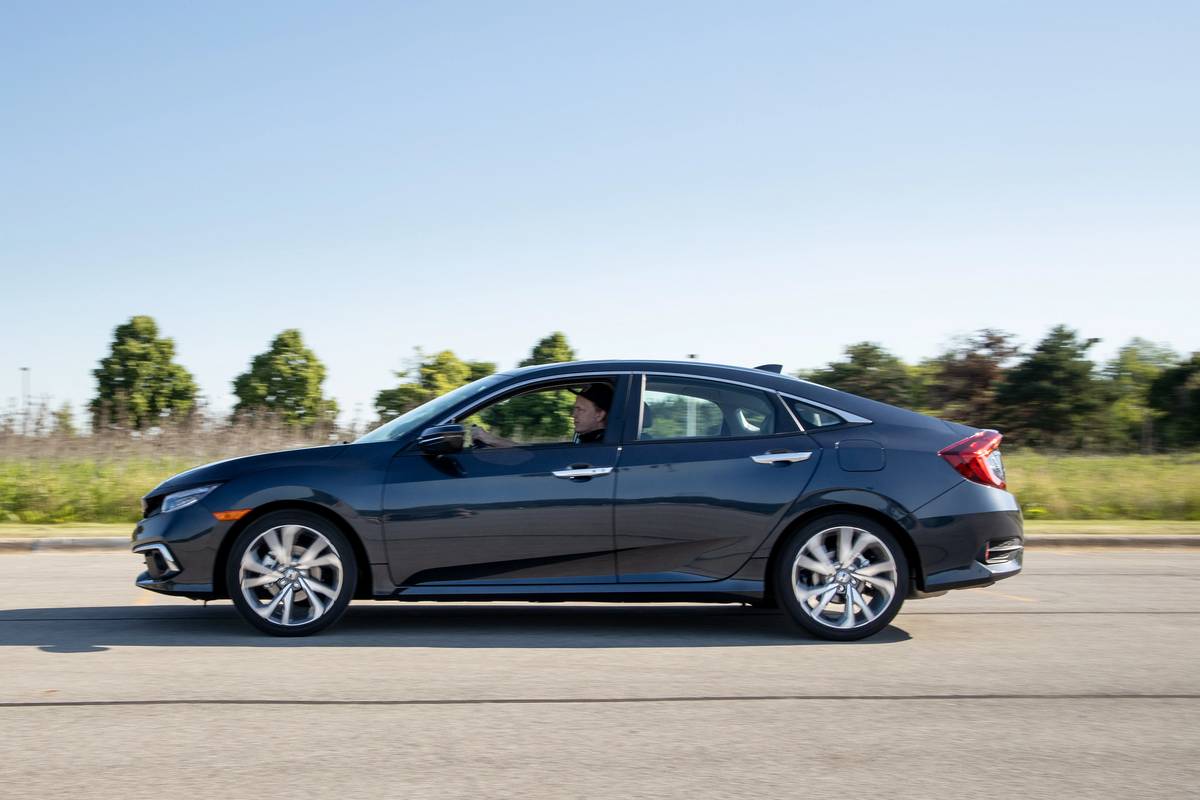
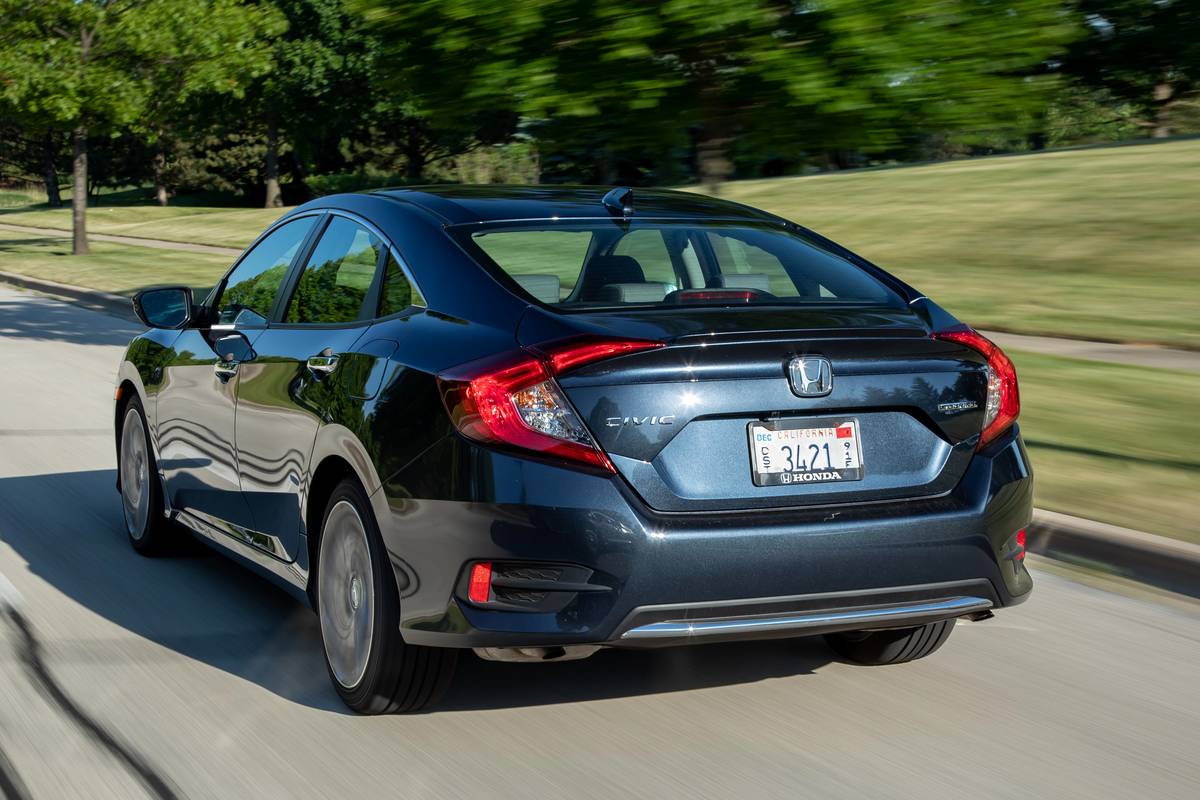
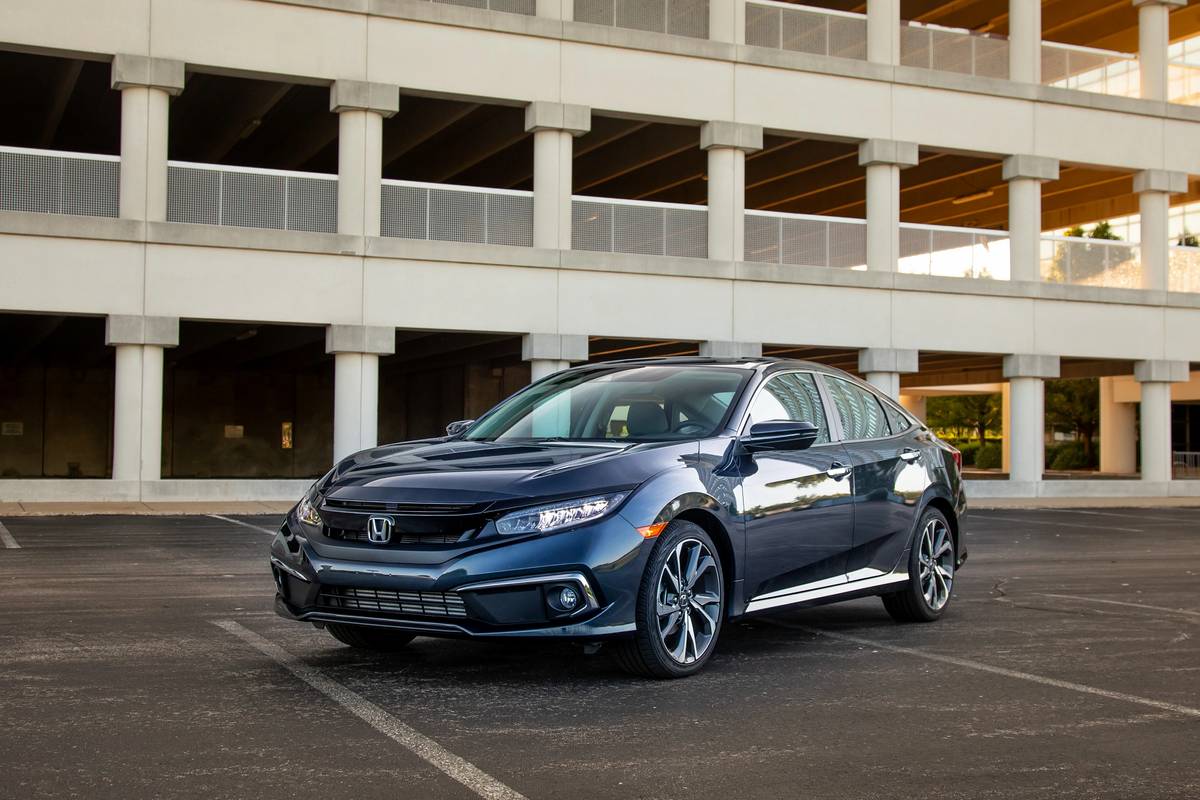
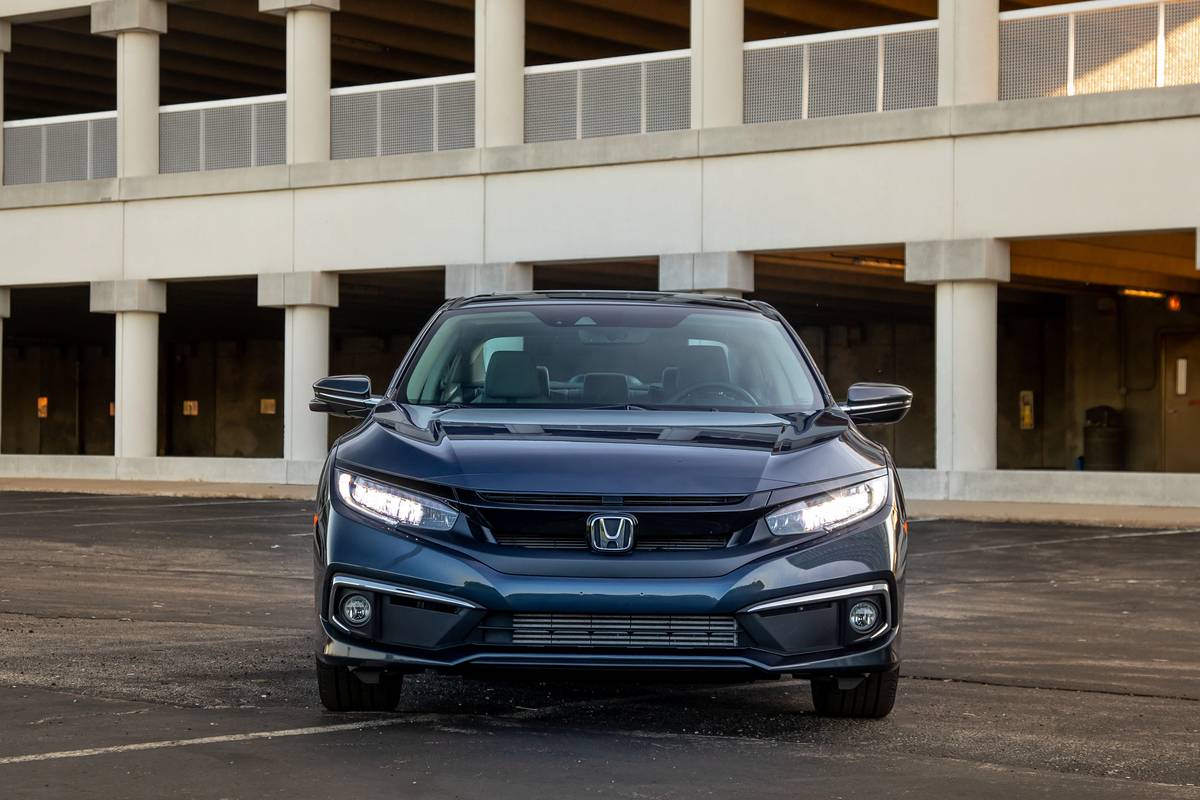
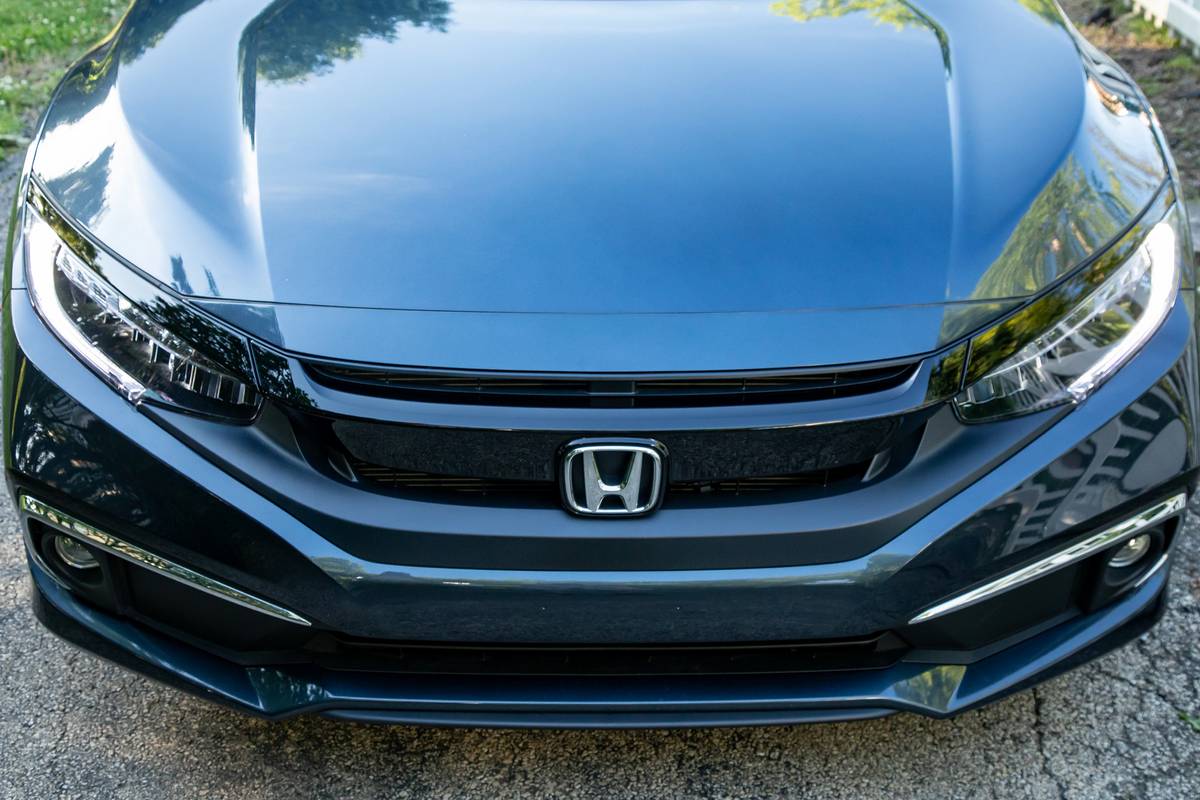
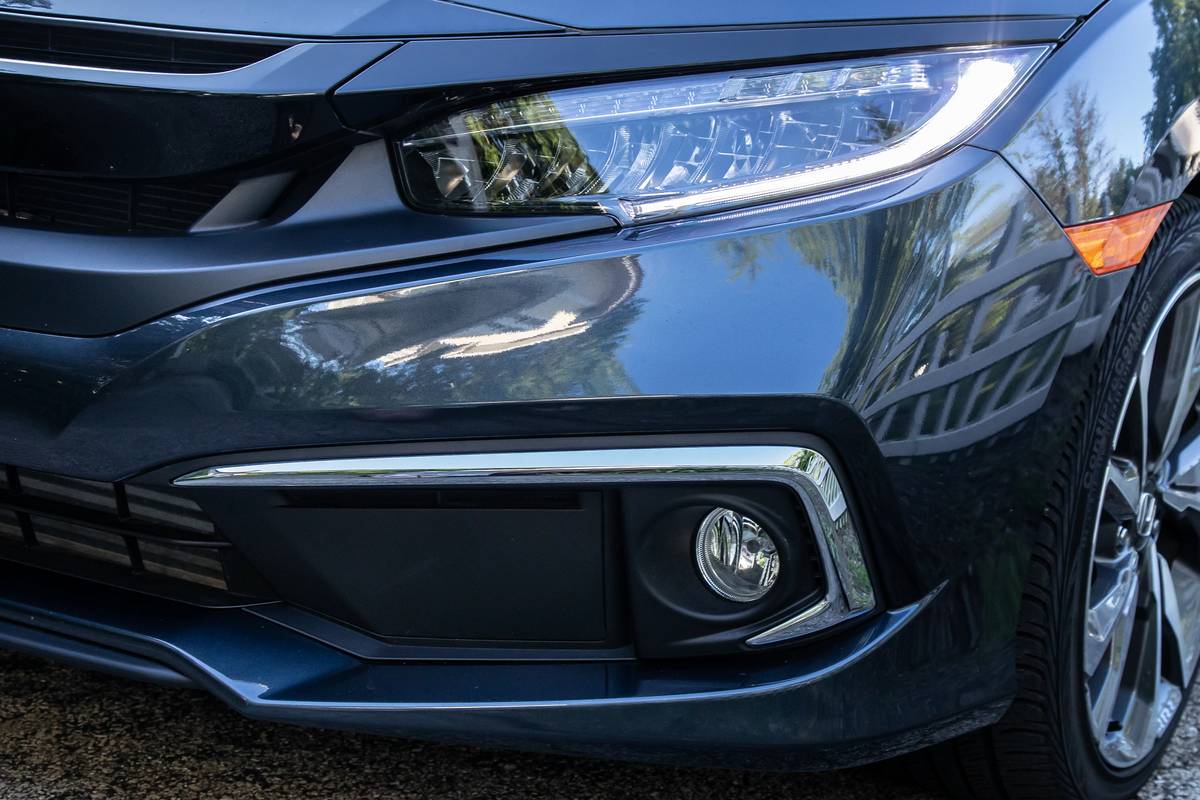
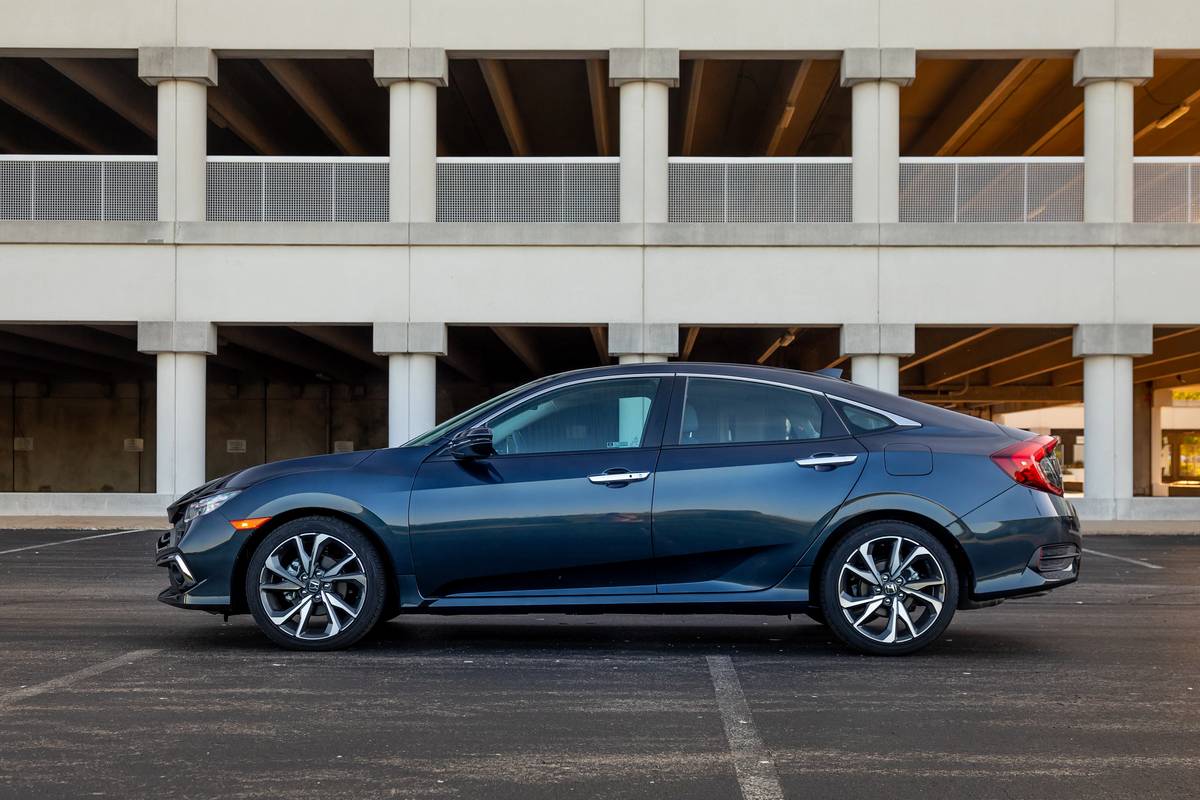
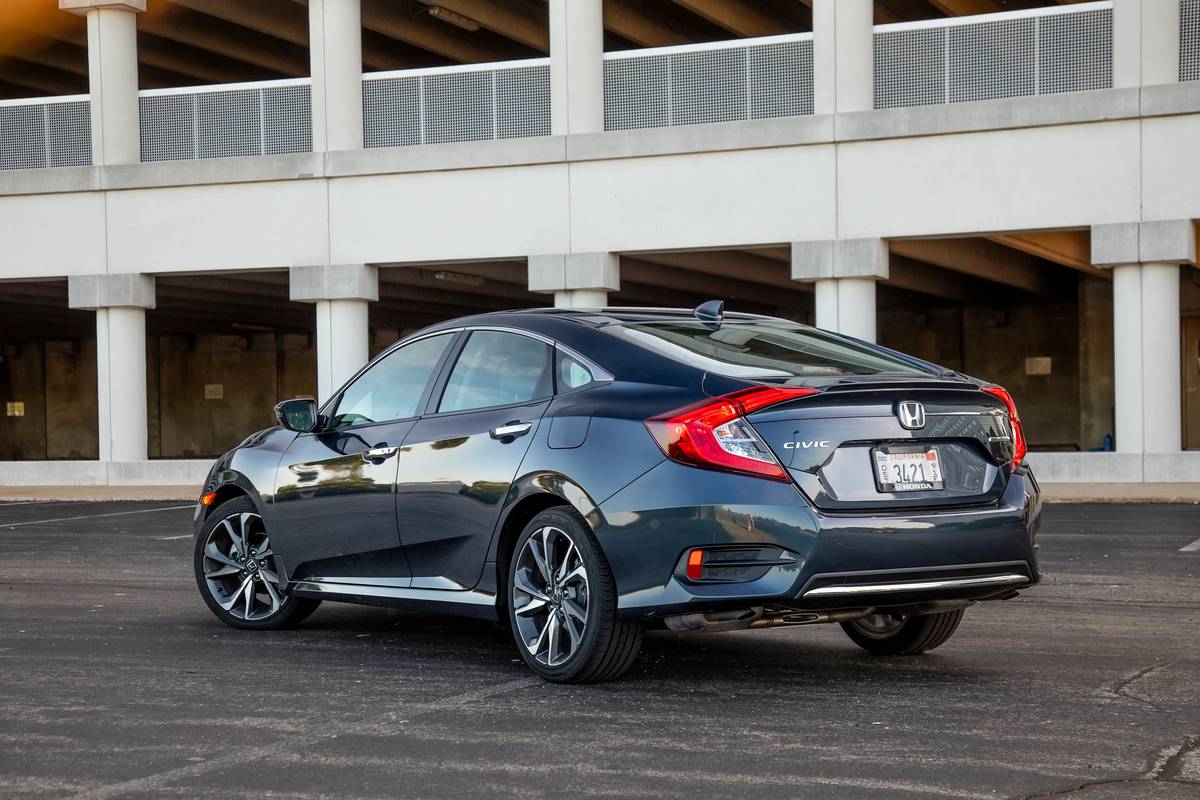
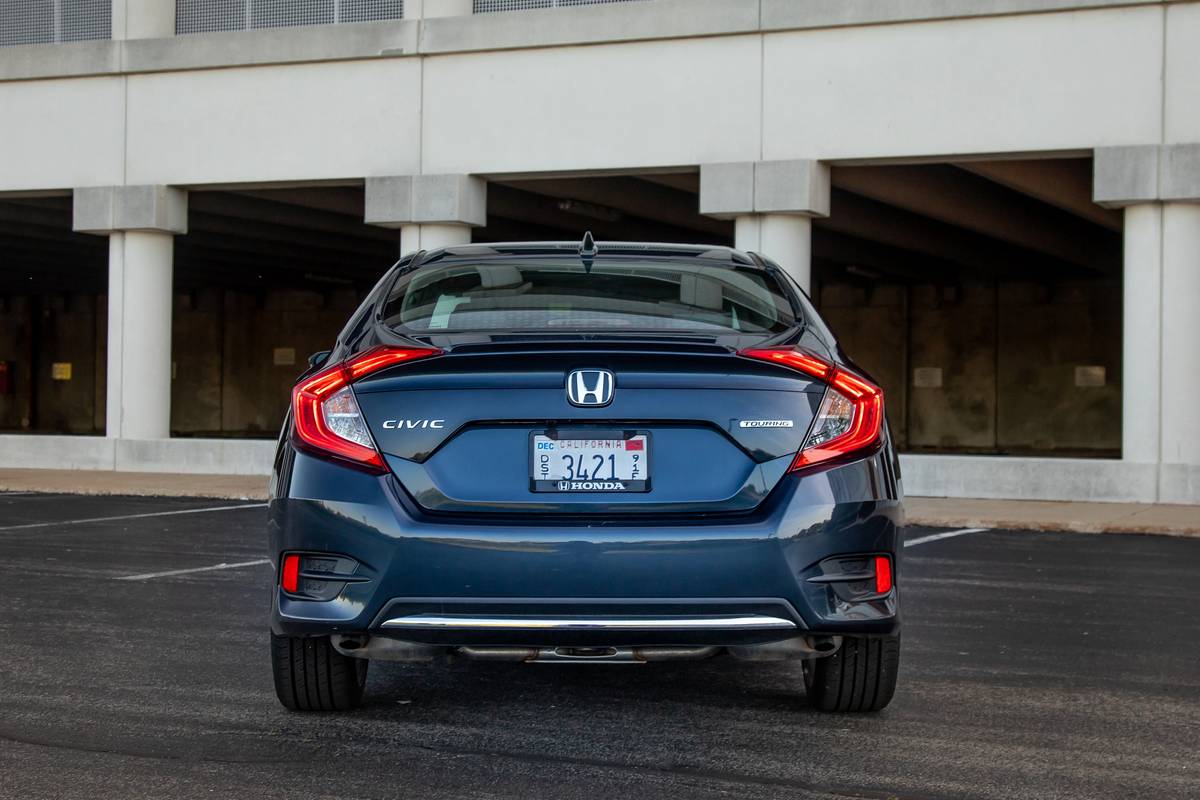
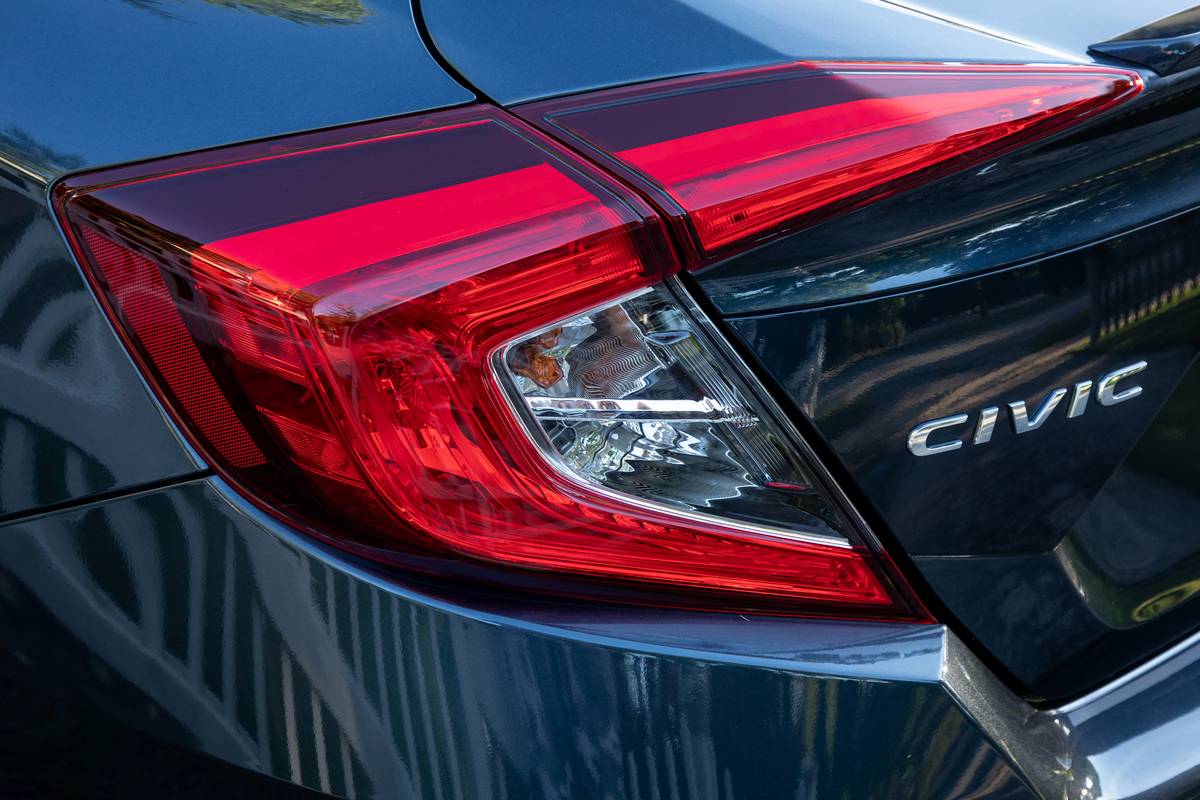
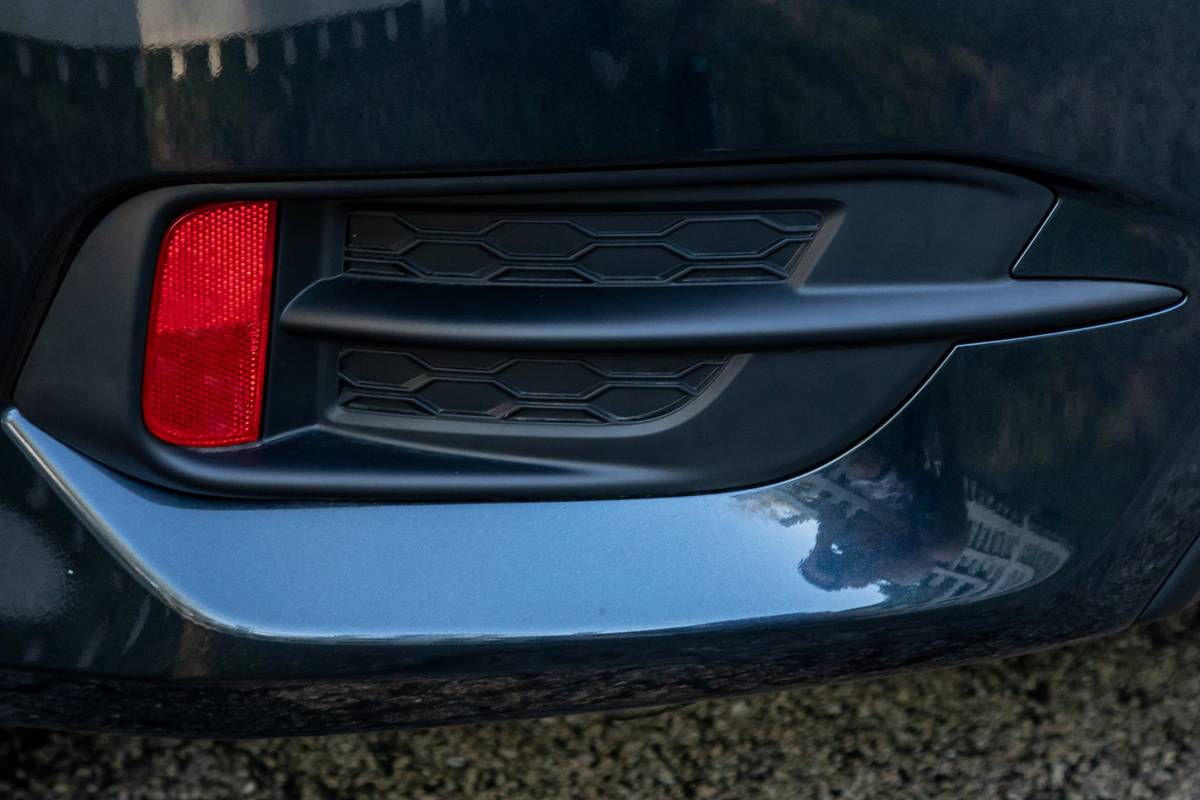
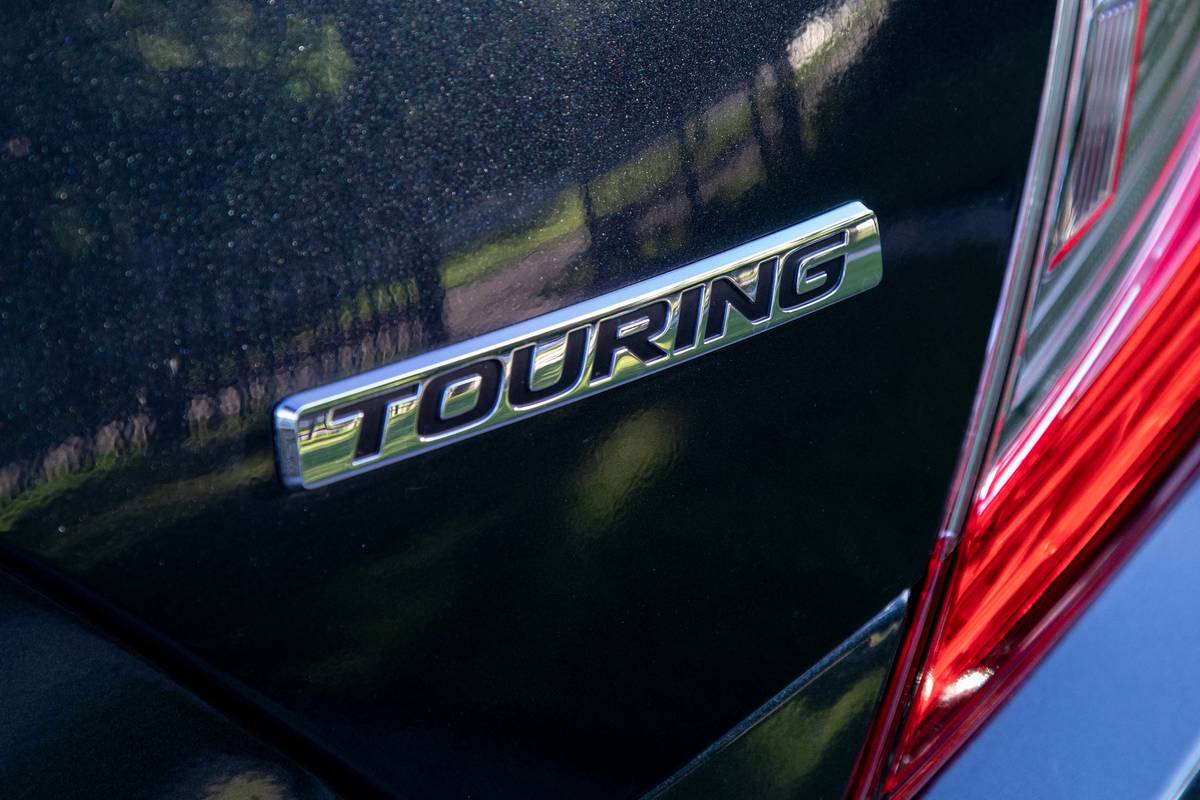
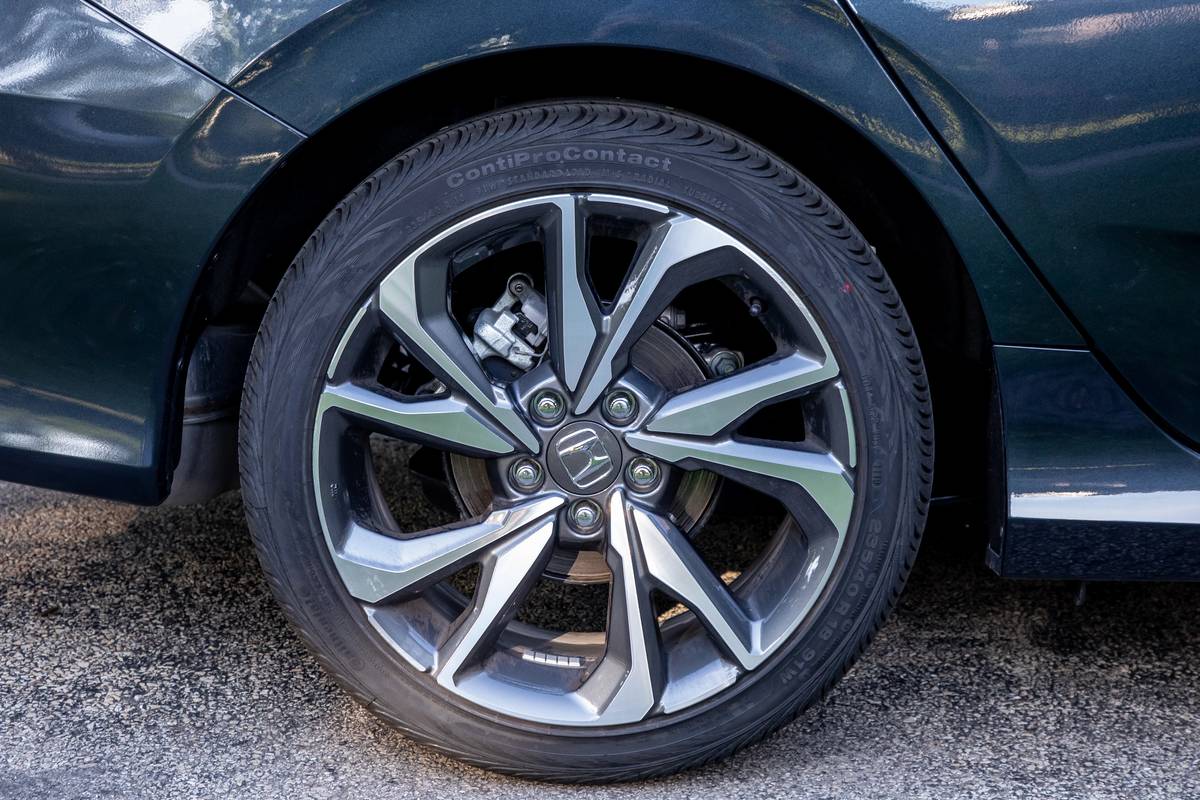
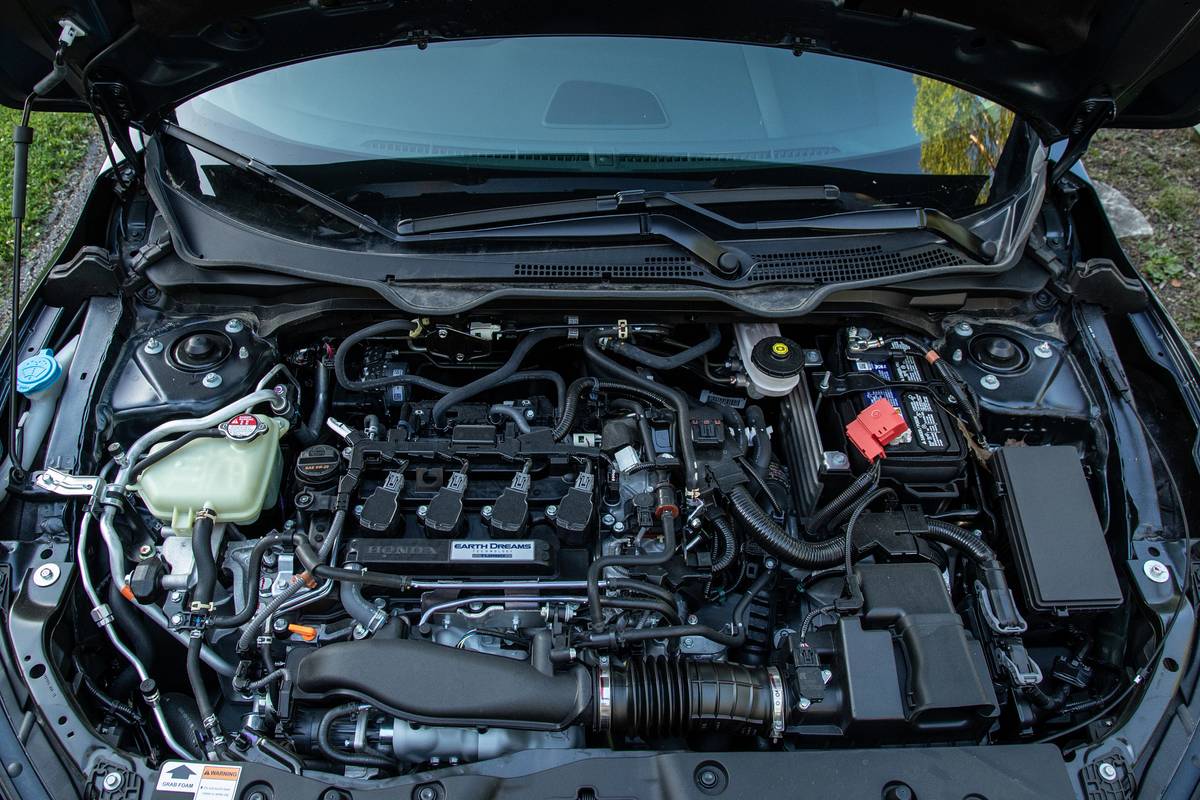
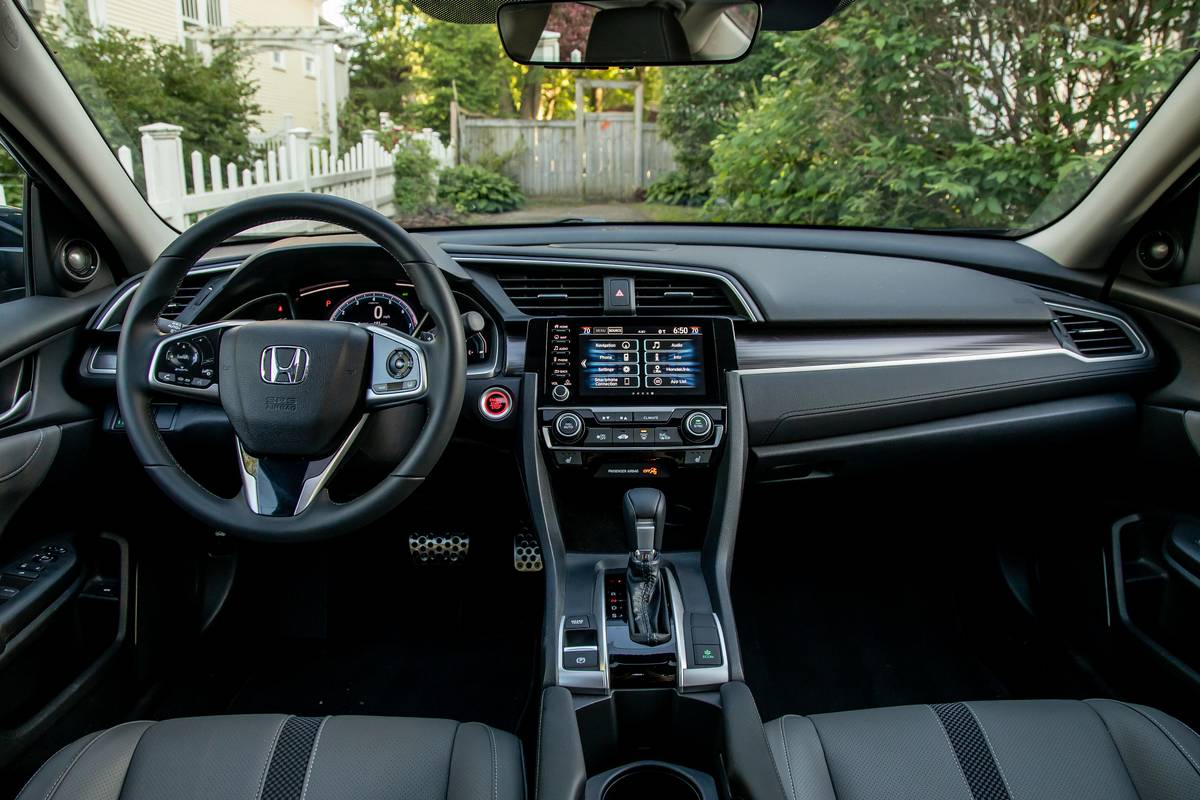
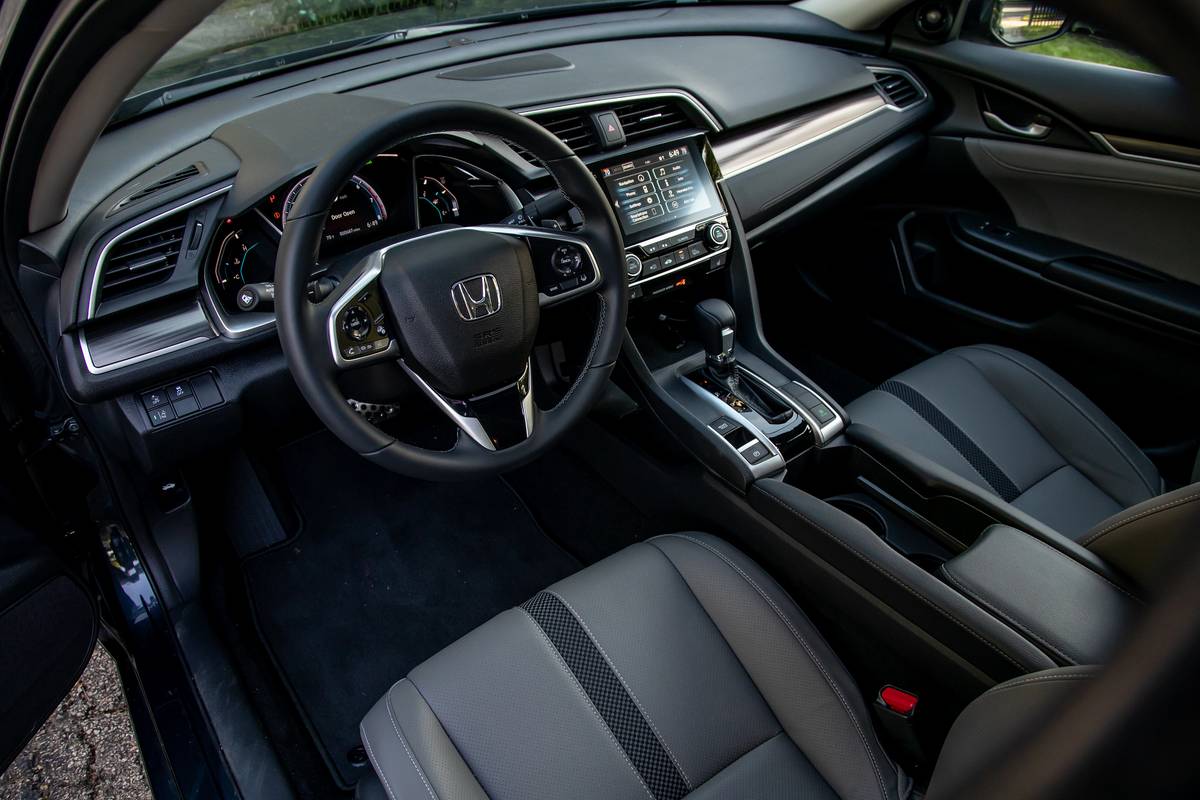
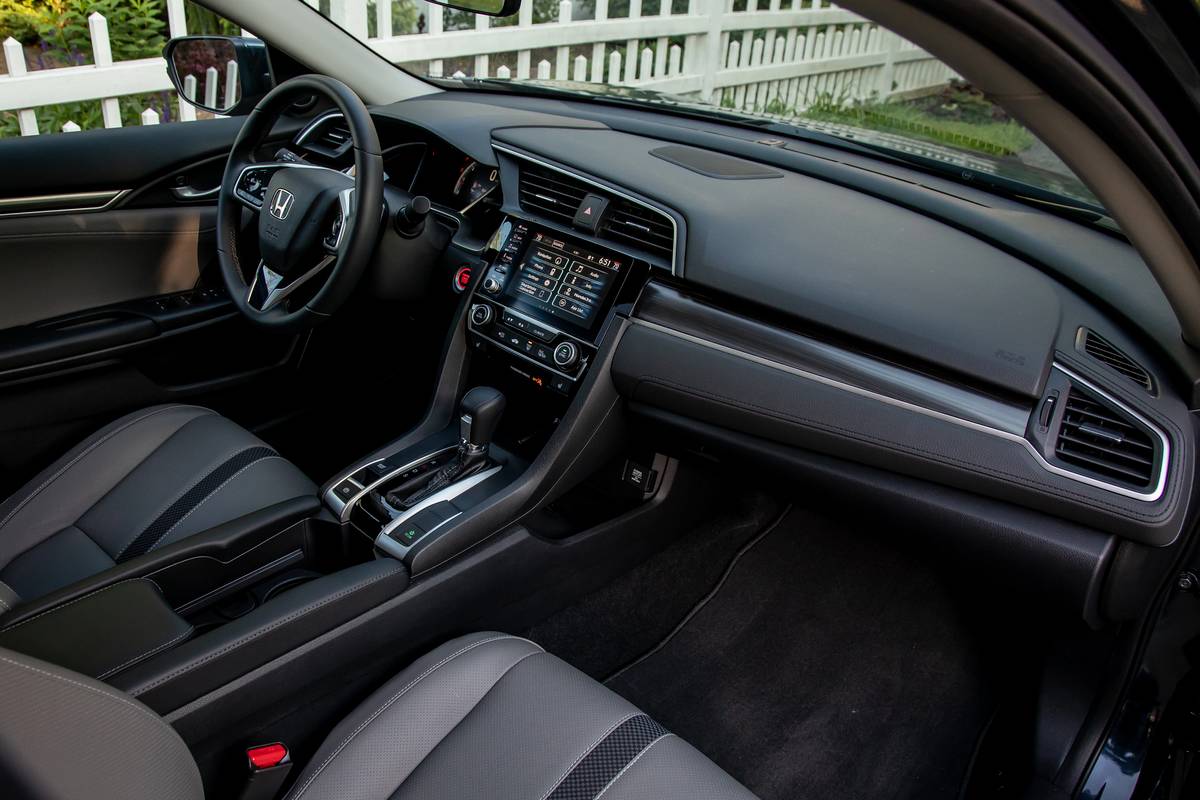

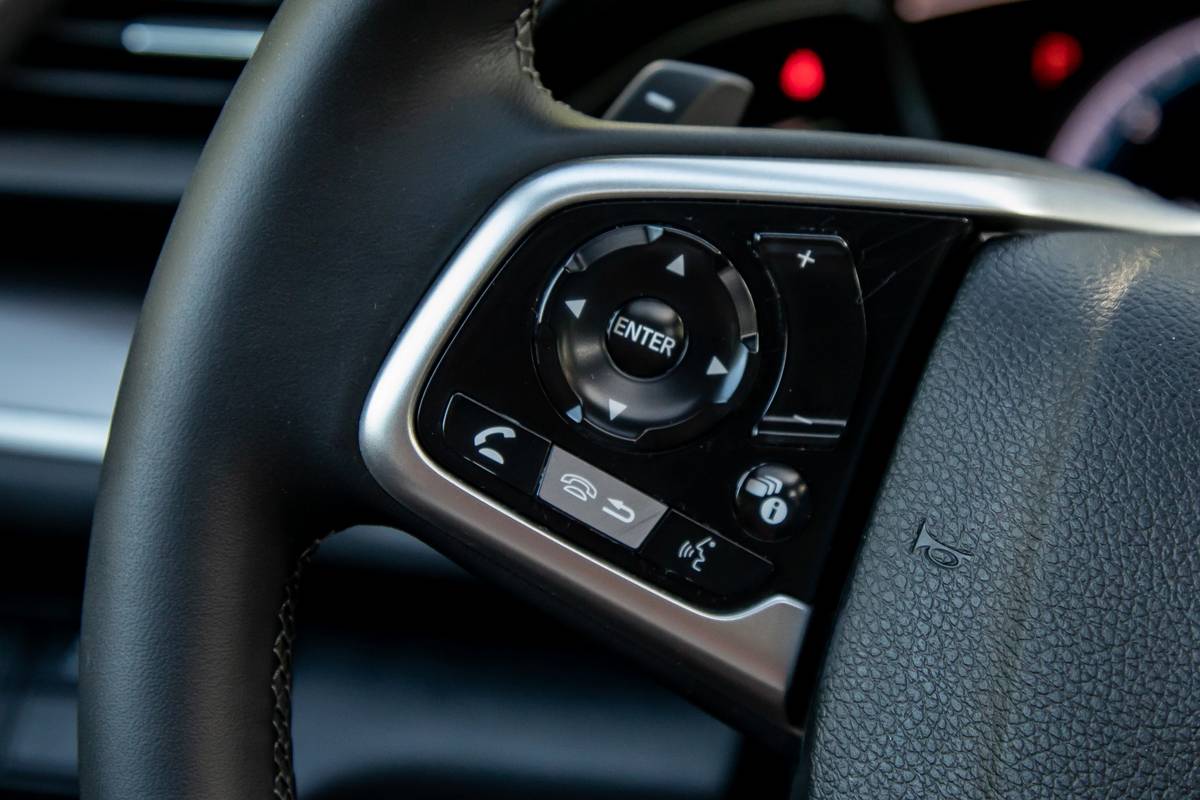
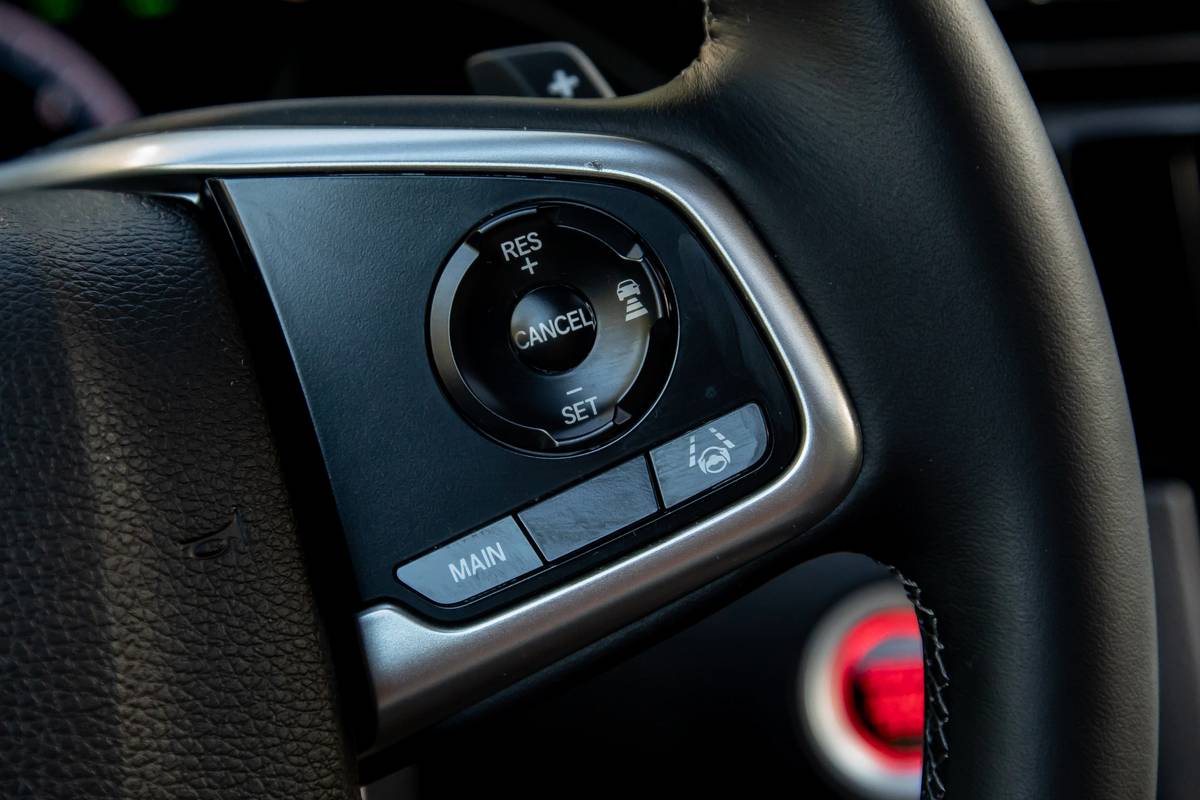
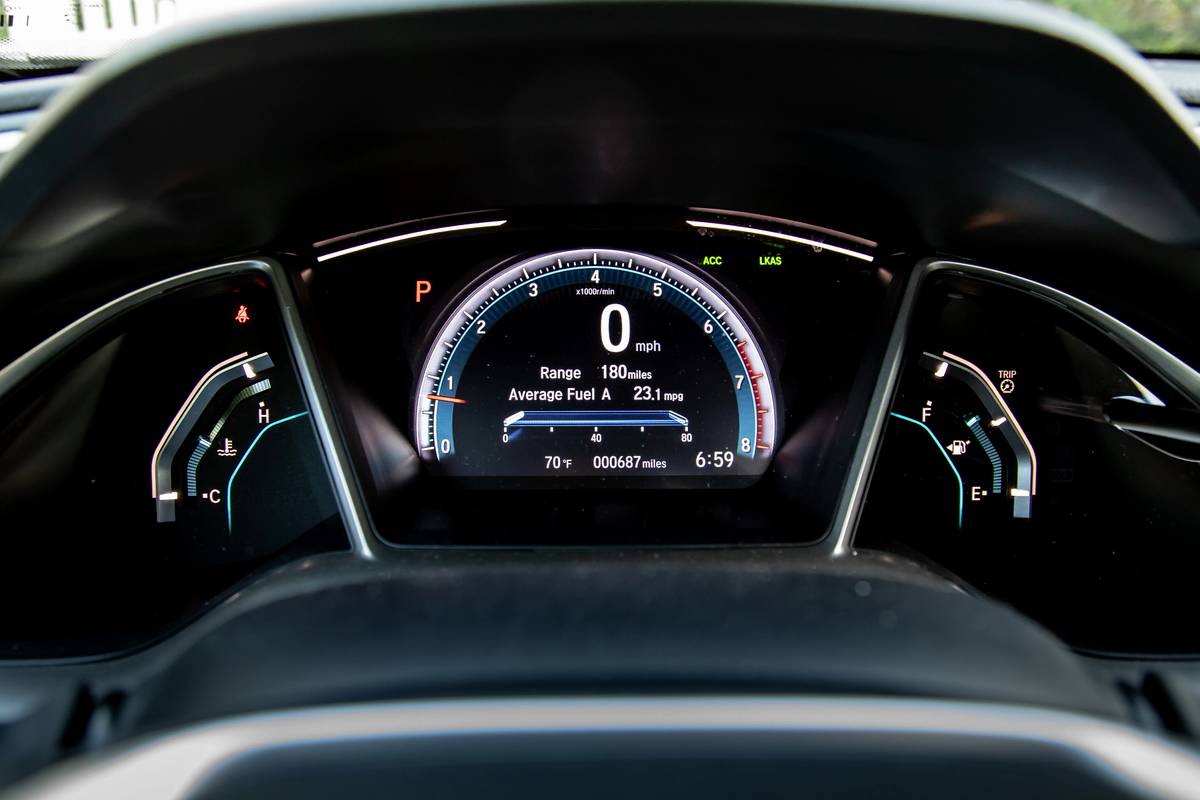
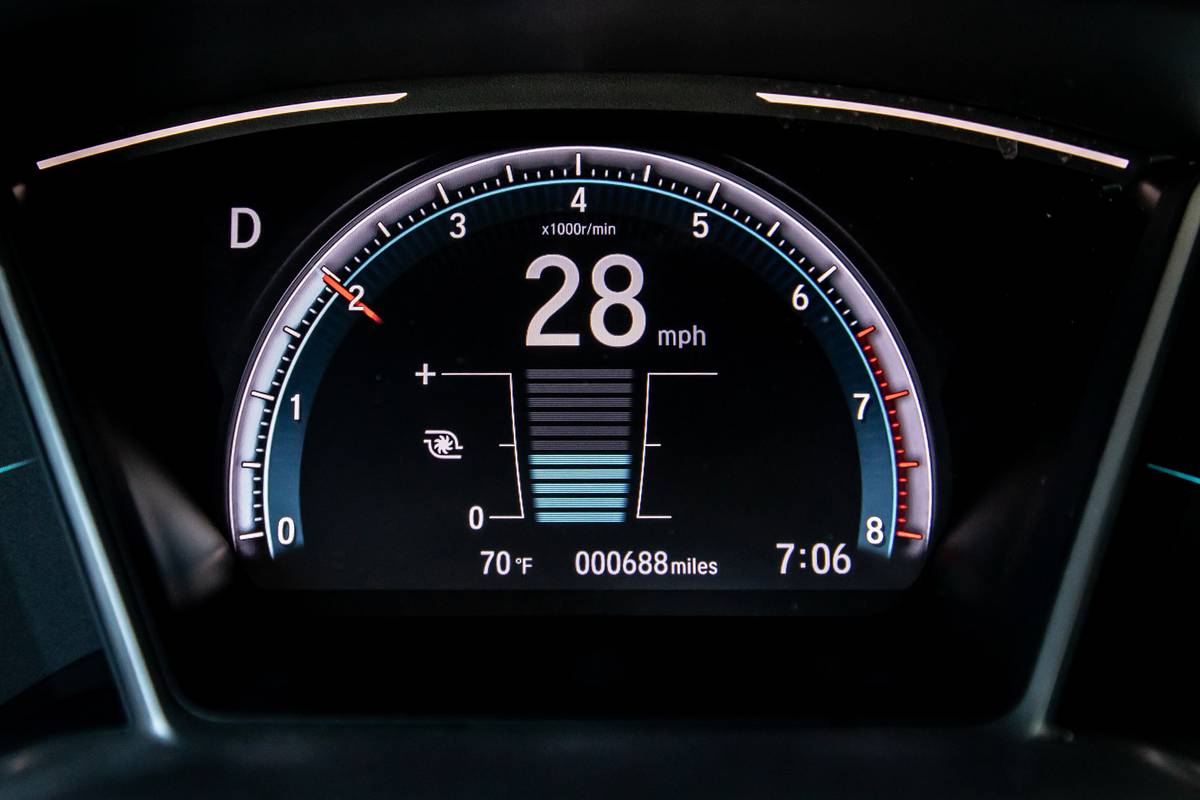
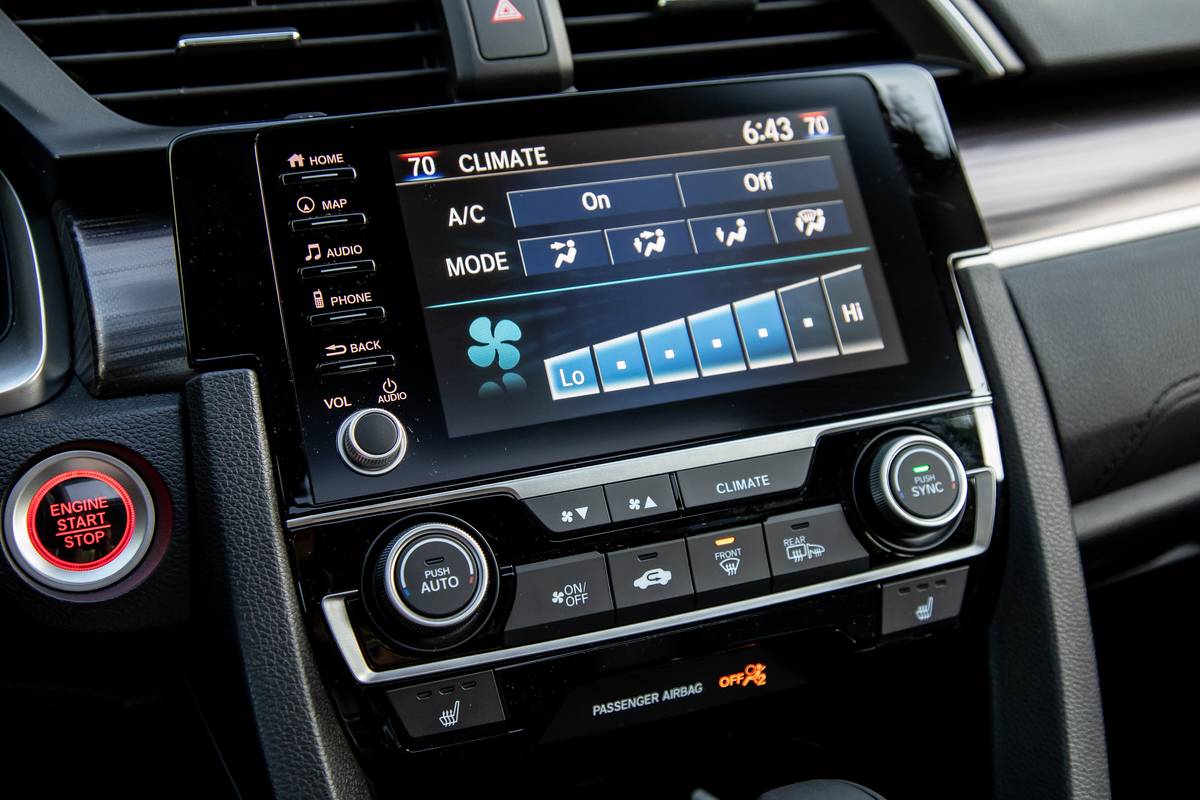

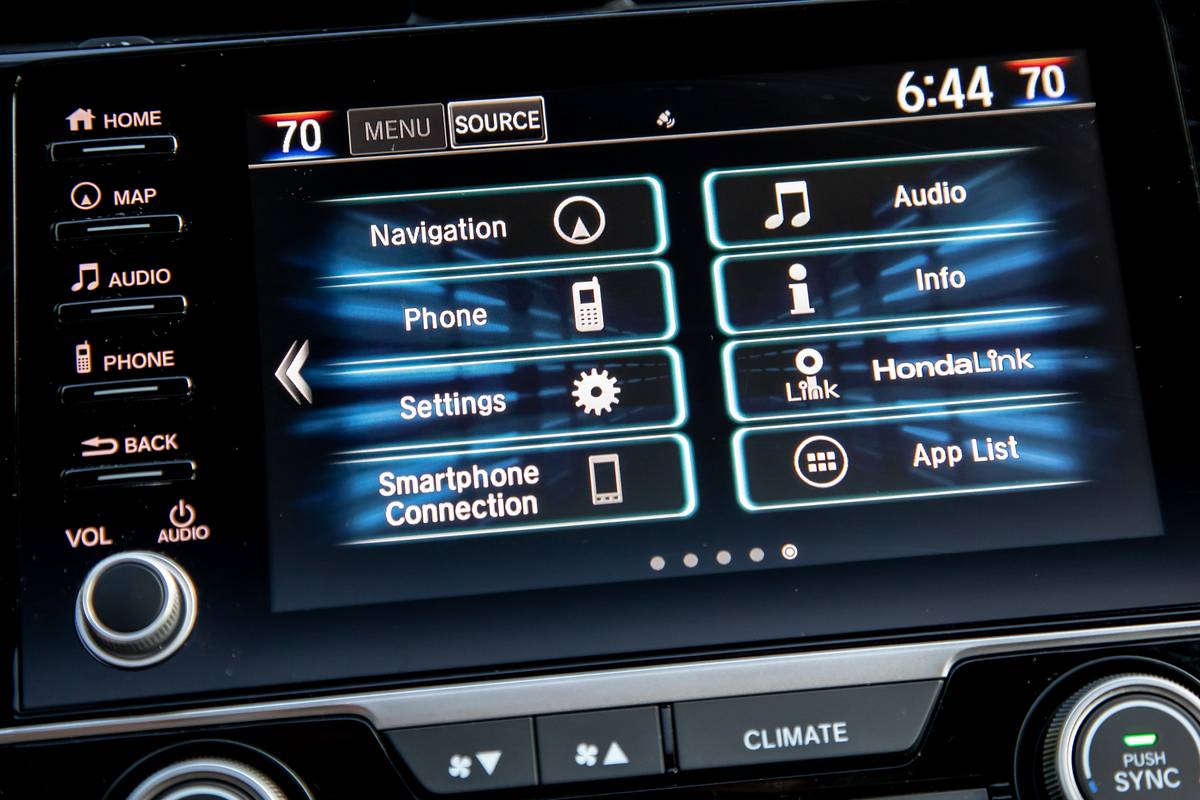
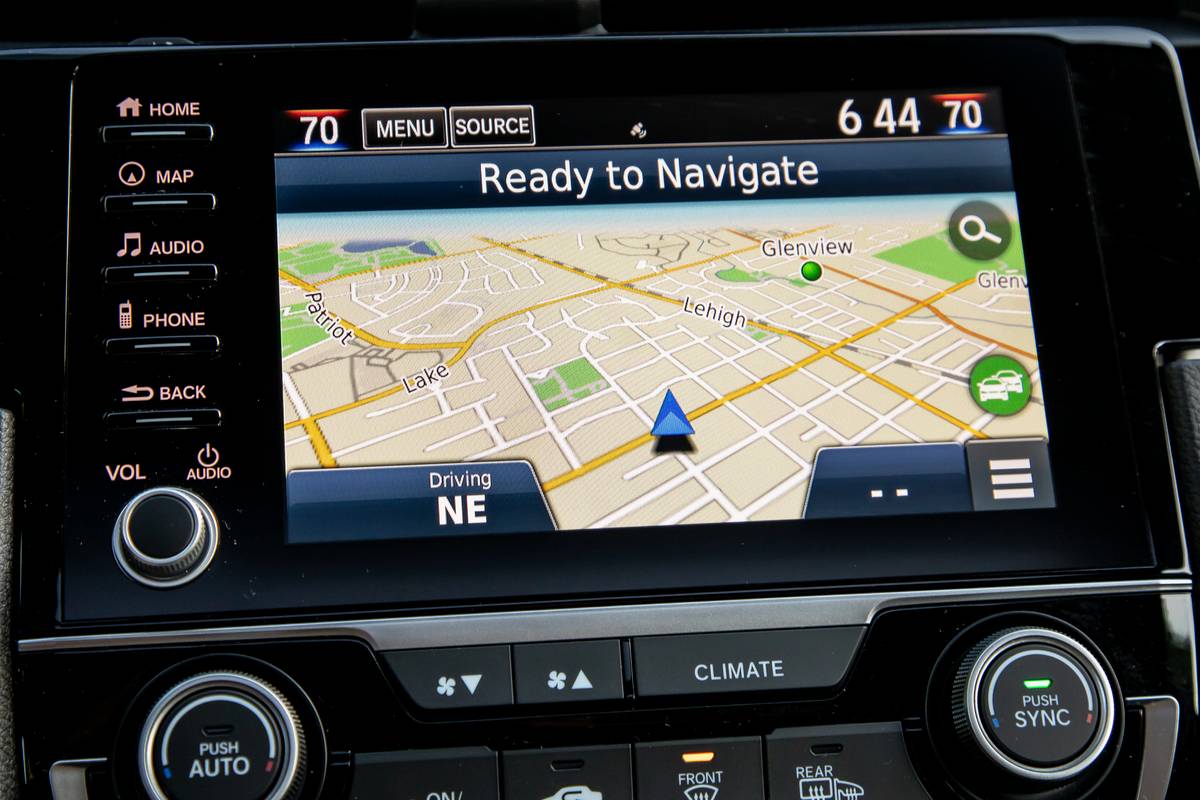
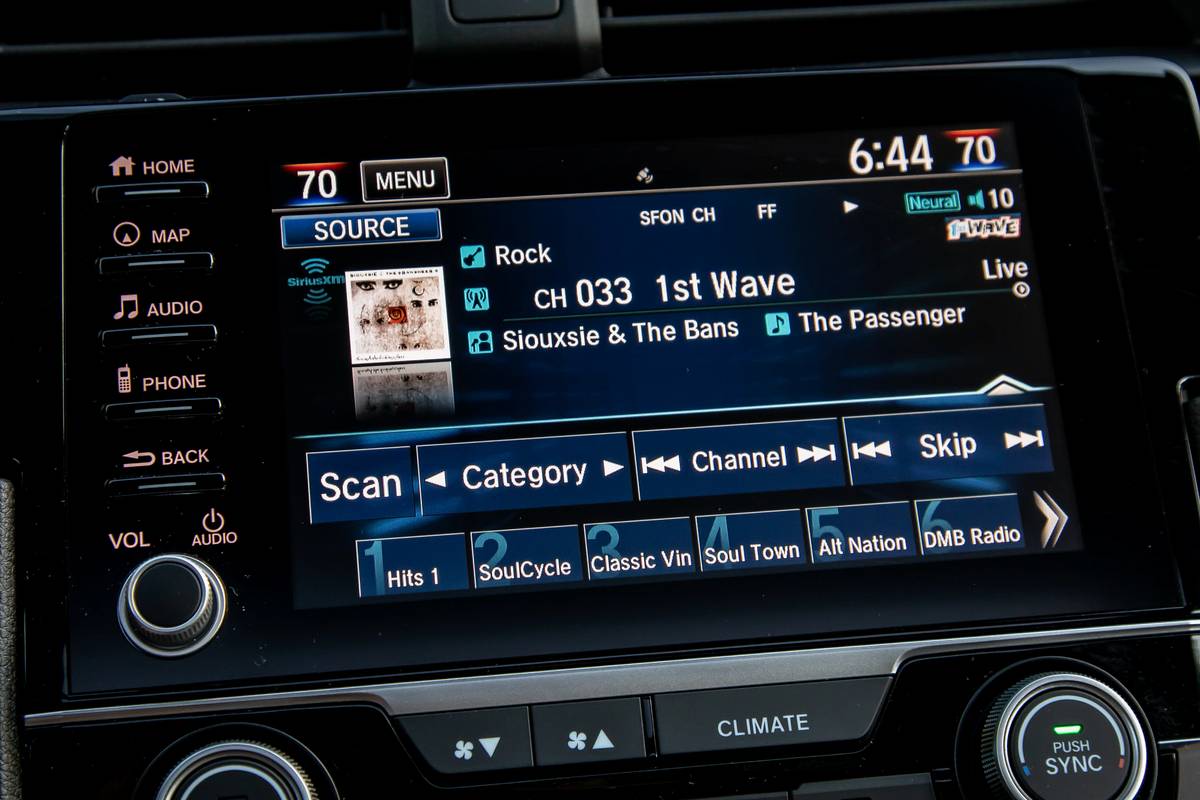
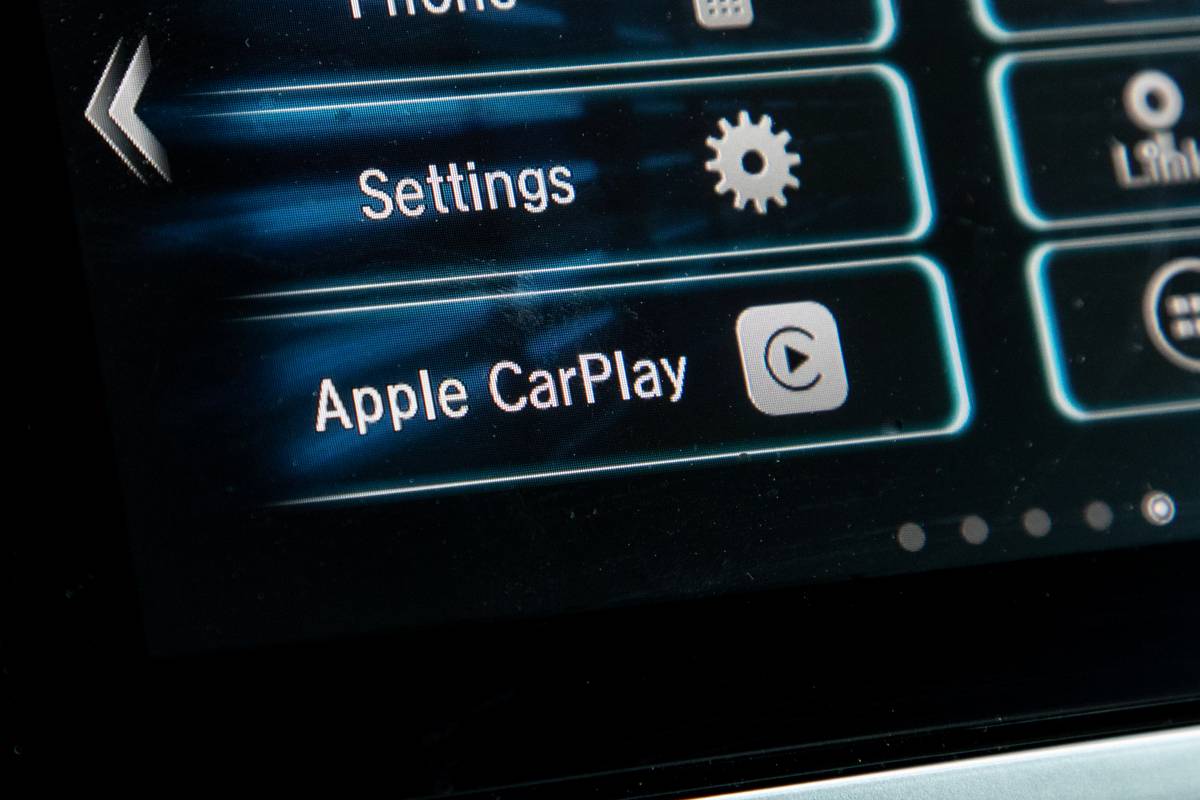
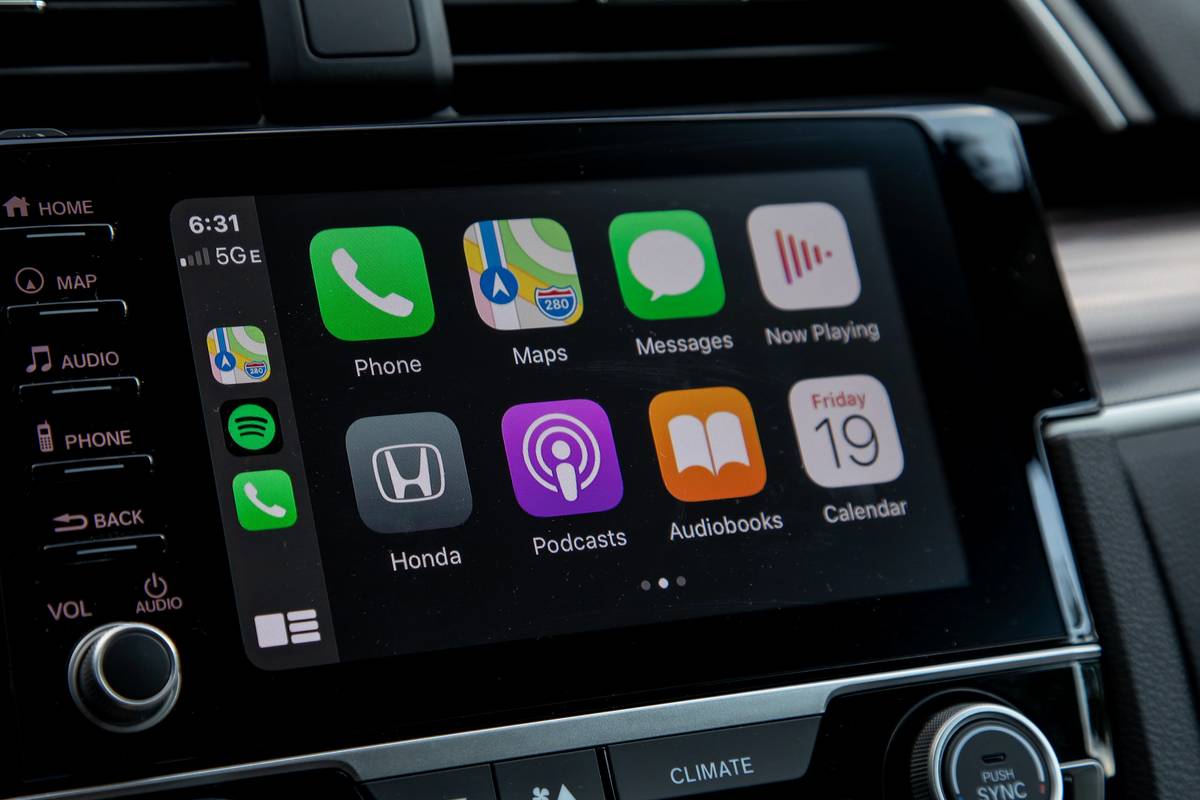
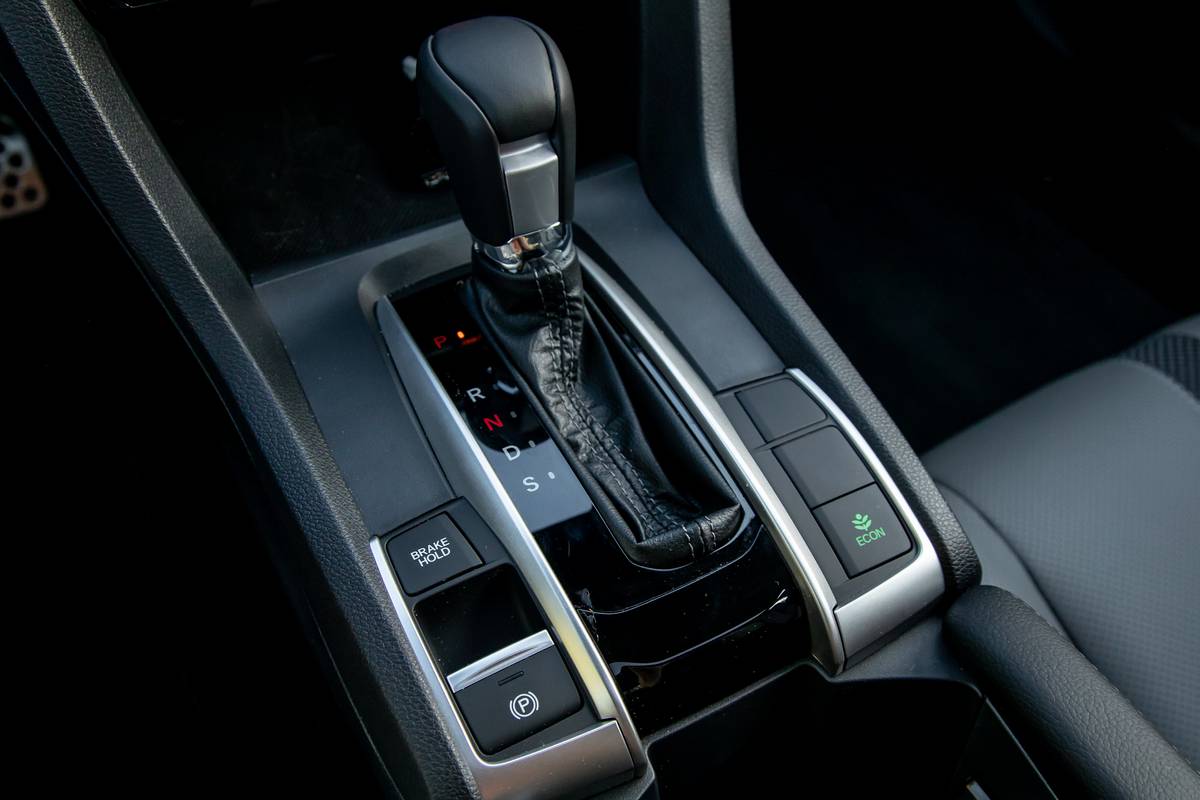
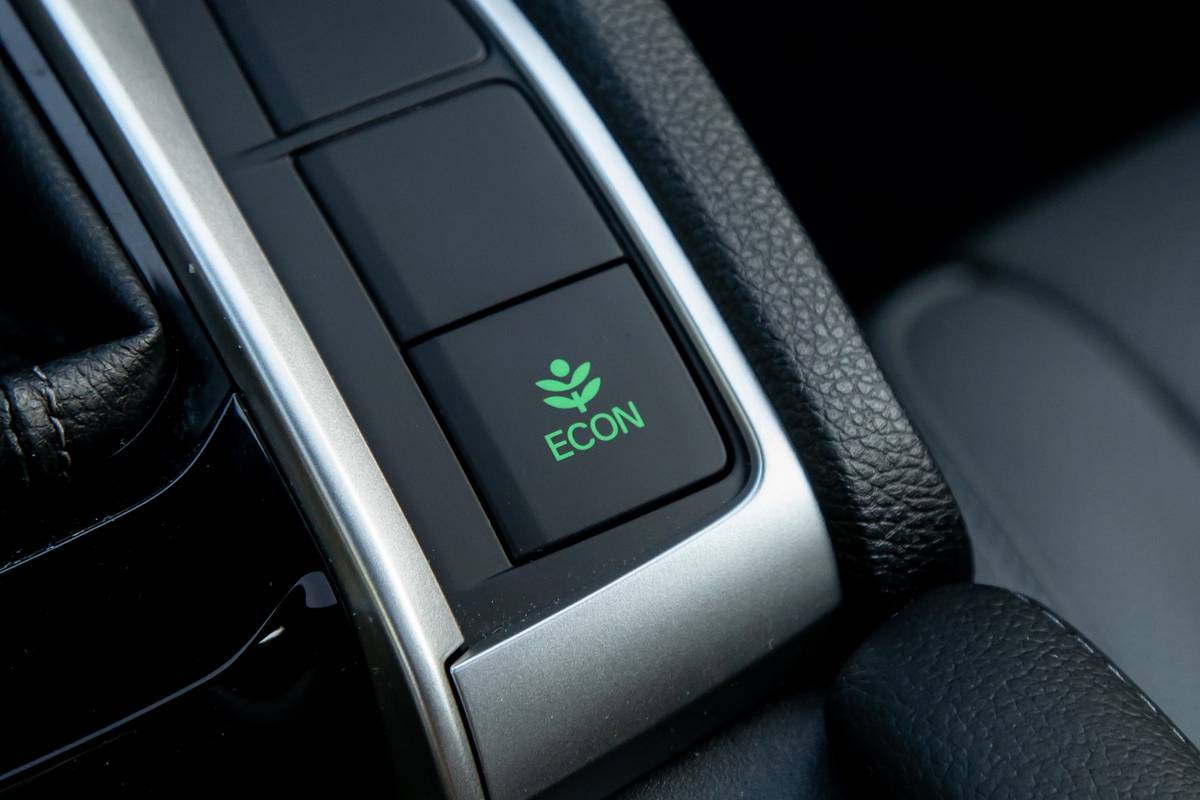
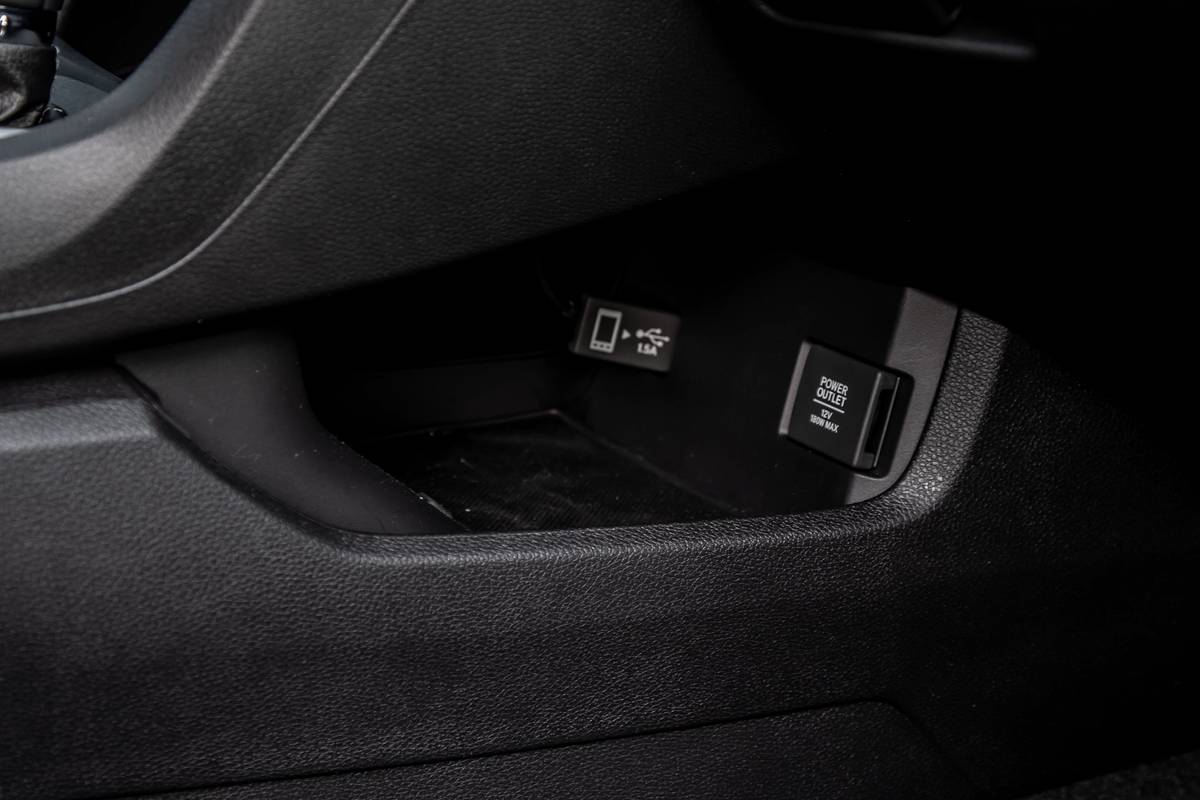
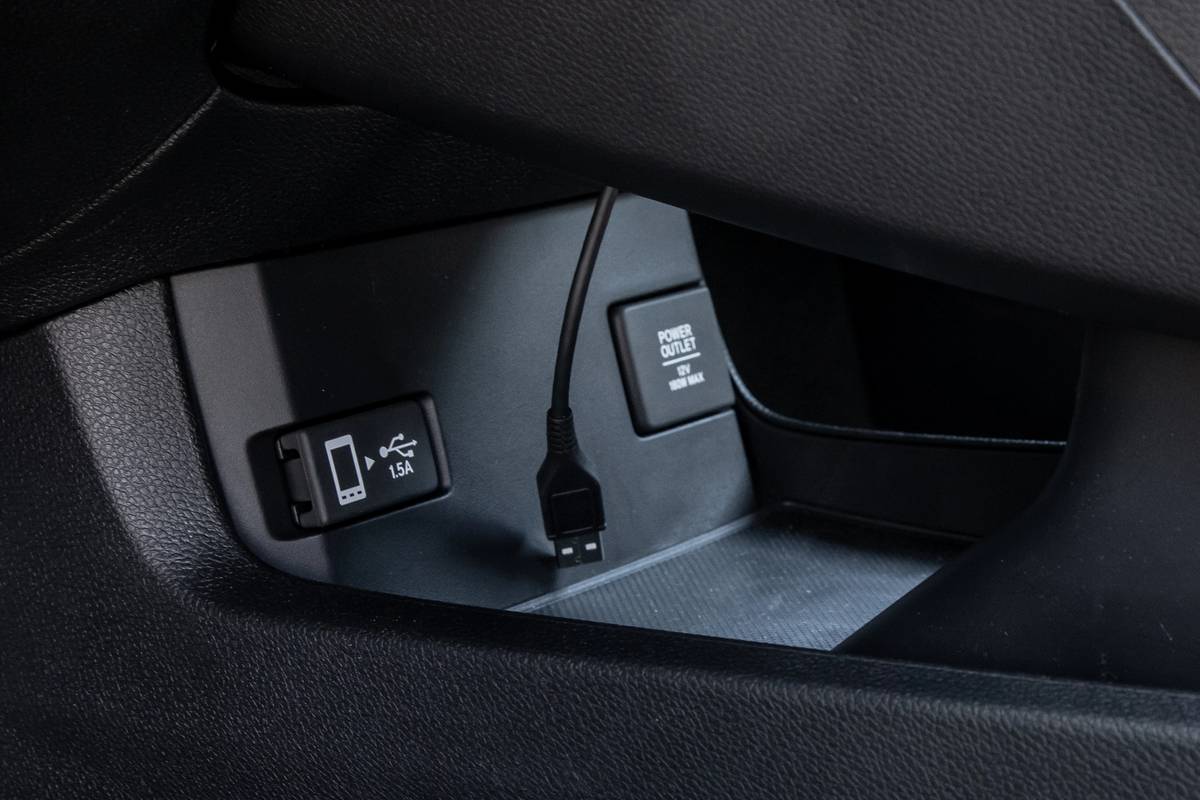

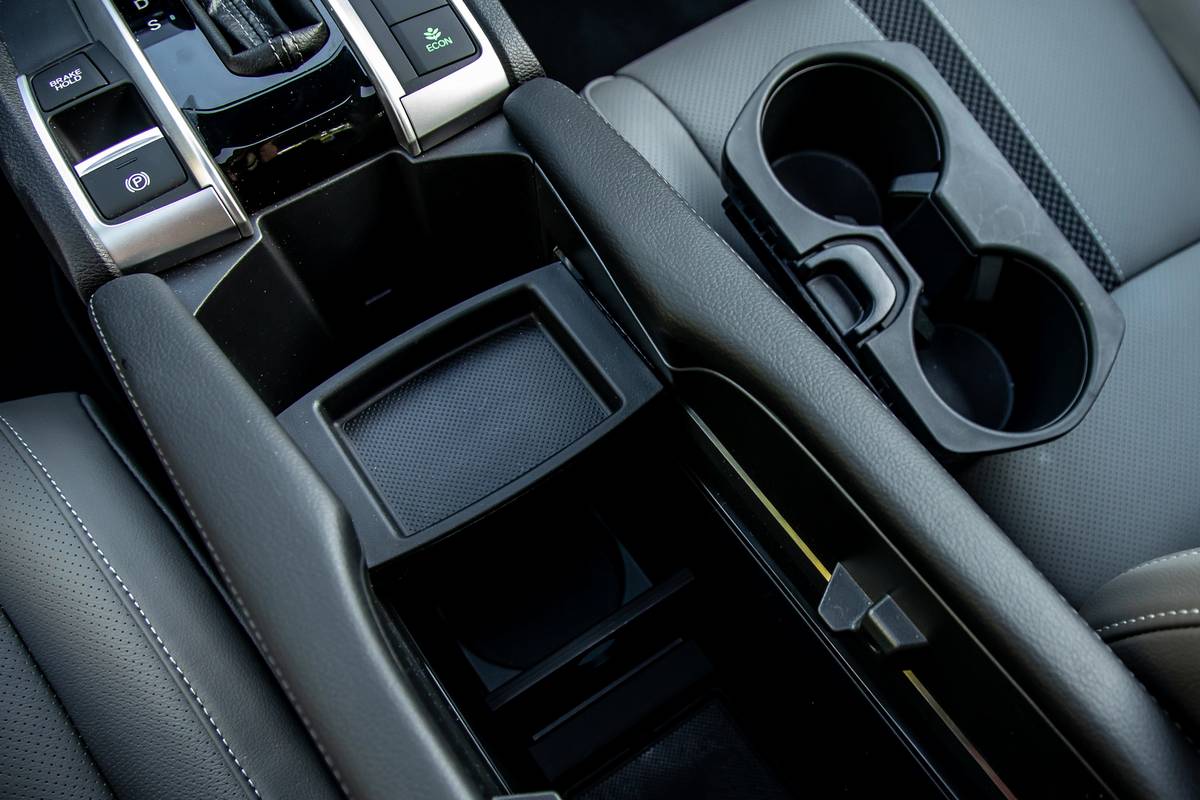
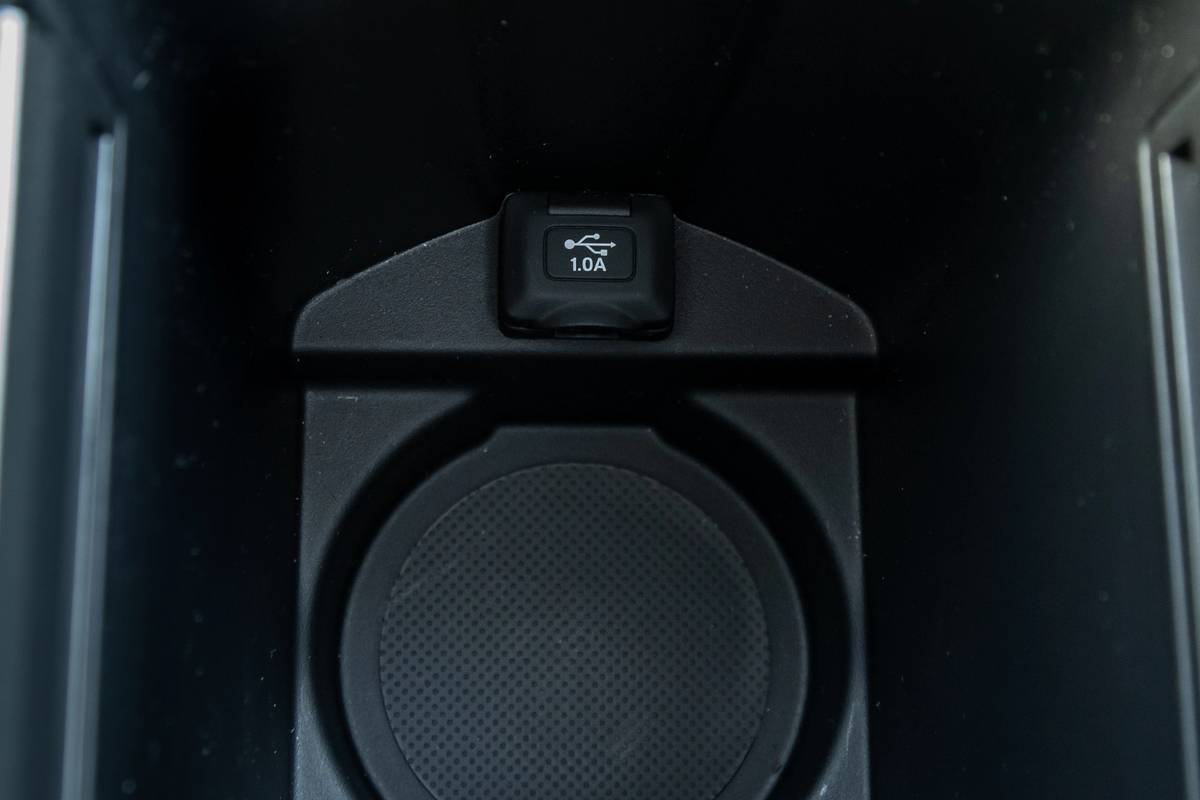
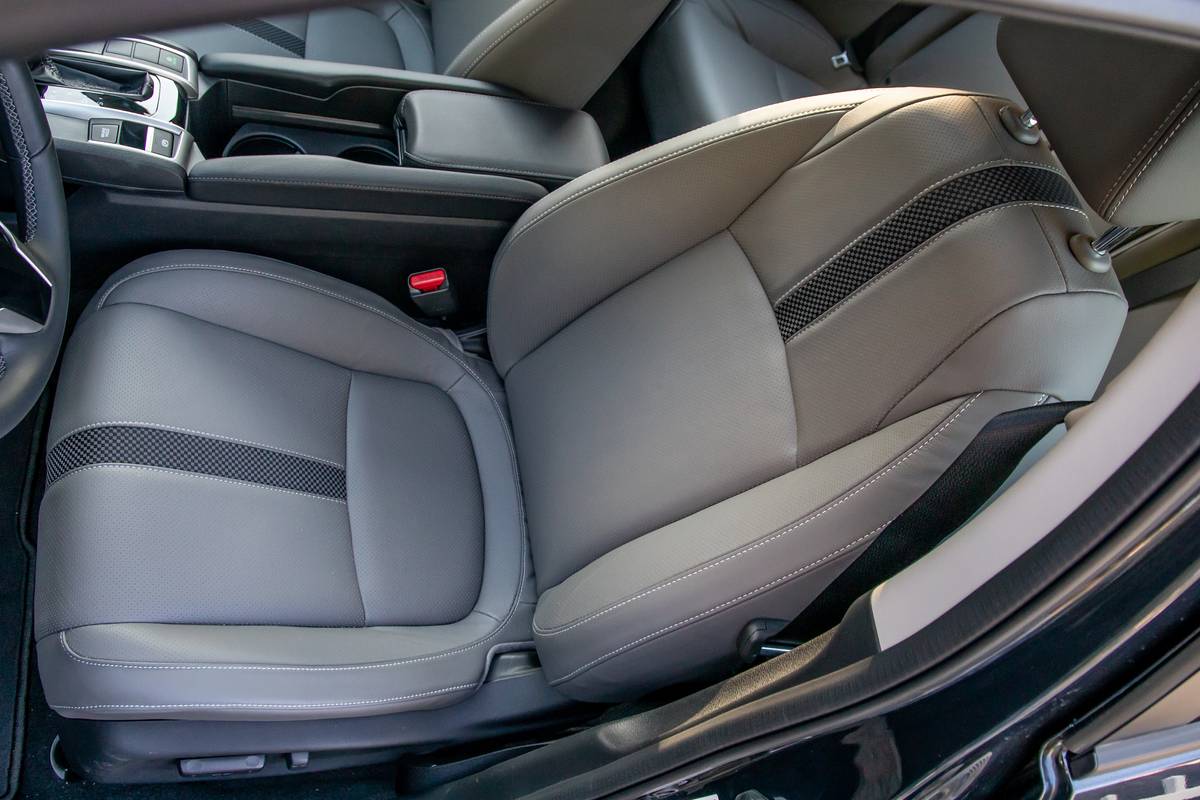
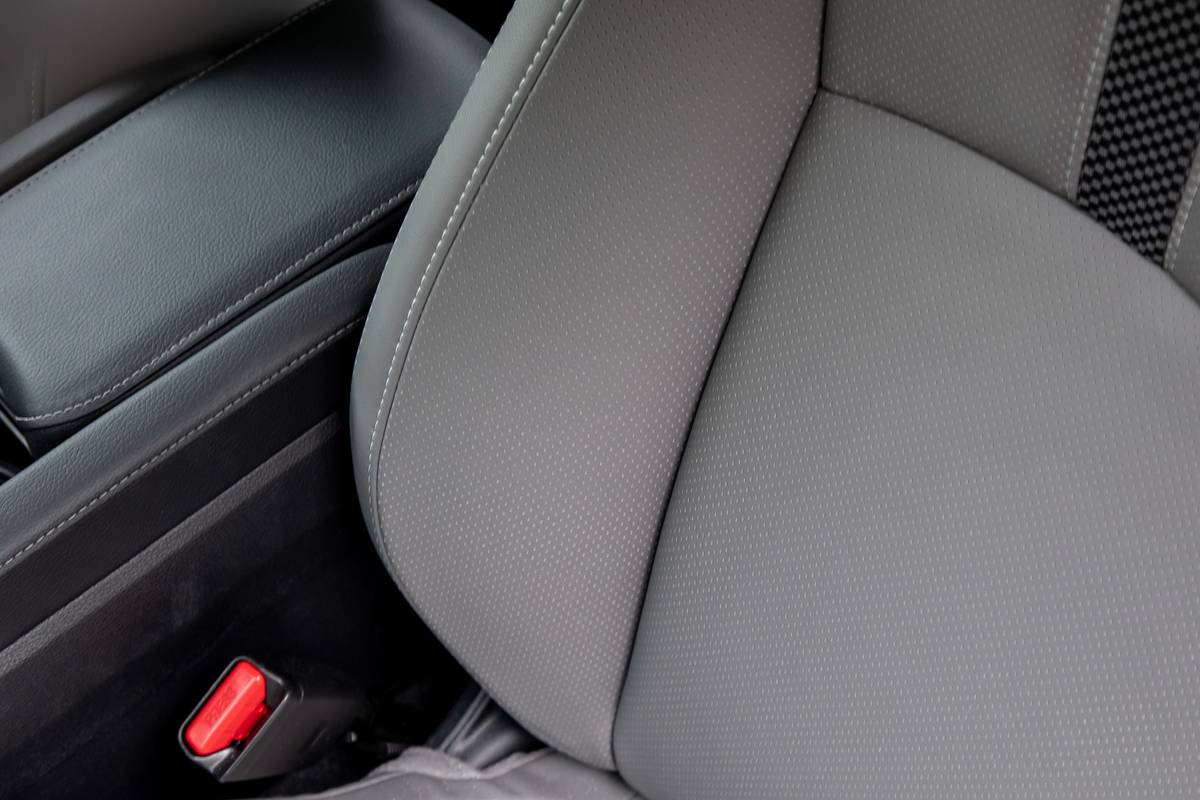
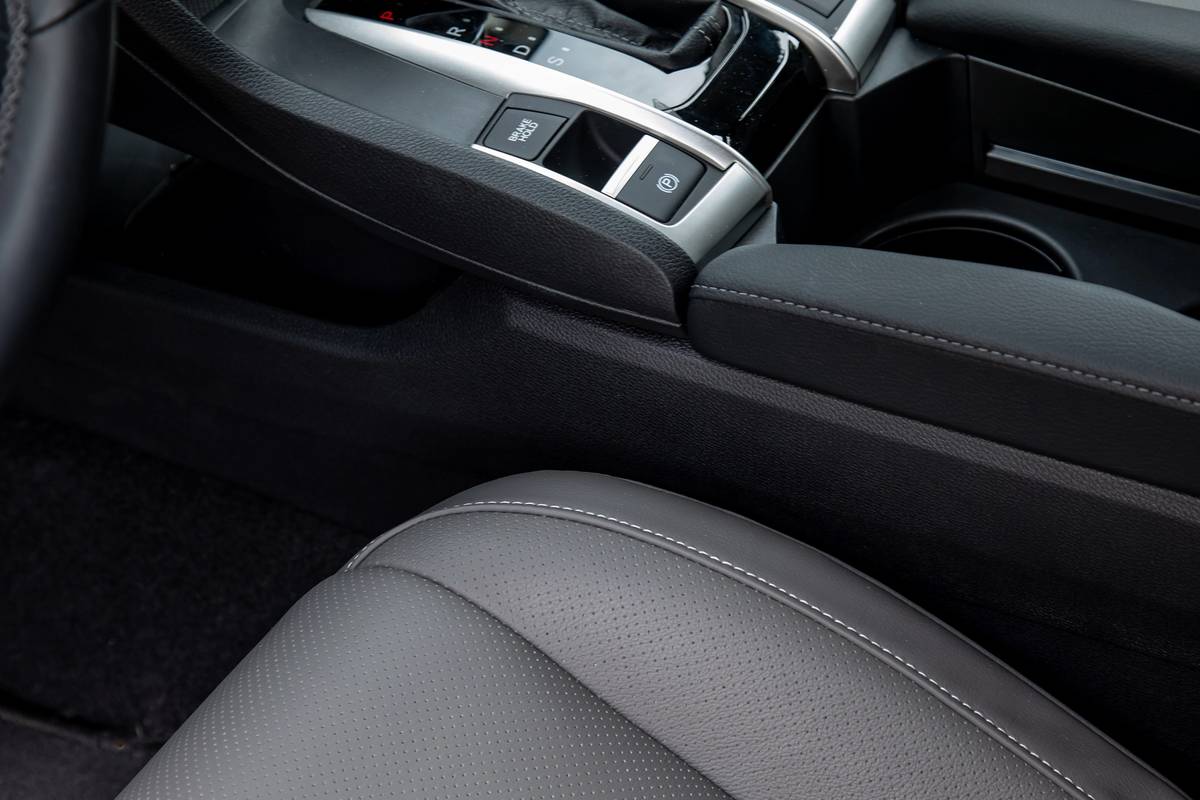
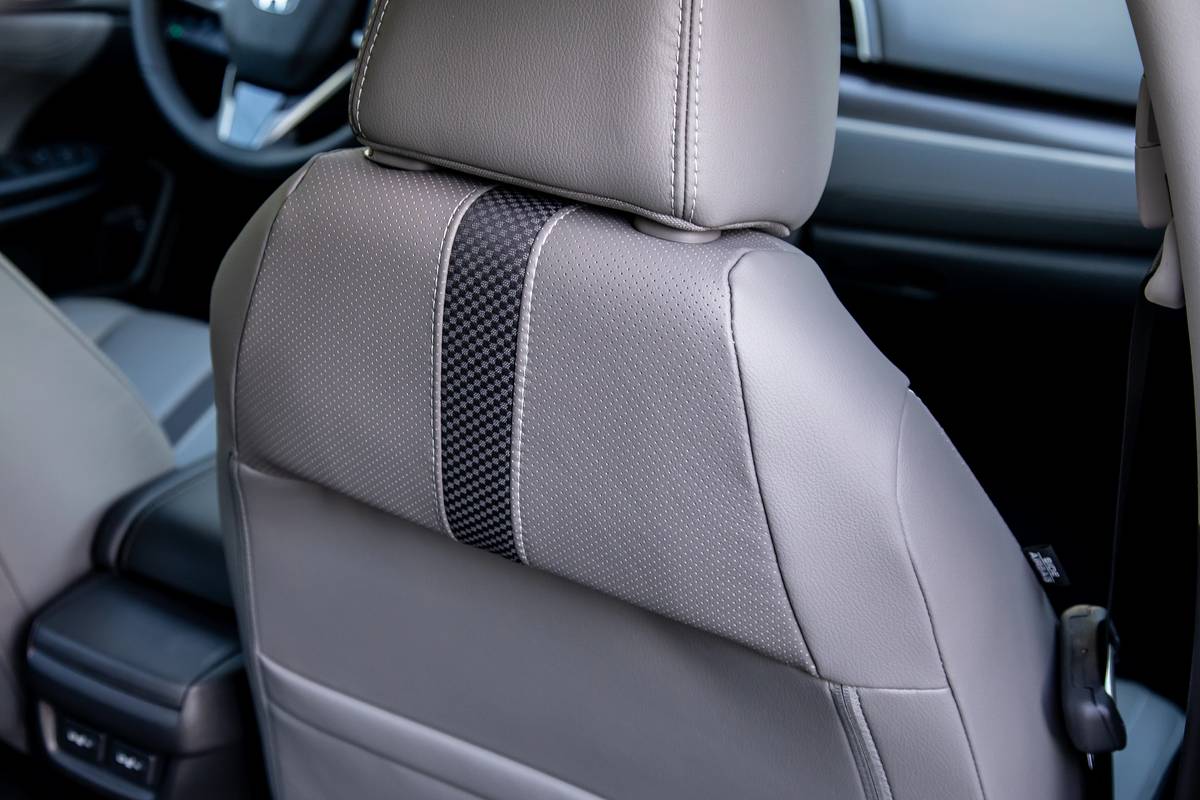
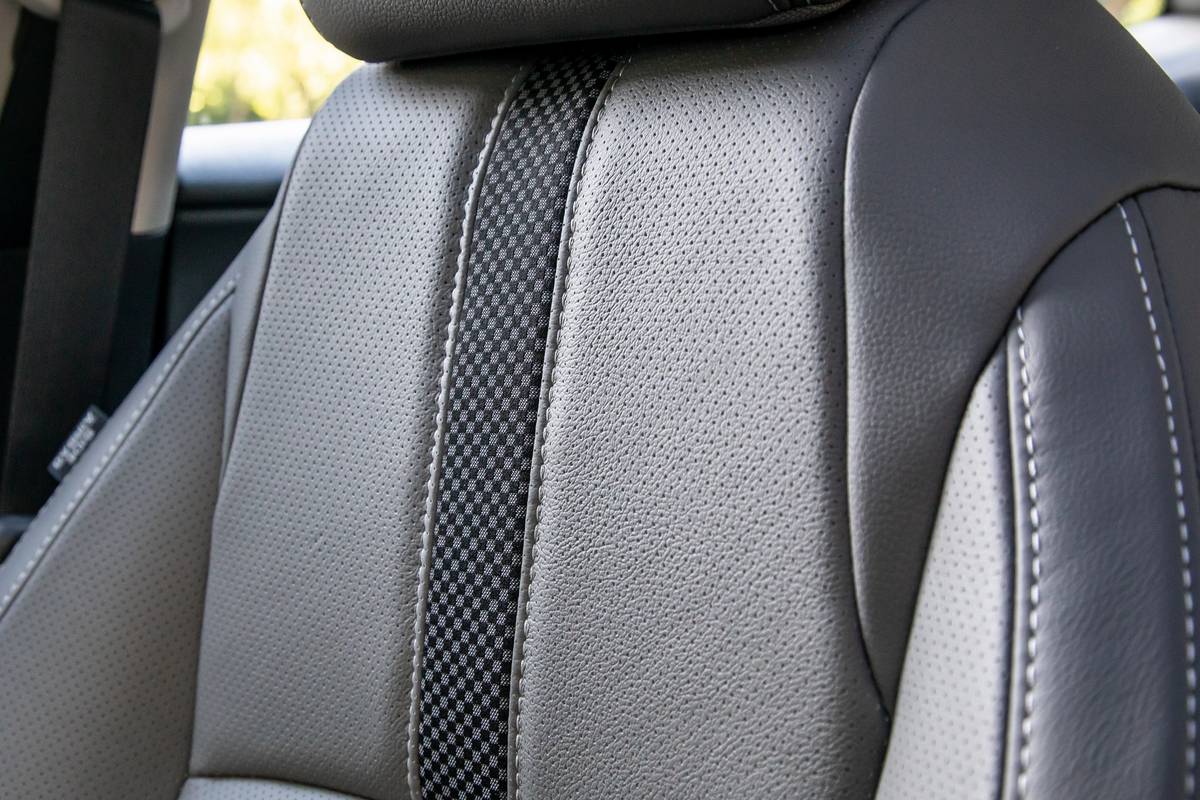
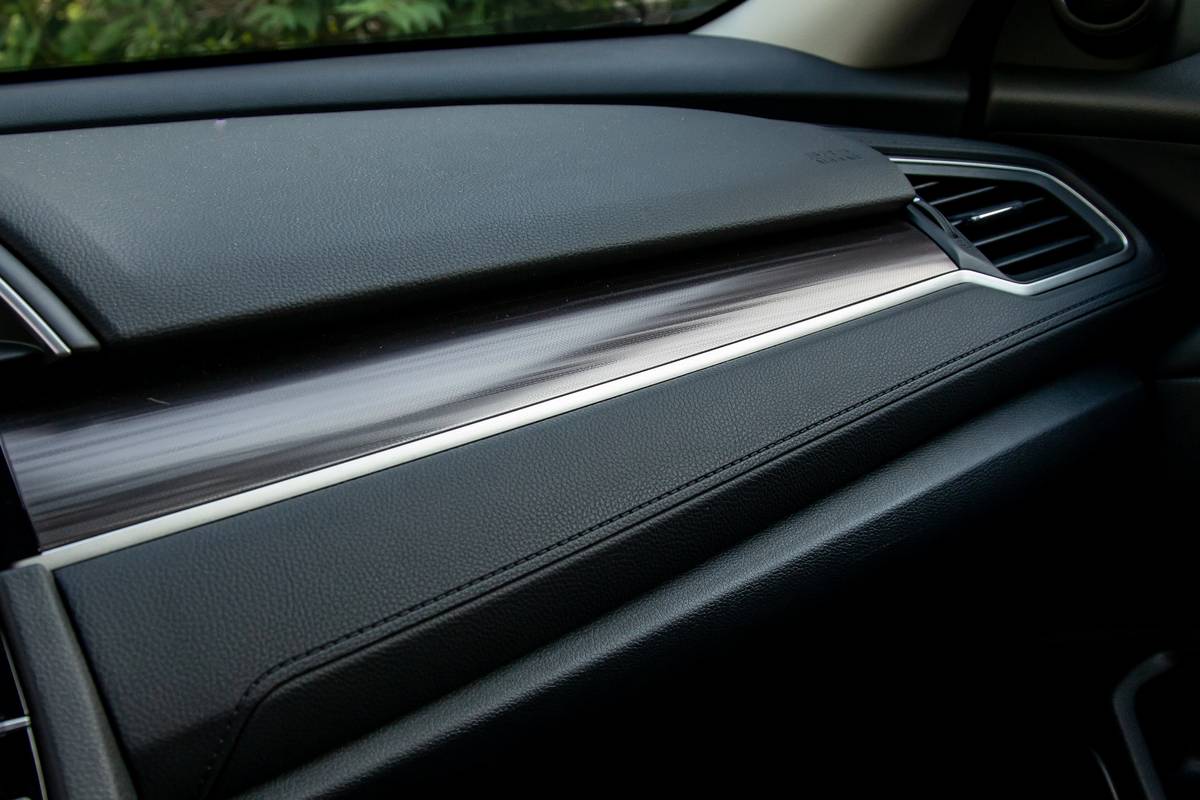
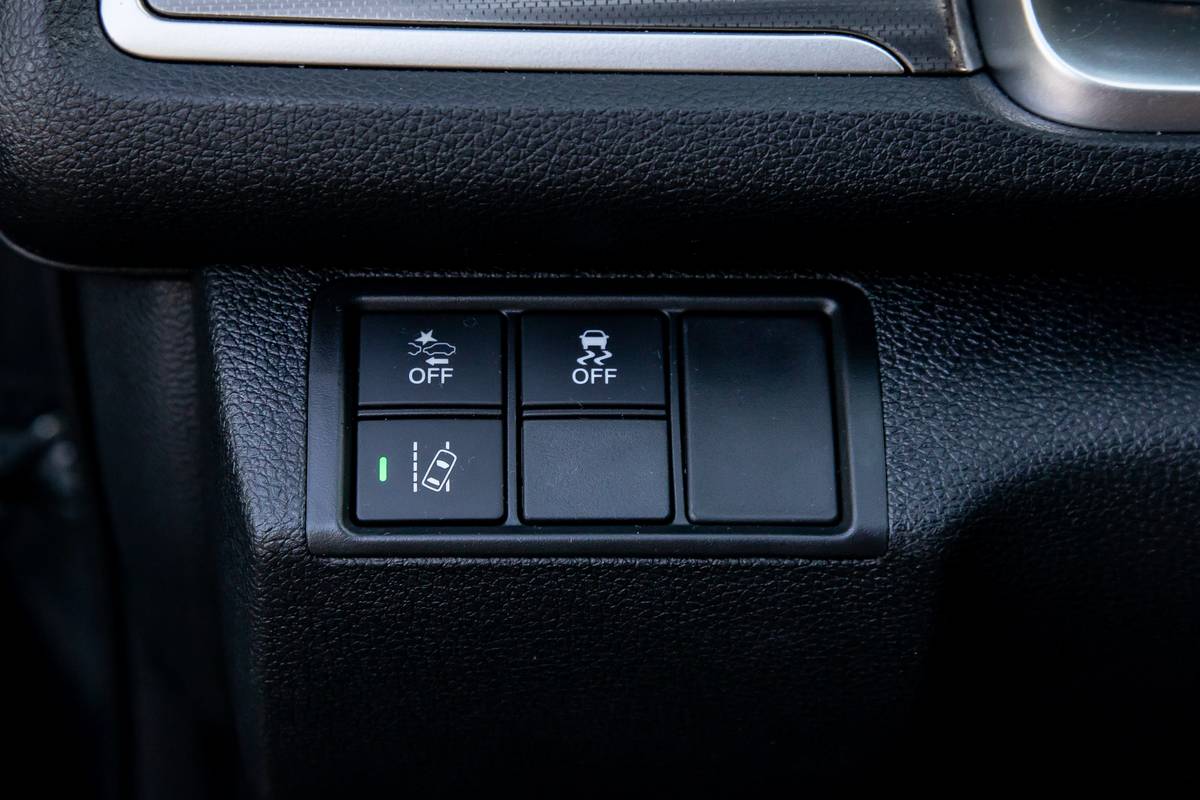
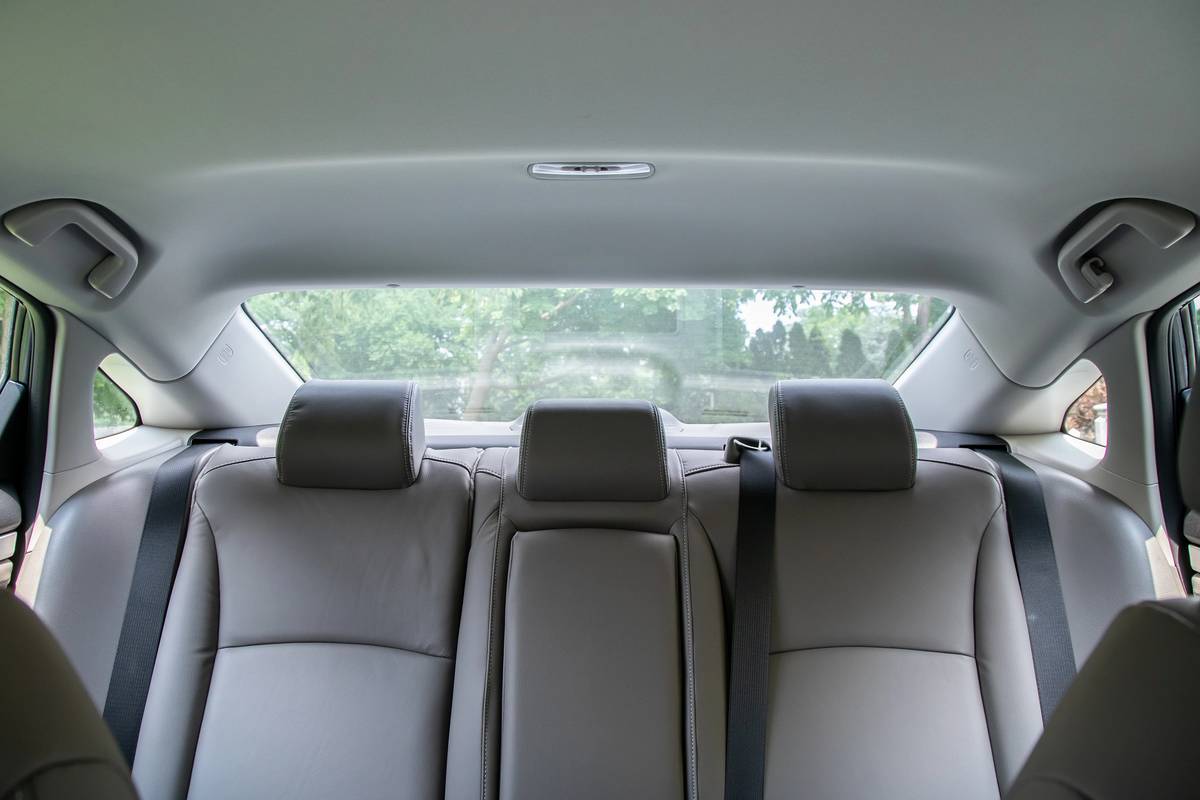
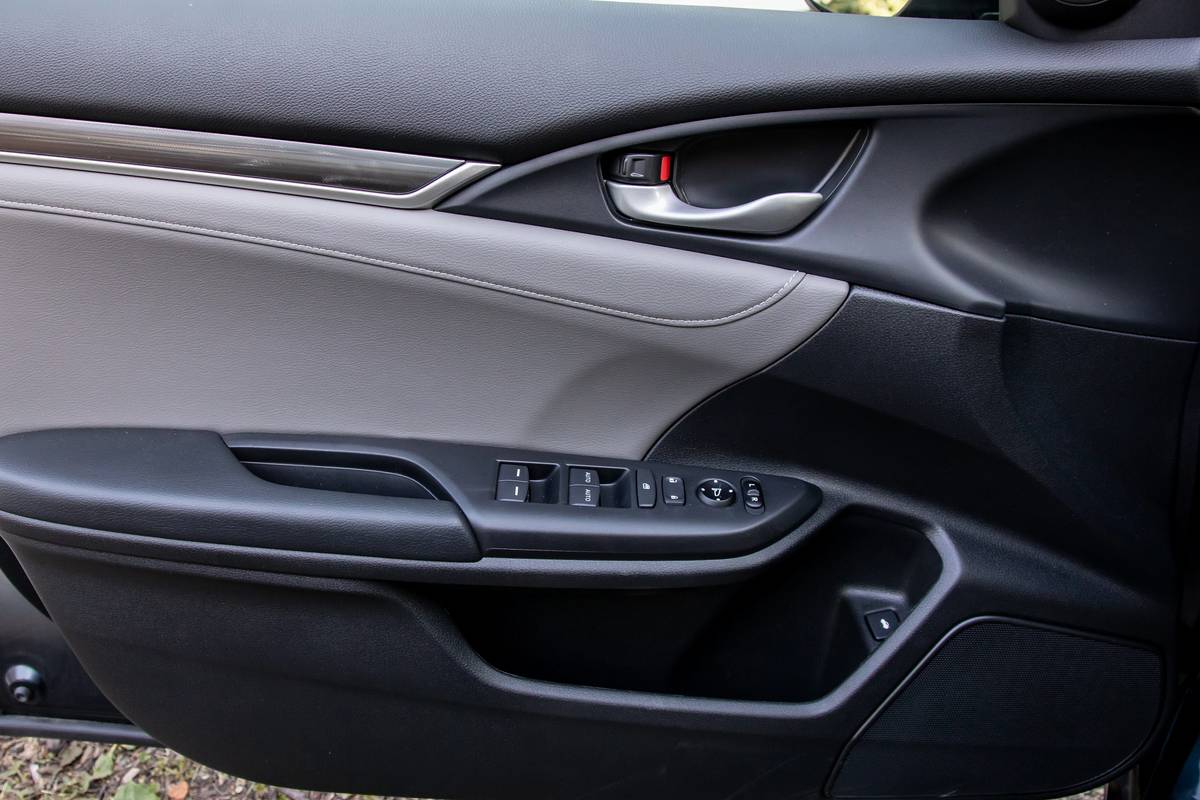
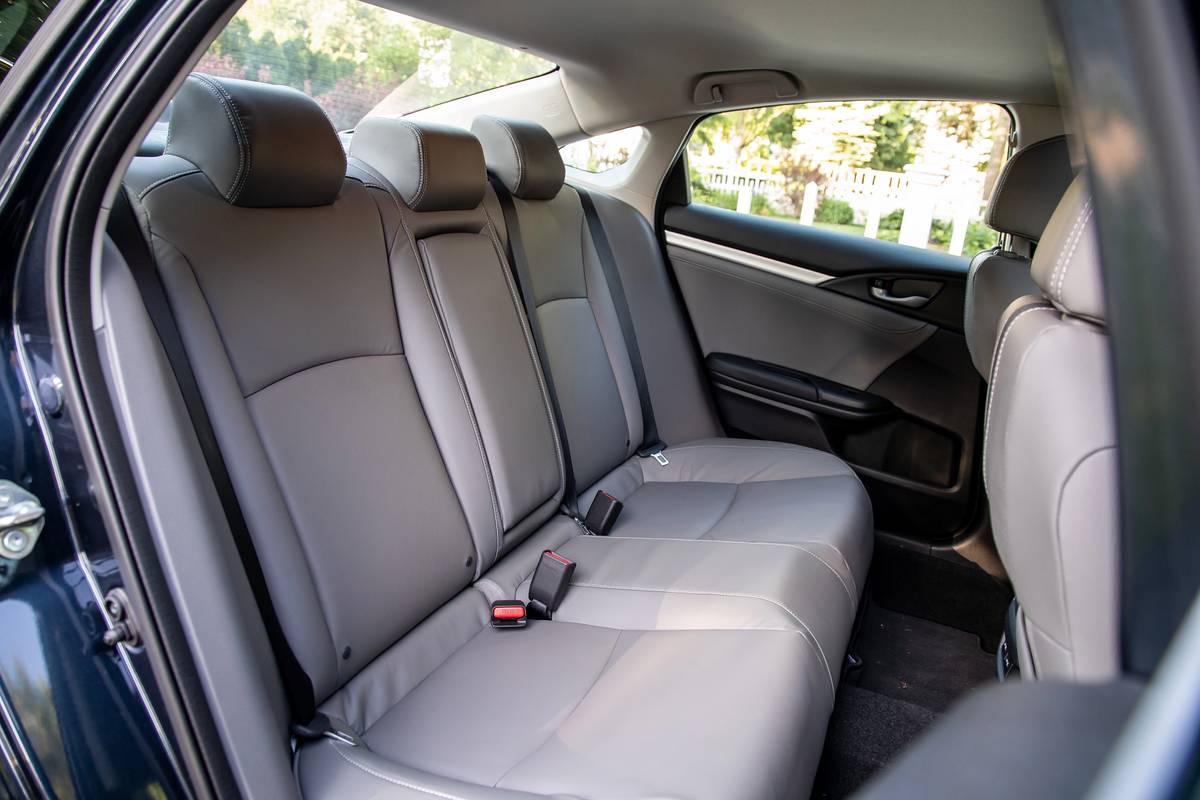
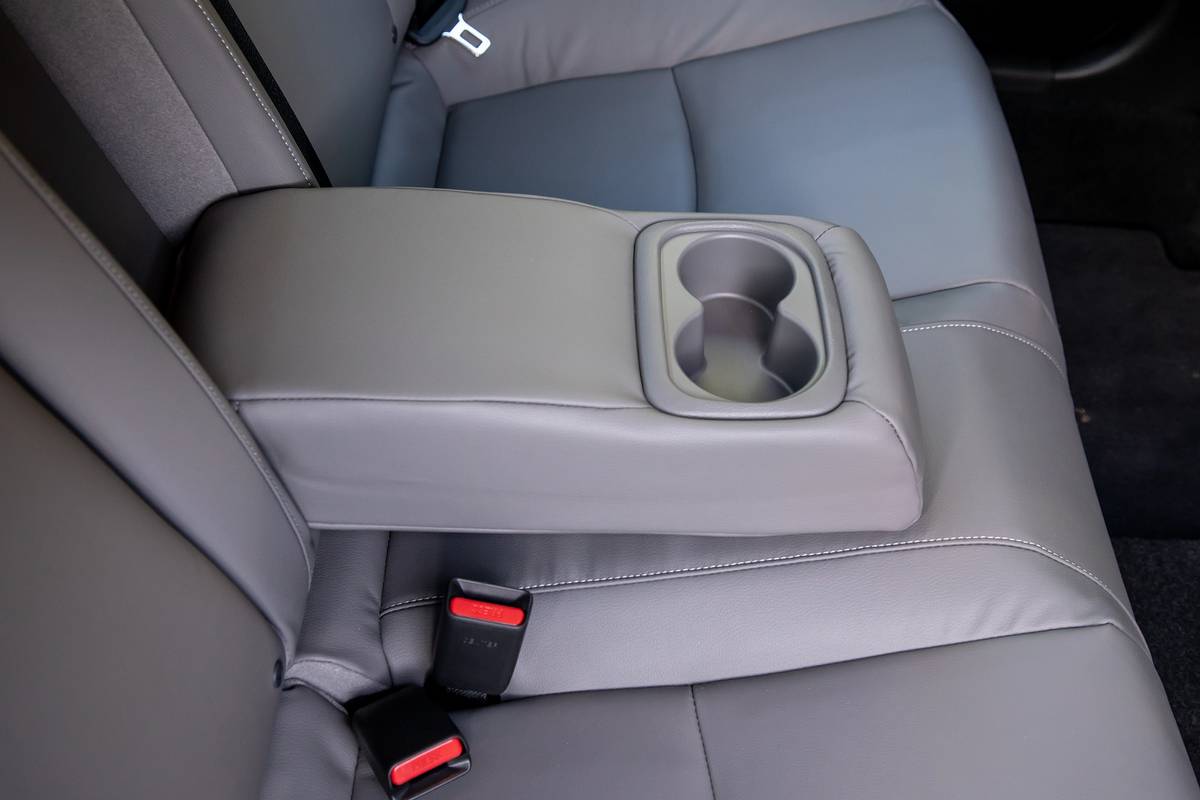
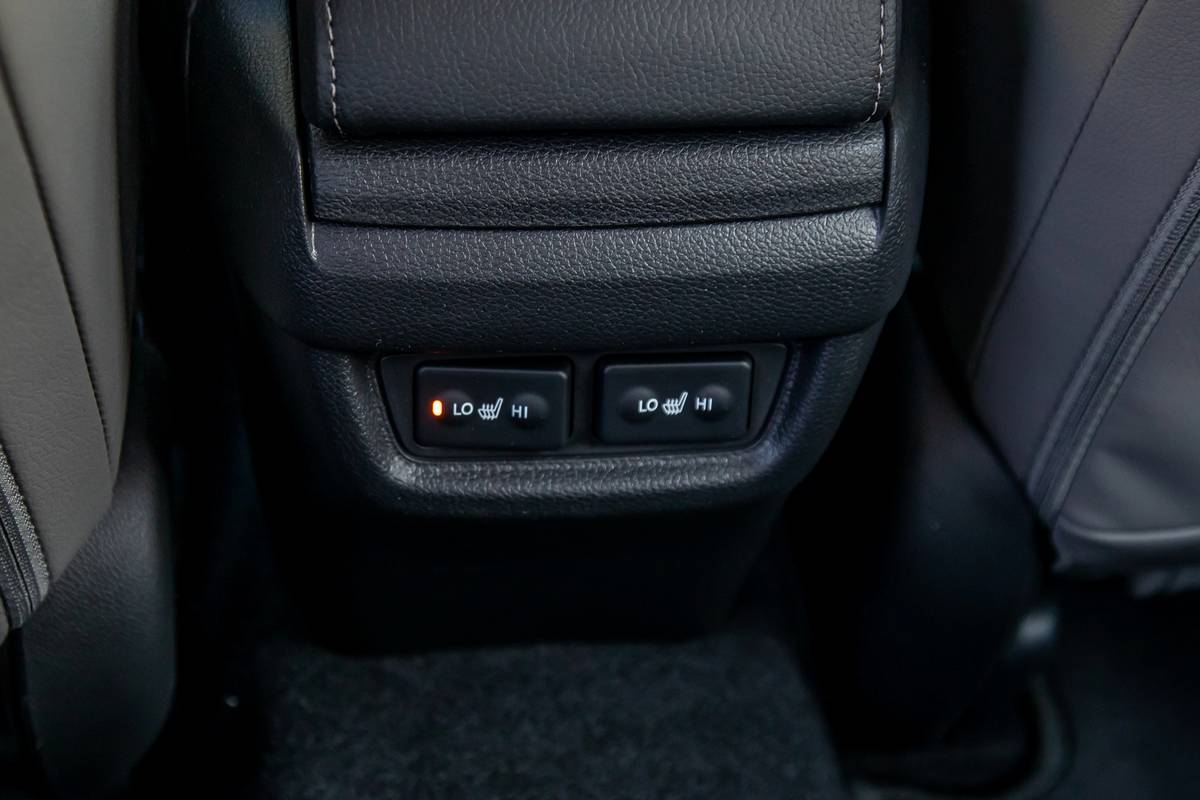
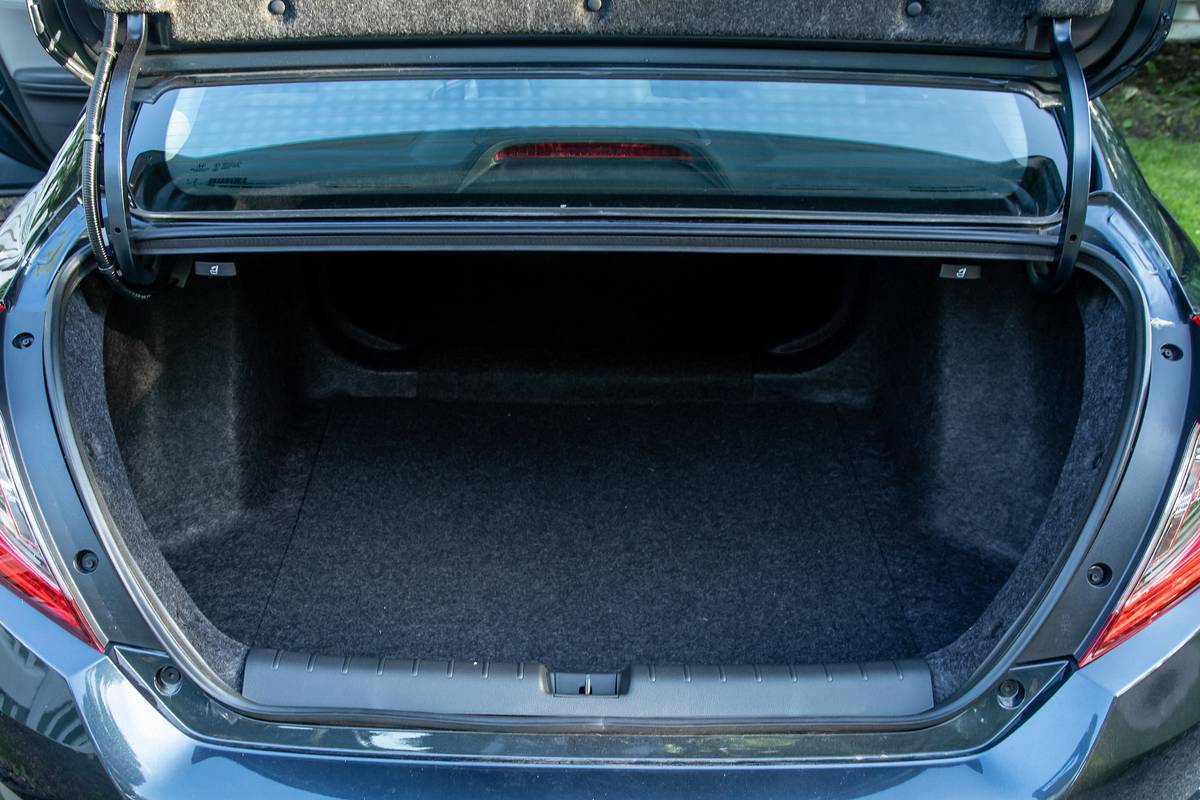


















































Our Test Vehicle
As-tested price: $28,530
Powertrain: 174-hp, turbocharged 1.5-liter four-cylinder; continuously variable automatic transmission; front-wheel drive
Estimated city/highway/combined mpg: 30/38/33
Typical of Cars.com Challenge winners, the 2020 Honda Civic pulled it off with solid showings in many areas plus a few knockout blows. It topped seven judging categories outright and lost just two — but its aging controls interface makes a worse impression with each passing year.
The Good
Handling: To say the Civic’s firm ride pays off in its excellent dynamics would sell short other aspects of its overall handling, including quick, precise steering with satisfying turn-in and superior feedback. But the suspension tuning probably contributes to how flat the sedan corners and how balanced it feels, front to rear. The platform feels like it could handle even more (as we know it does in the Civic Si and Civic Type R). This was one of the Civic’s biggest category wins and one of the most distinguishing characteristics in the whole test.
In-cabin storage: Another of the biggest differences among the three cars, the Civic stood out for its execution in almost all aspects. Its configurable storage box underneath the sliding center armrest includes a sliding cupholder module and a separate shallow tray. Aside from its versatility, the box is deep and voluminous, some 33% larger than the Sentra’s, which itself is roomy and a bit wider. The Honda is also more generous with open storage spaces, such as in front of the shifter and a bonus area under the console. We also judged nine usable cupholders in total, where the Sentra had eight.
Backseat: Similar to the front seats, our scoring accounts for roominess, comfort and amenities, and the Civic dominates with more backseat legroom than the others. Its backseat is closer to the floor than the others, which in some cases can force passengers to sit on their tailbones with knees raised, but here the extra legroom helps by letting you stretch your legs forward. Our Civic got extra love for having the only heated backseat in the test.
Front seats: The Civic’s win comes in part because of its inclusion of the only powered front passenger seat of the three contestants and despite its lack of the driver’s lumbar adjustment both competitors had. Though its specifications suggest less headroom than the others, one judge discovered better headroom in practice, in part because the seats sit lower than in the competitors even when raised all the way. Note that one’s impressions of headroom depends on how you like to set the seat, and both judges prefer to sit high. By the same token, one judge found the dashboard imposed a knee-ramming bulkhead on his inboard side, but drivers who sit farther back might not run into it.
Child-seat accommodation: In evaluations of child-seat accommodations by Cars.com’s certified car-seat technicians, the Civic took the lead for having head restraints that didn’t interfere with car-seat fitment, a problem in the other two sedans. See the full 2020 Honda Civic Car Seat Check.
Interior quality: The Civic’s tie for first with the Sentra says as much about the Corolla, which really left things to be desired. If you zero in on the leather upholstery itself, the Civic’s seems higher-quality than the Nissan’s, and the Honda’s headliner (the cloth lining the ceiling) is woven rather than today’s evolved version of mouse fur as in the other two cars. Both cars had a quality feel to their various switches, buttons and stalks compared with the Corolla.
Braking: In the absence of instrumented testing, we judged braking subjectively, and the Civic rose above because its braking felt stronger overall and inspired more confidence while delivering the acceptable linearity and pedal feel of the Sentra.
Value: Though it ranked second of three, the Civic deserves notice for scoring within a few points of the top-ranked Sentra despite an as-tested price $3,730 higher, just $264 less than the bottom-rated Corolla. Unlike the Corolla, the Civic offset its higher price with many features the Corolla lacked: key fob remote start, auto-dimming rearview mirror, HomeLink, Android Auto, an electric fuel-door release, dual-zone climate control, leather upholstery, a power passenger seat, rain-sensing windshield wipers and more.
The Bad
Powertrain: When the lightest car with the most power loses, you know something’s up, and that’s definitely the case here. The Honda’s available turbocharged 1.5-liter didn’t tap into its 174 hp and 162 pounds-feet of torque until it had gotten rolling — a common characteristic of Honda’s four-cylinder/CVT pairings. The Civic was eager to add more speed once already in motion, but that lag from a standstill proved too frustrating for the judges, who graded it 1 point overall below the modestly powered Sentra, which ranked second.
Ride quality: It’s not impossible for great ride and handling to coexist in the same car, but it didn’t happen in this contest. The Civic was a different experience entirely from the other two models, with lots of bounciness over imperfect pavement. The suspension isn’t unsophisticated, but its firm tuning gives a more characteristic small-car impression even though all three contestants are dimensionally similar. Our impression is that this driving trait is one of the biggest divides among our competitors — along with the superior handling that will redeem the Civic for some shoppers.
Vehicle user interface: The Civic shares the basement with the Corolla in this category, but for different reasons. Where its competitors have 8-inch touchscreens teamed with volume and tuning knobs, the Honda has a 7-inch touchscreen and lacks the tuning knob altogether, and its menus and graphics seem outdated and require too many steps. By contrast, the Toyota’s failings are tied partly to the size and quality of its buttons and knobs.
Multimedia apps and sources: The Civic ranked second in this category thanks to its inclusion of both Apple CarPlay and Android Auto along with built-in navigation, but it was the only contestant without an analog audio input jack, and it had just two USB ports, both in front — neither of which could be termed a charging port. Yes, they do charge, but at only 1.0 amp (the one for smartphone features) and 1.5 amps (for data but not CarPlay or Android Auto). Dedicated charging ports typically provide more than 2 amps and charge faster.
One-side blind spot protection: Though we appreciate blind spot cameras like Honda’s LaneWatch, the Civic provides it only on the passenger side. Other automakers have proved it possible to show either side, and the competitors in this test employ conventional radar-based blind spot warning, which also accounts for both sides.
Cars.com’s Editorial department is your source for automotive news and reviews. In line with Cars.com’s long-standing ethics policy, editors and reviewers don’t accept gifts or free trips from automakers. The Editorial department is independent of Cars.com’s advertising, sales and sponsored content departments.
Featured stories
















































